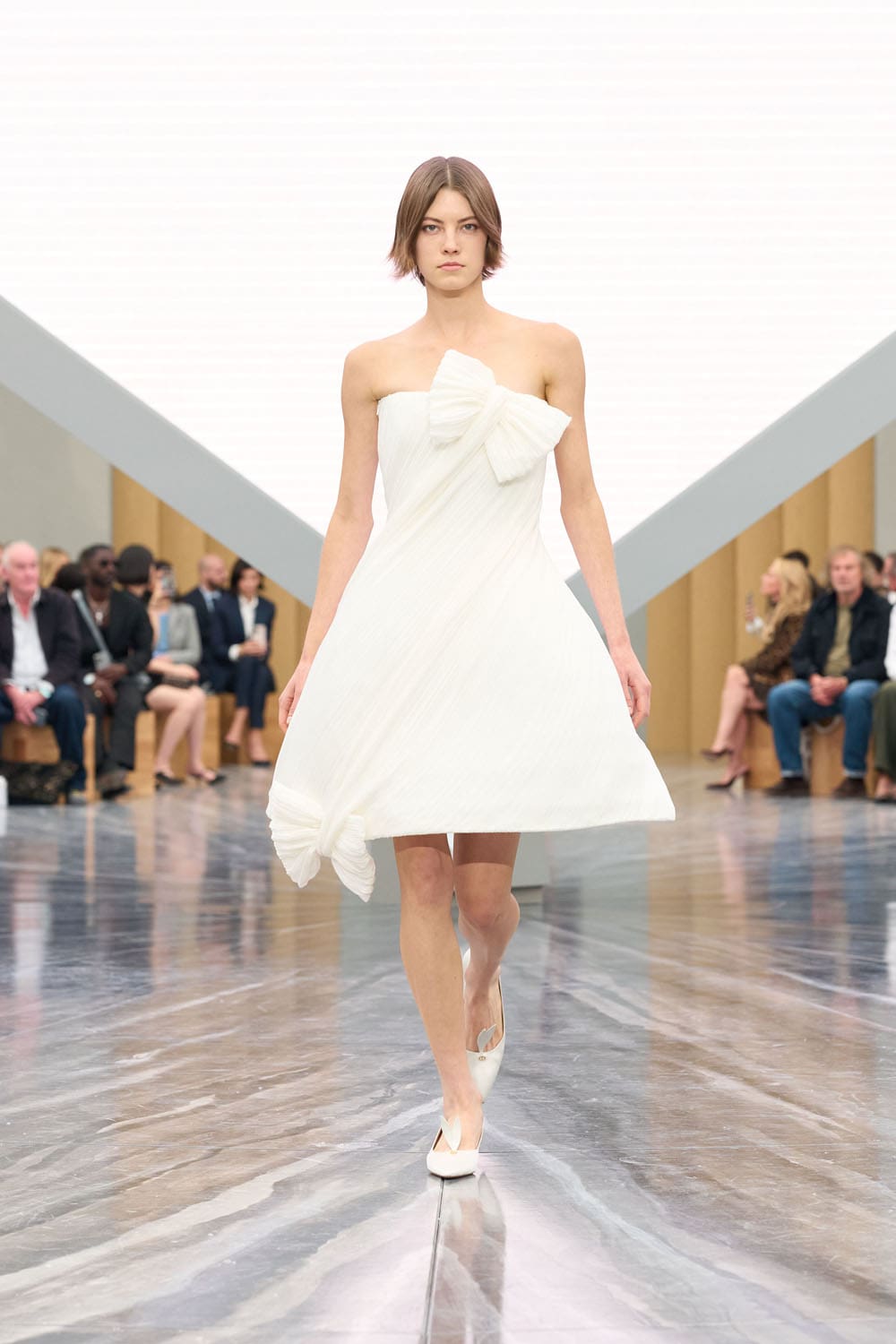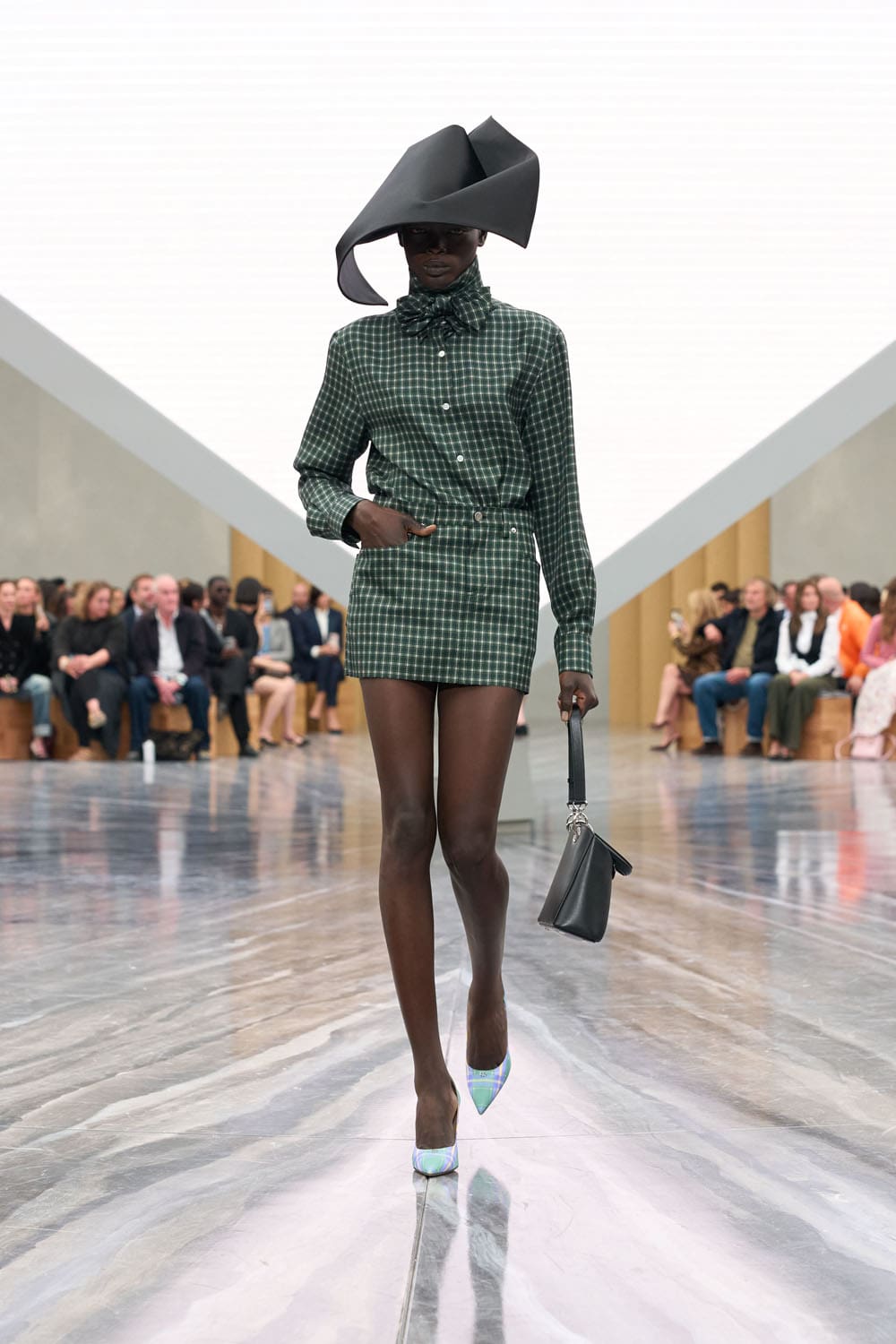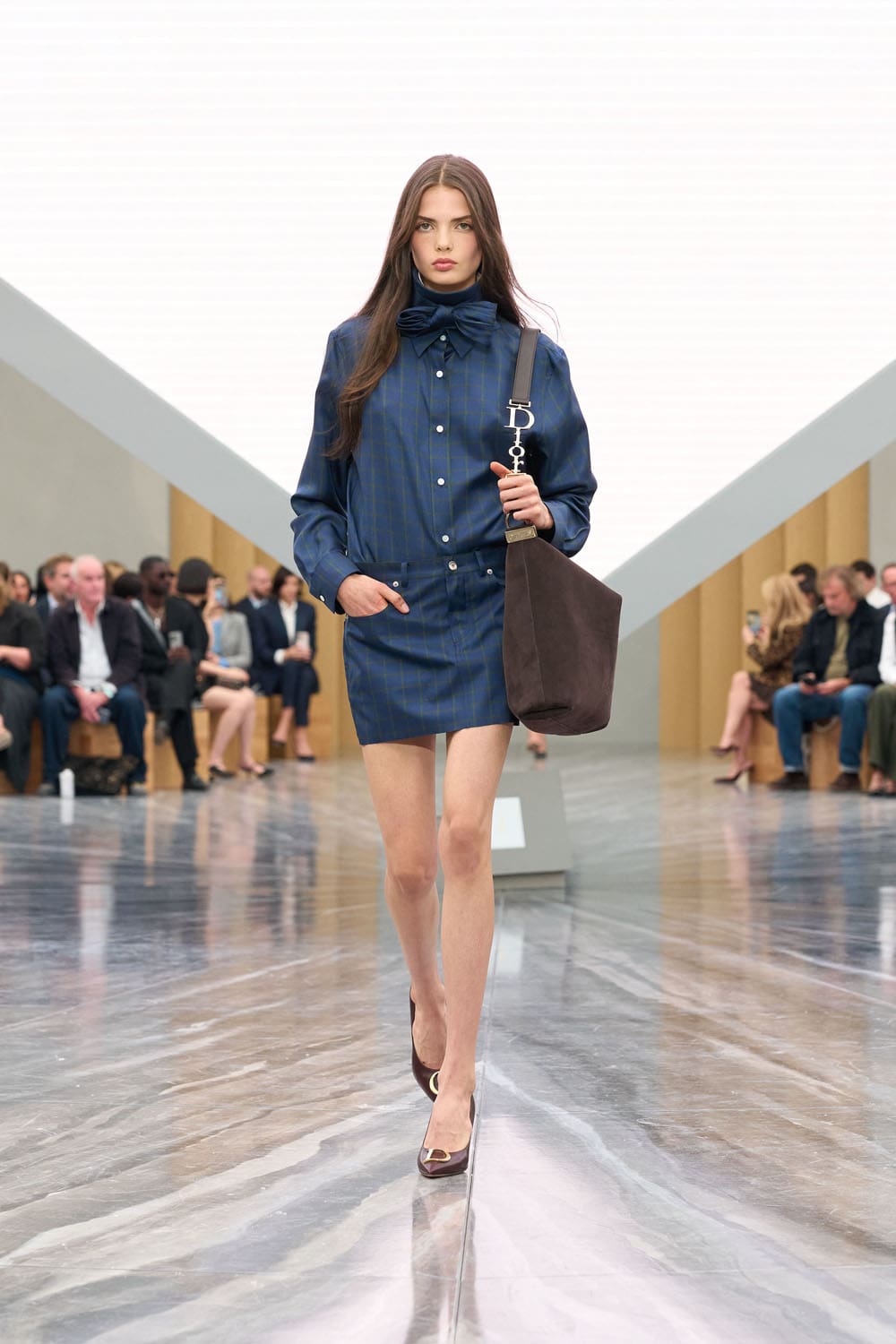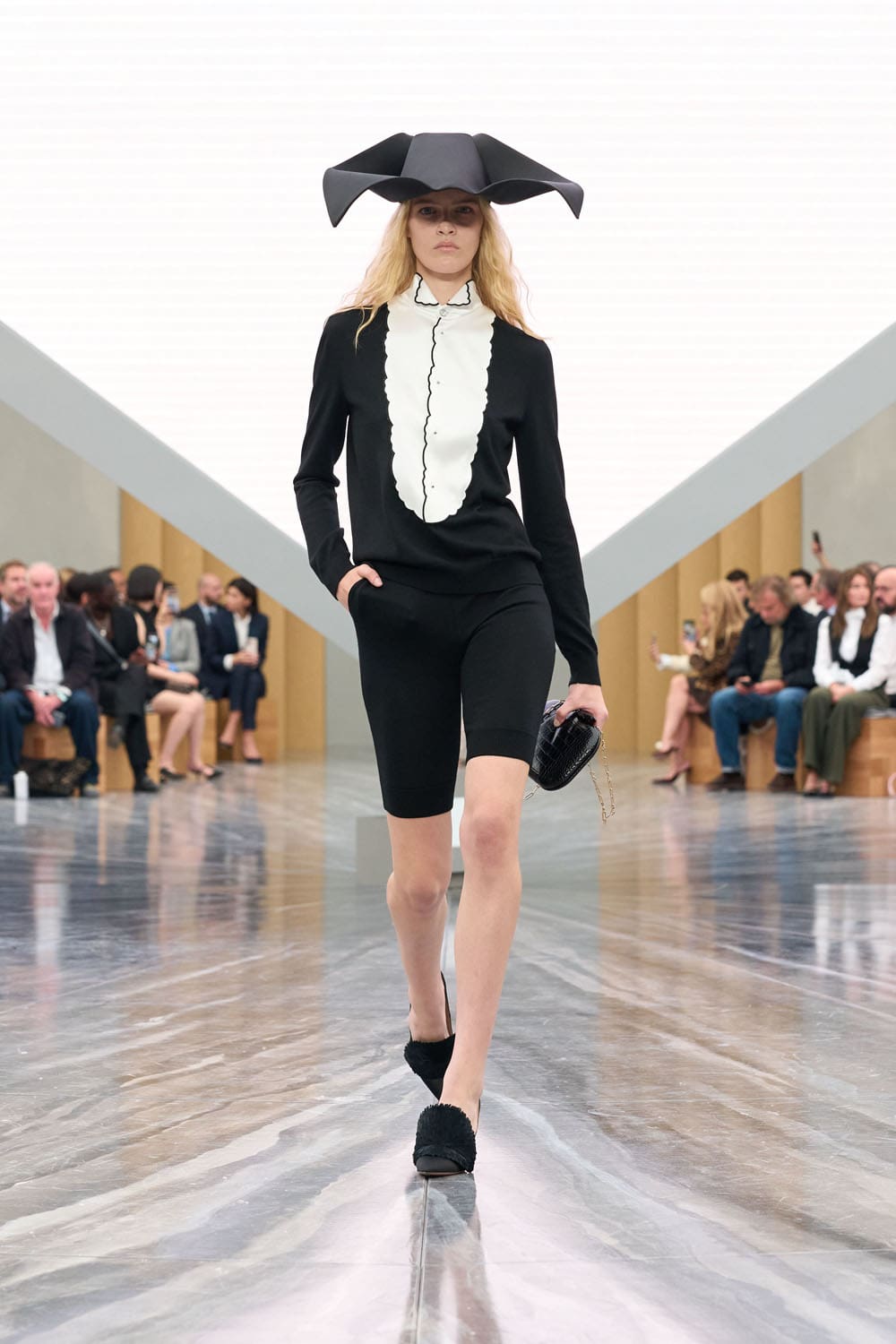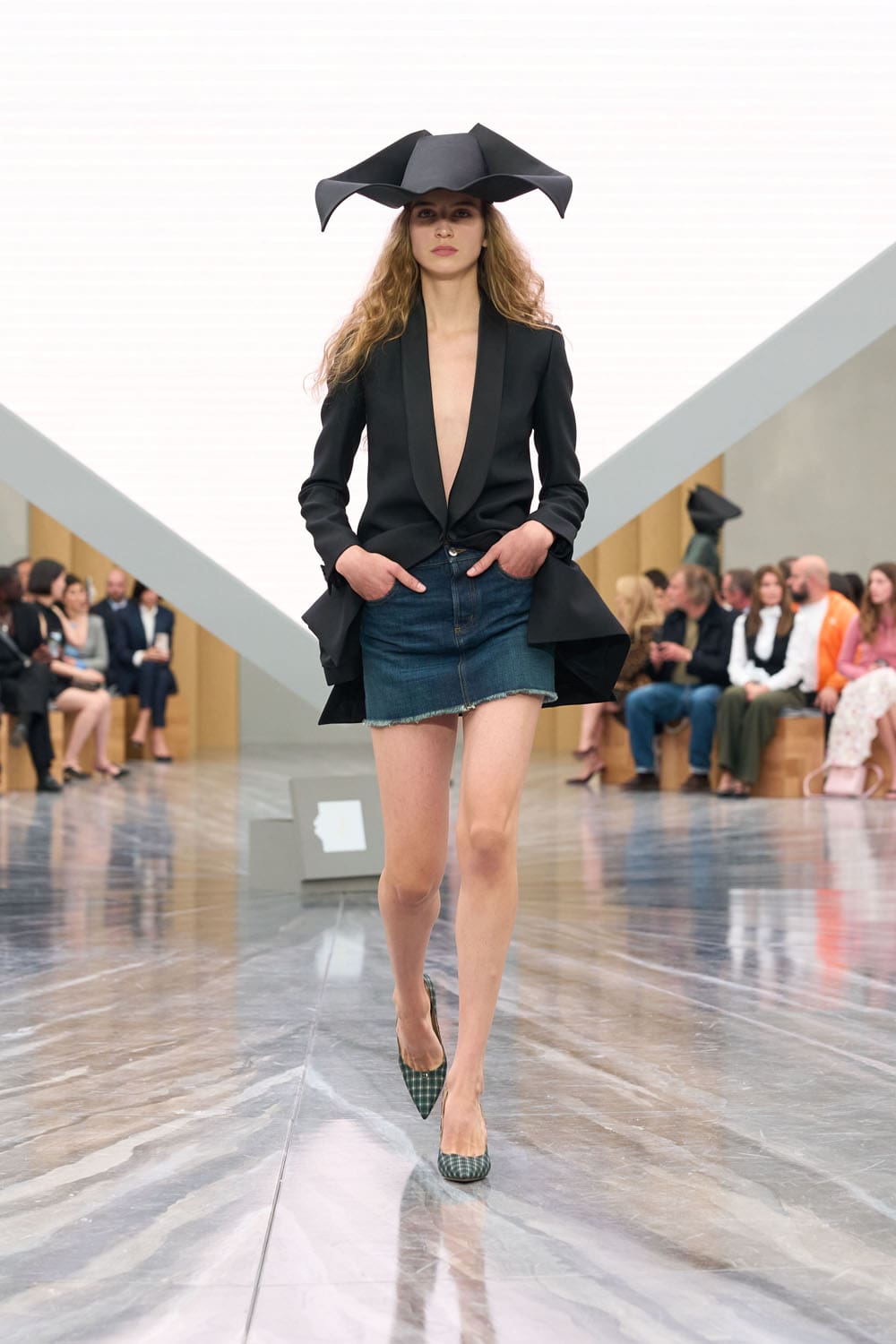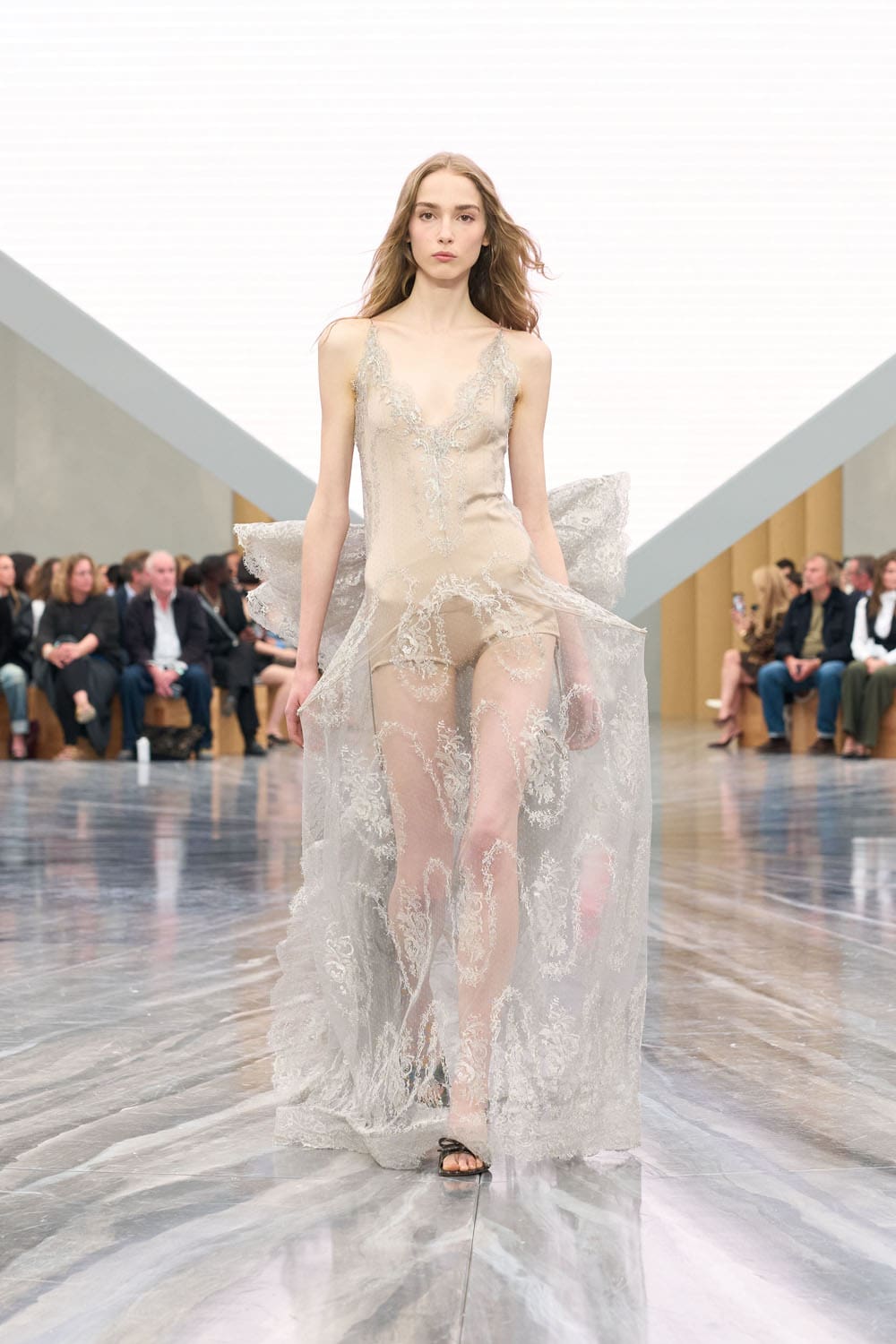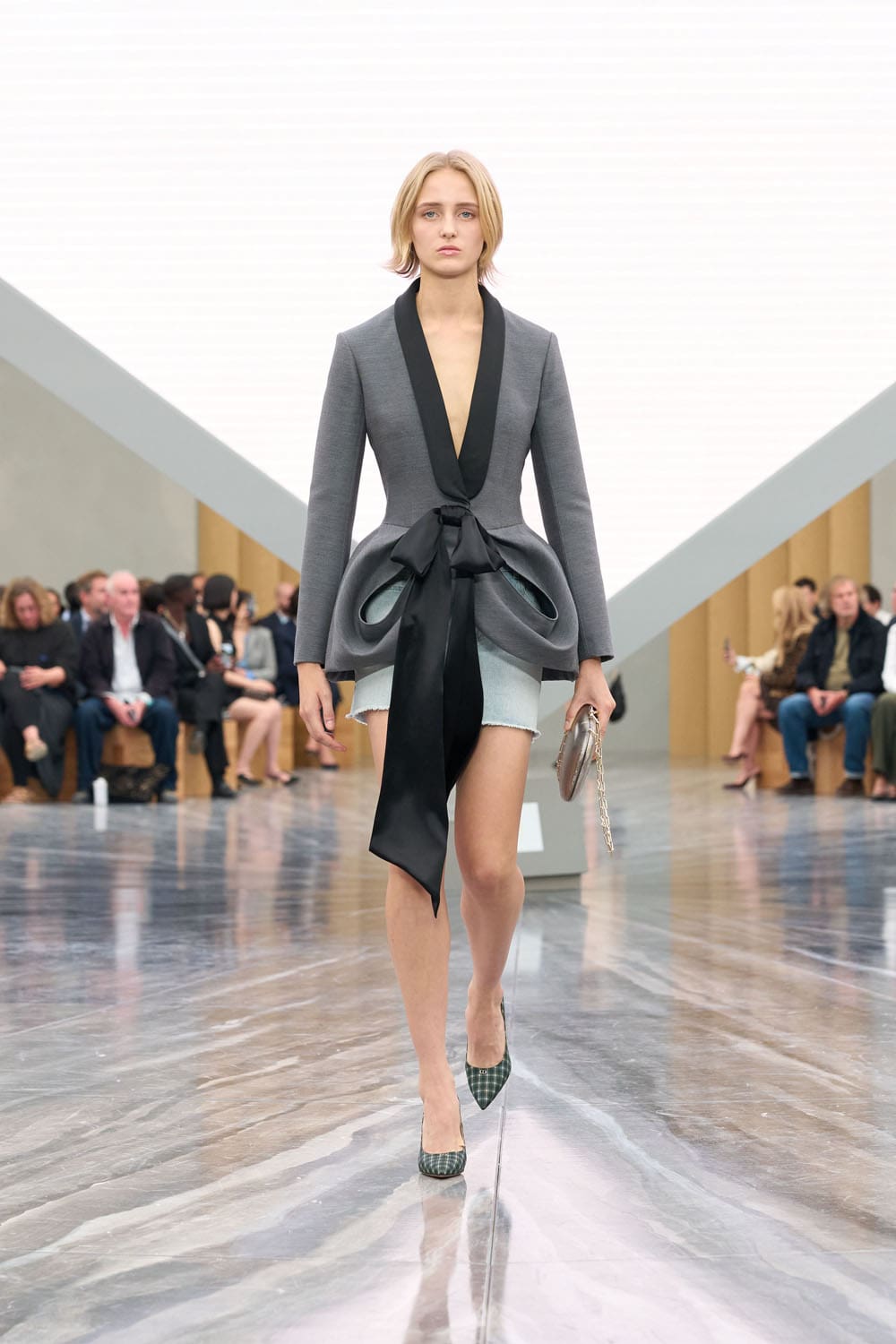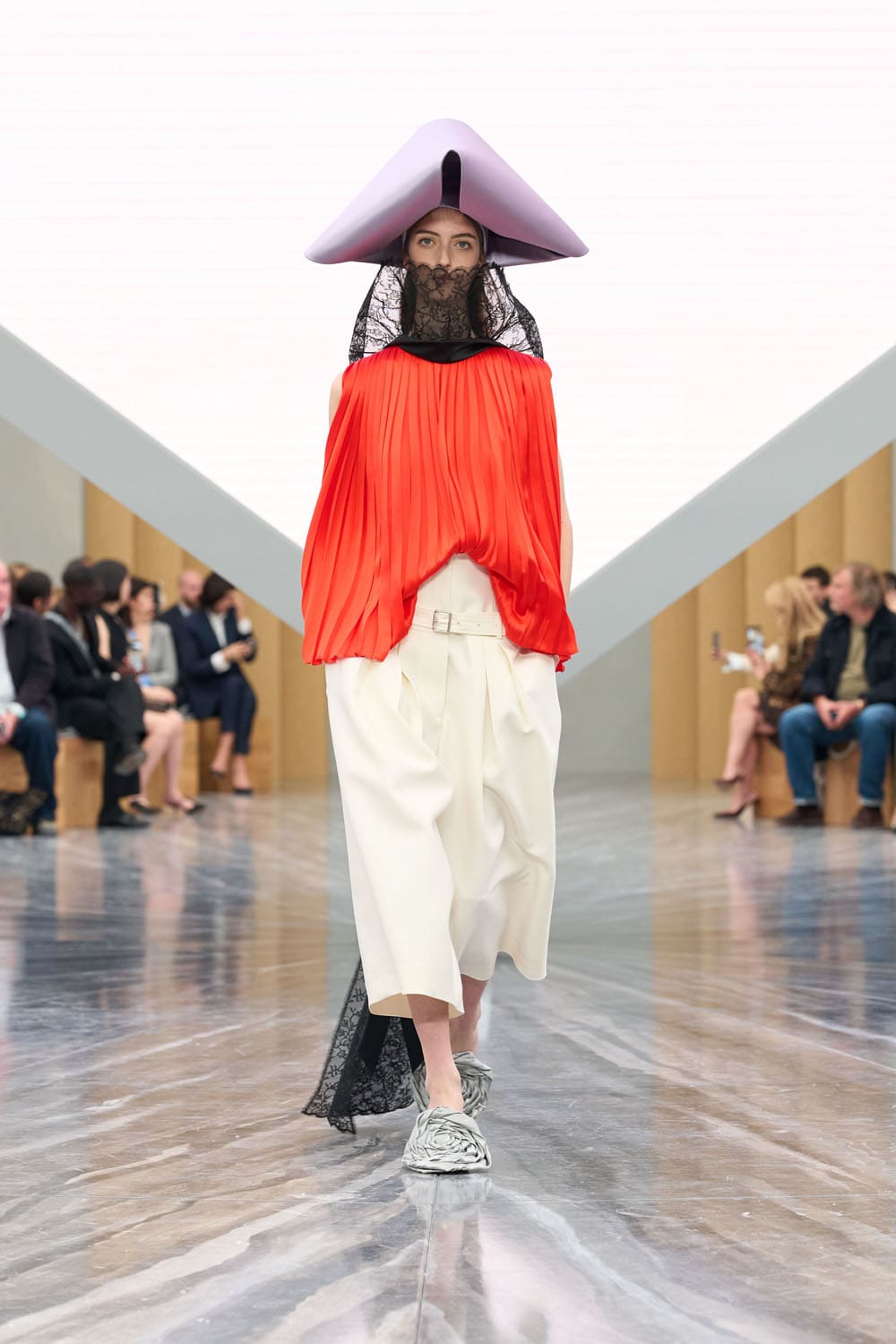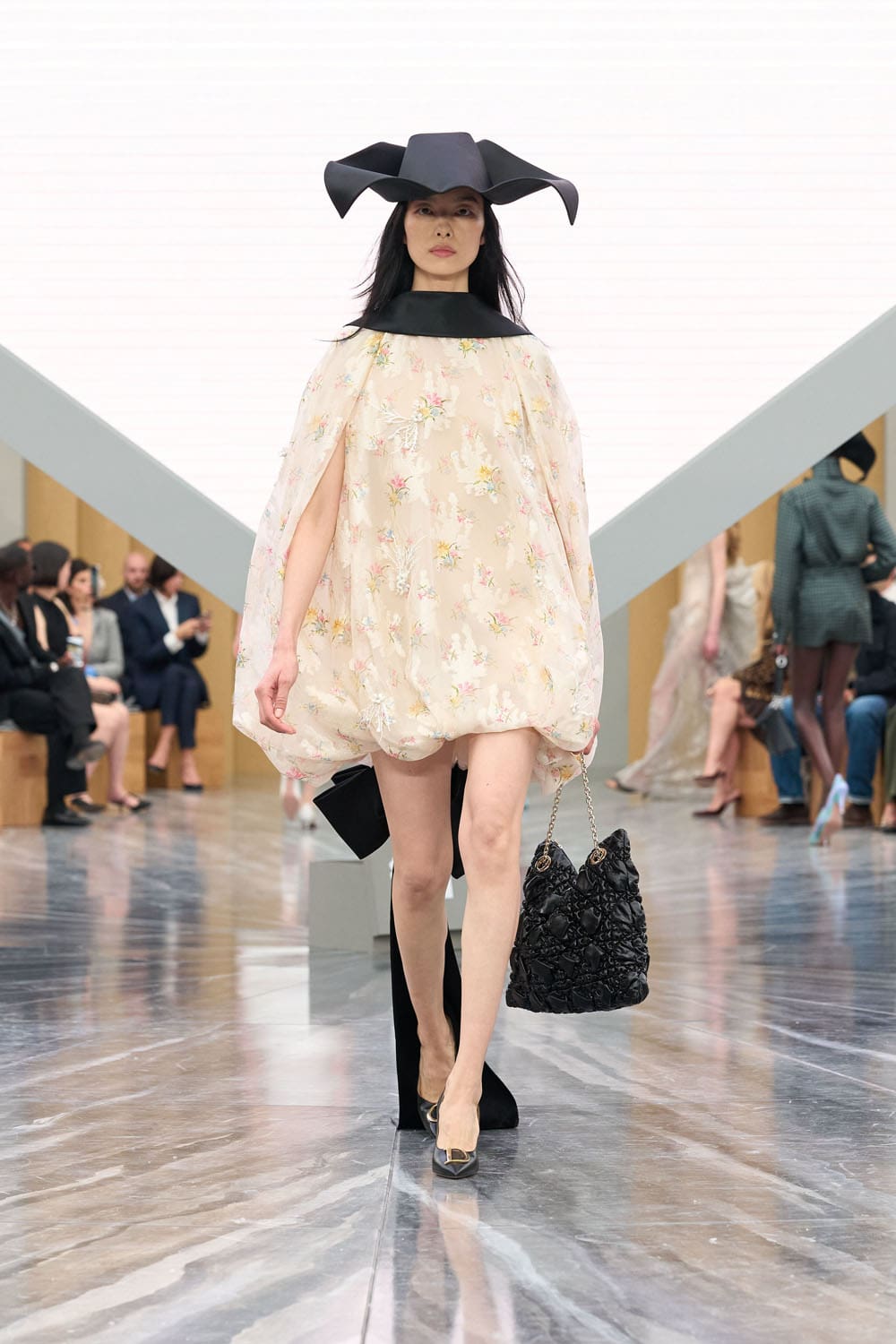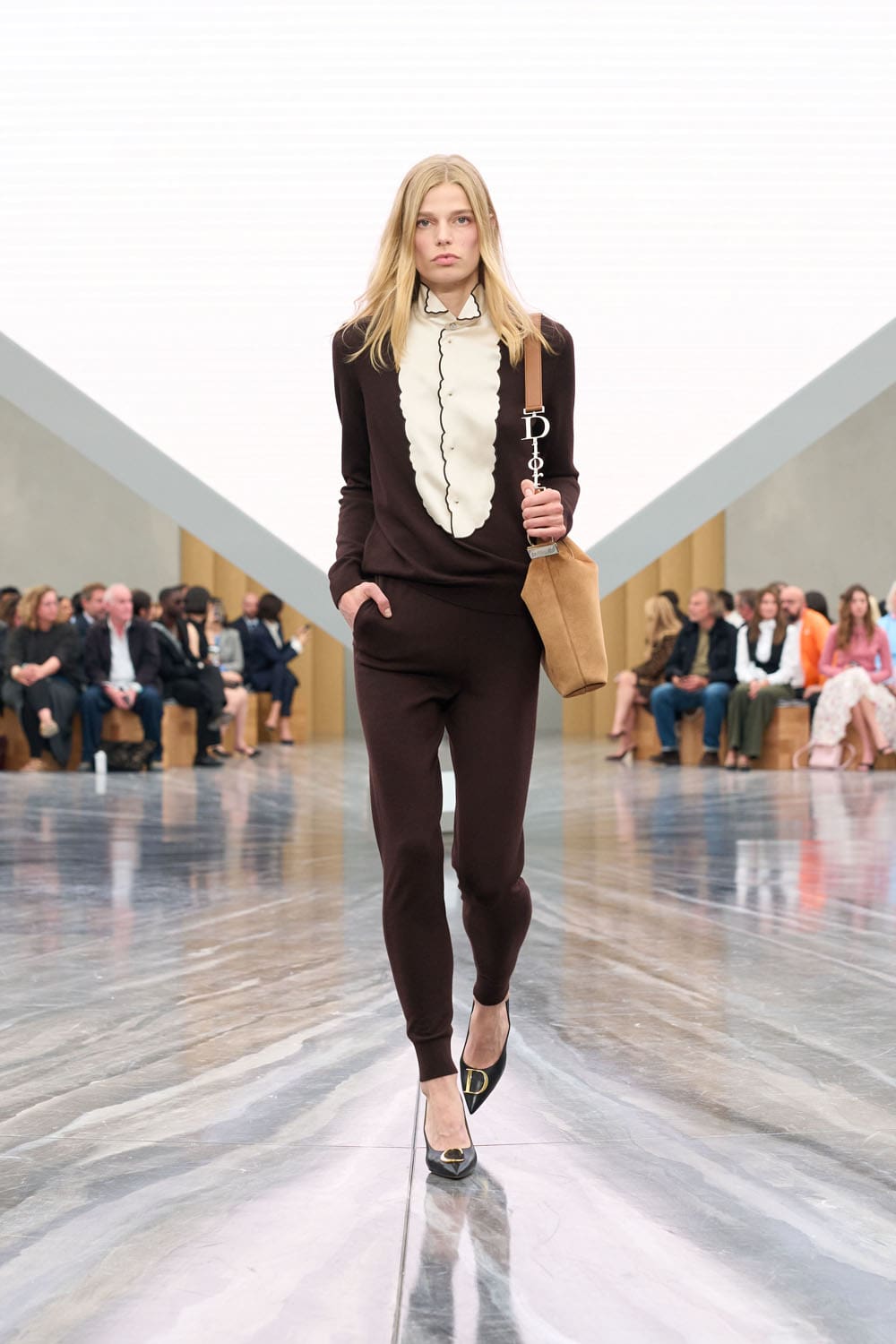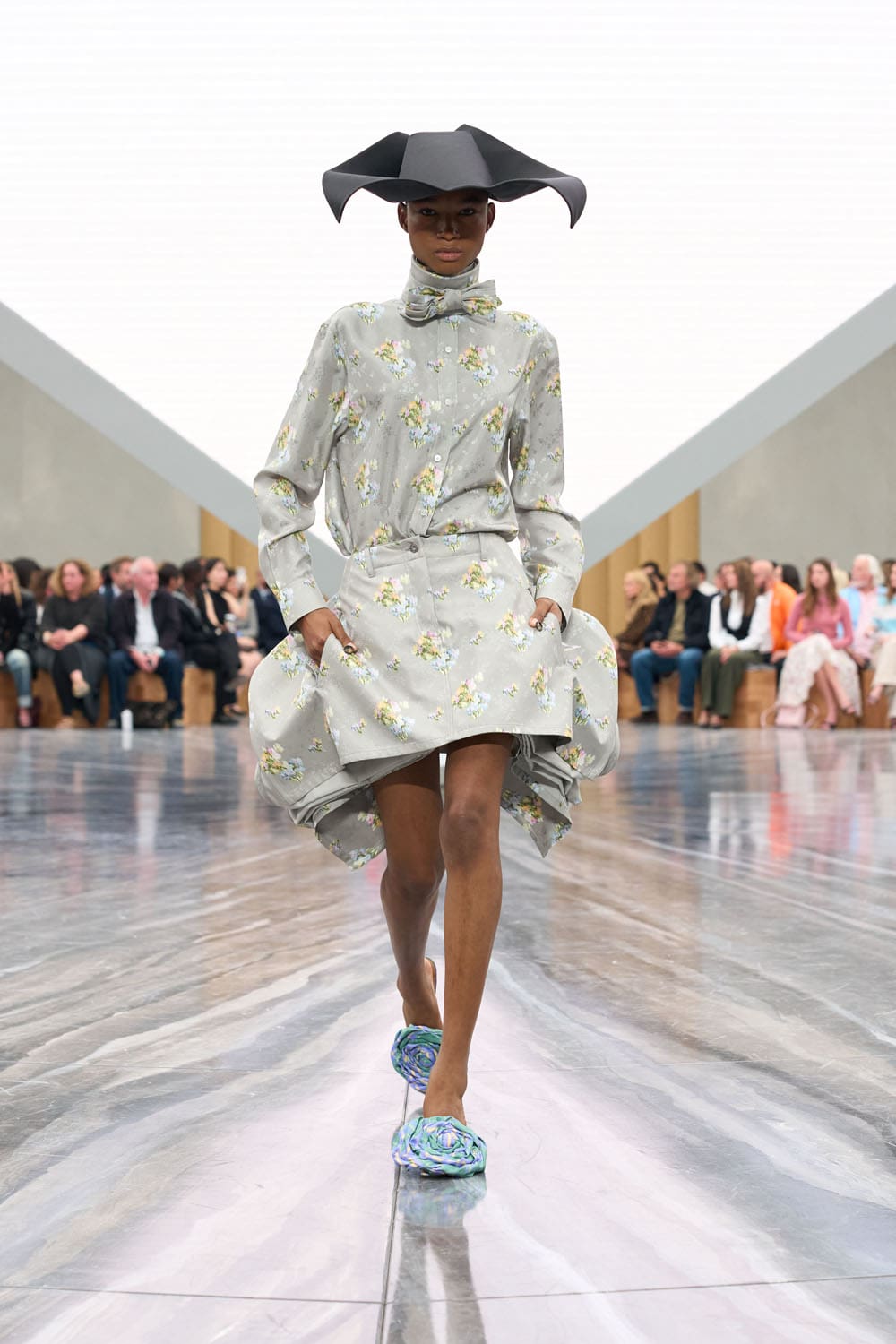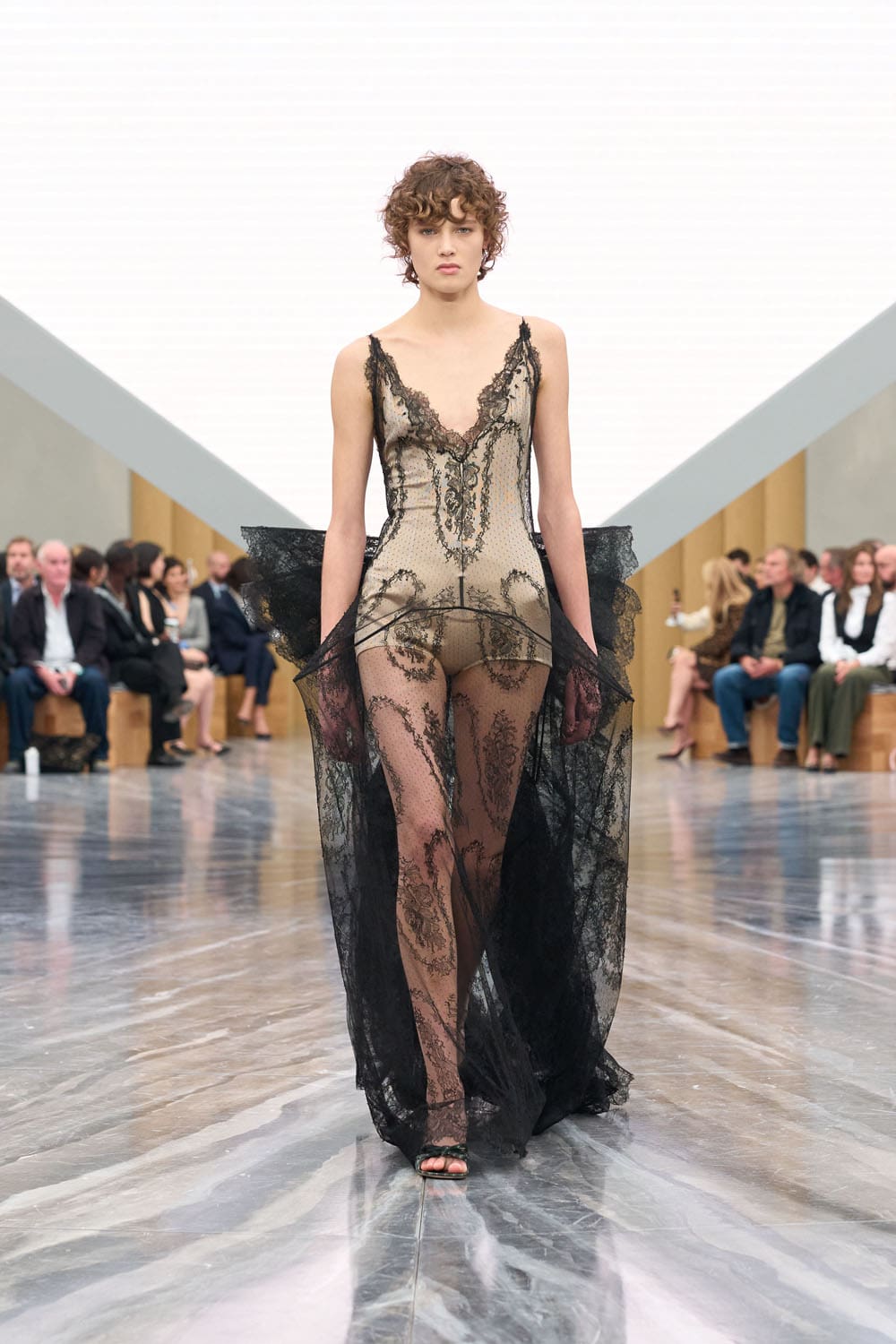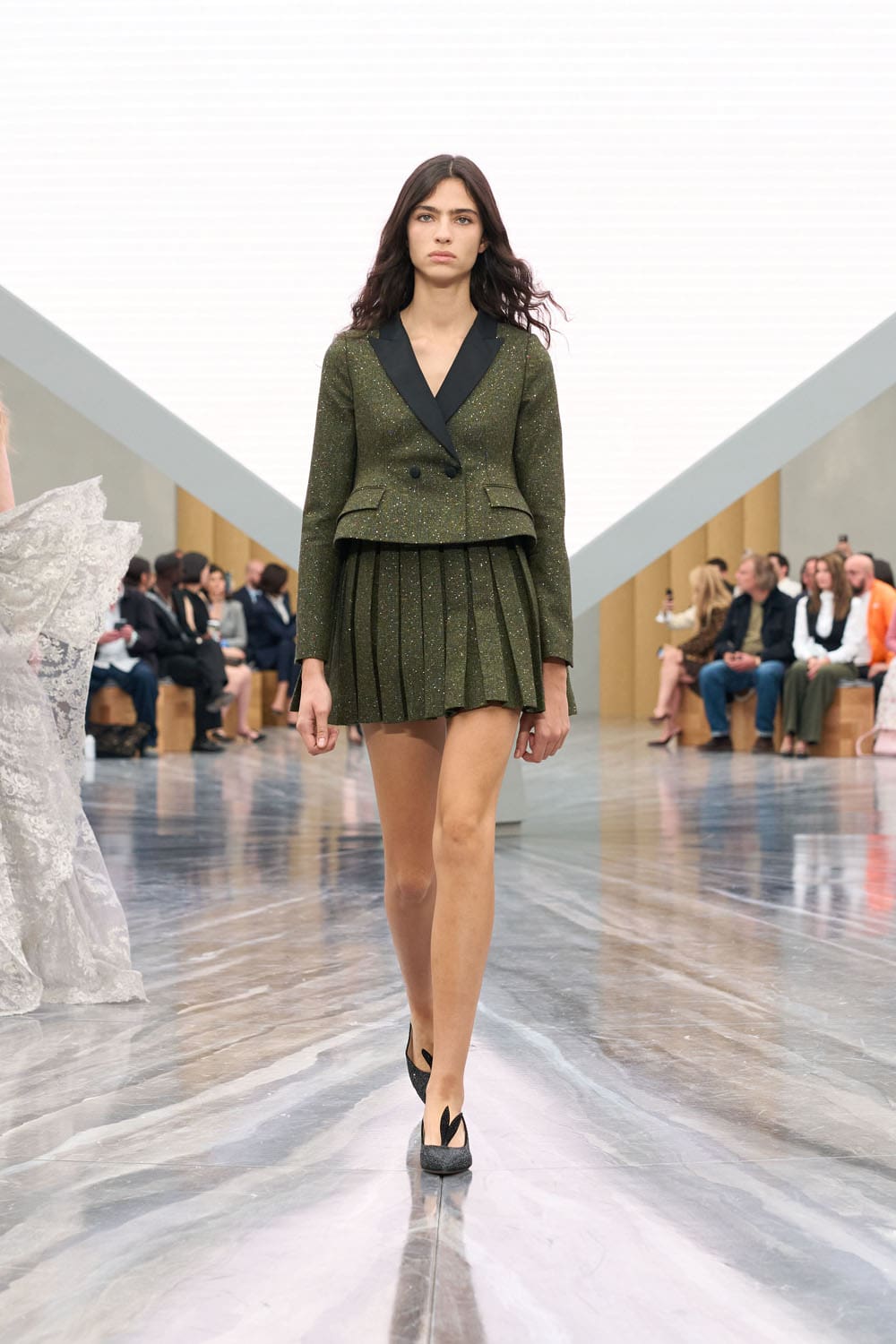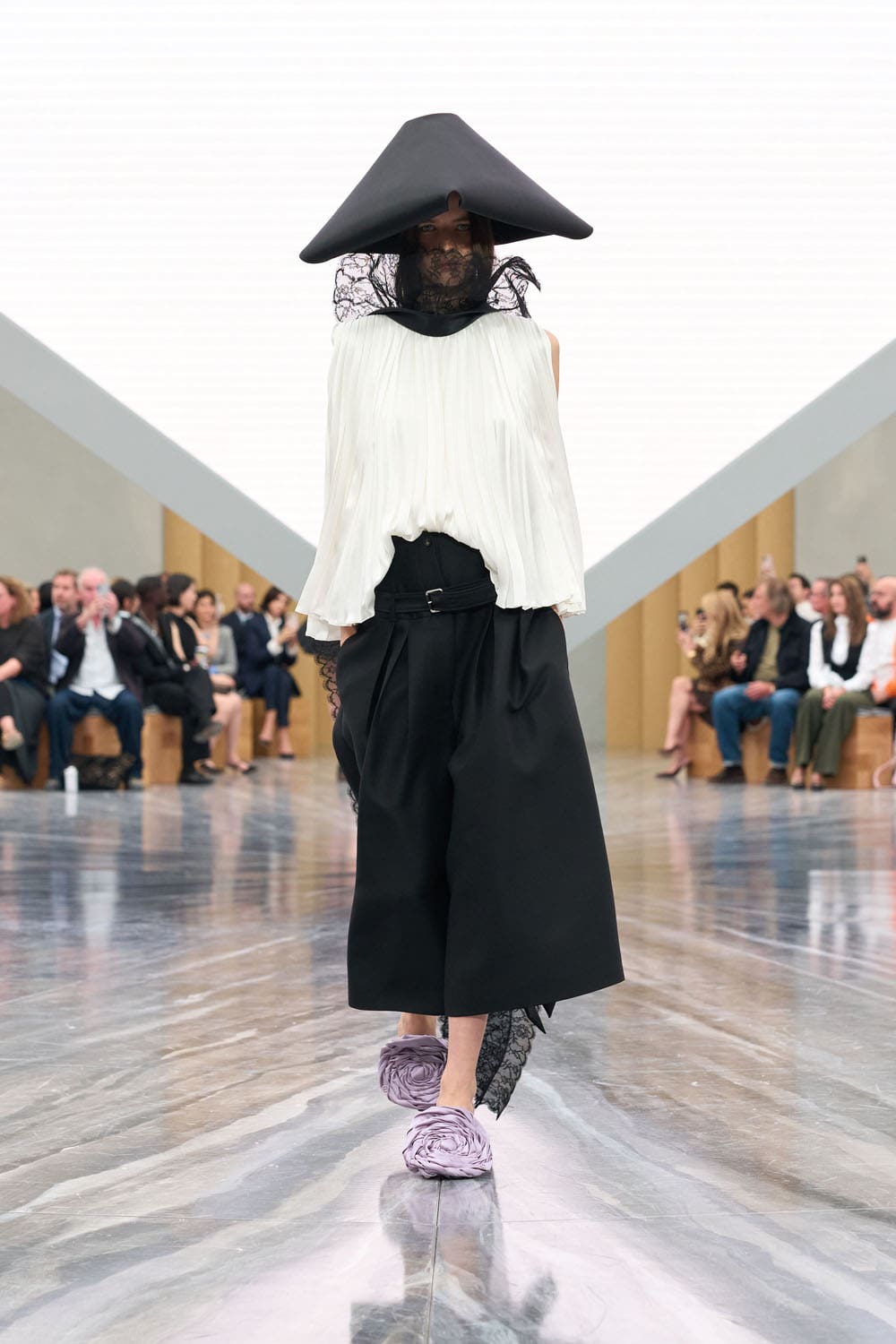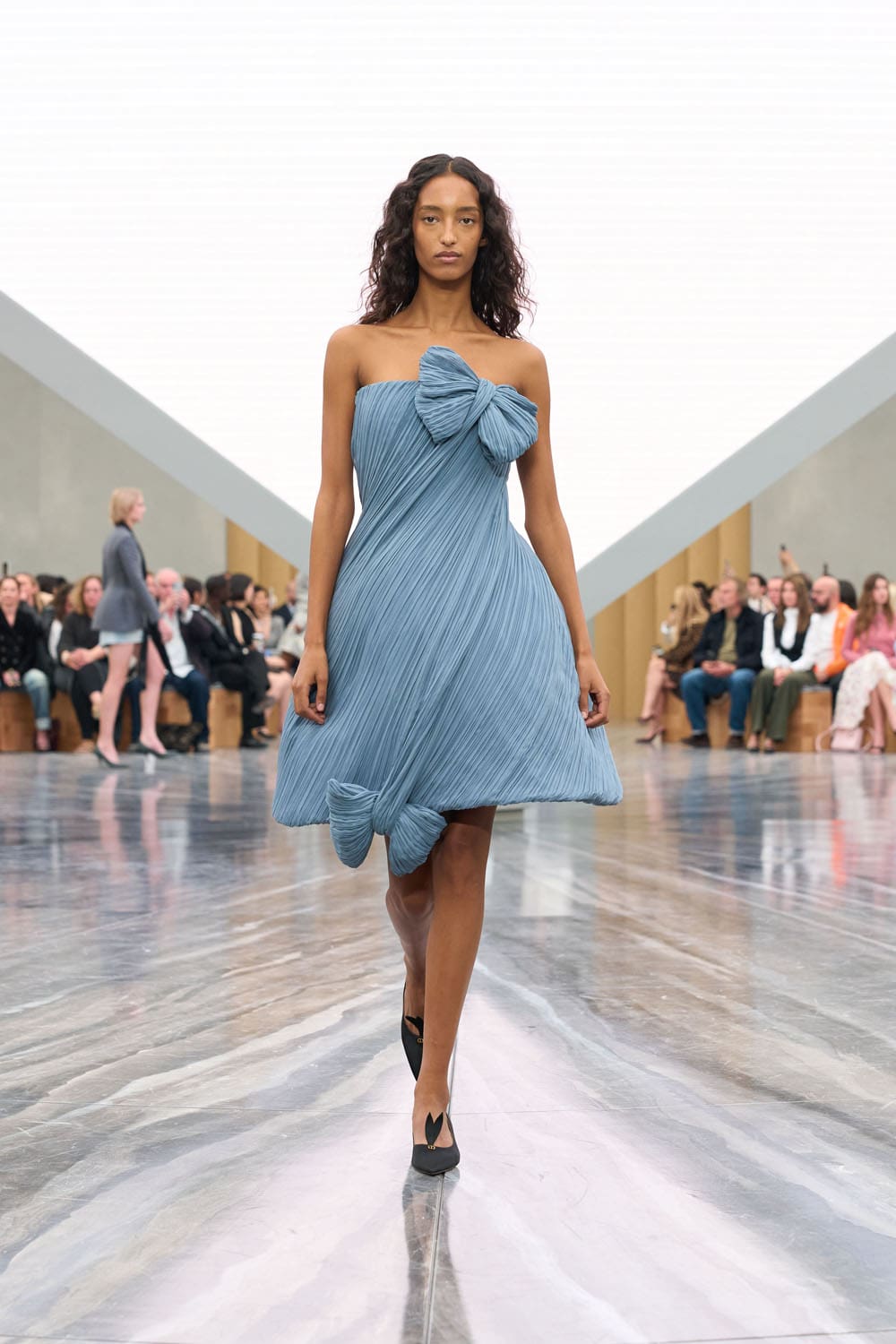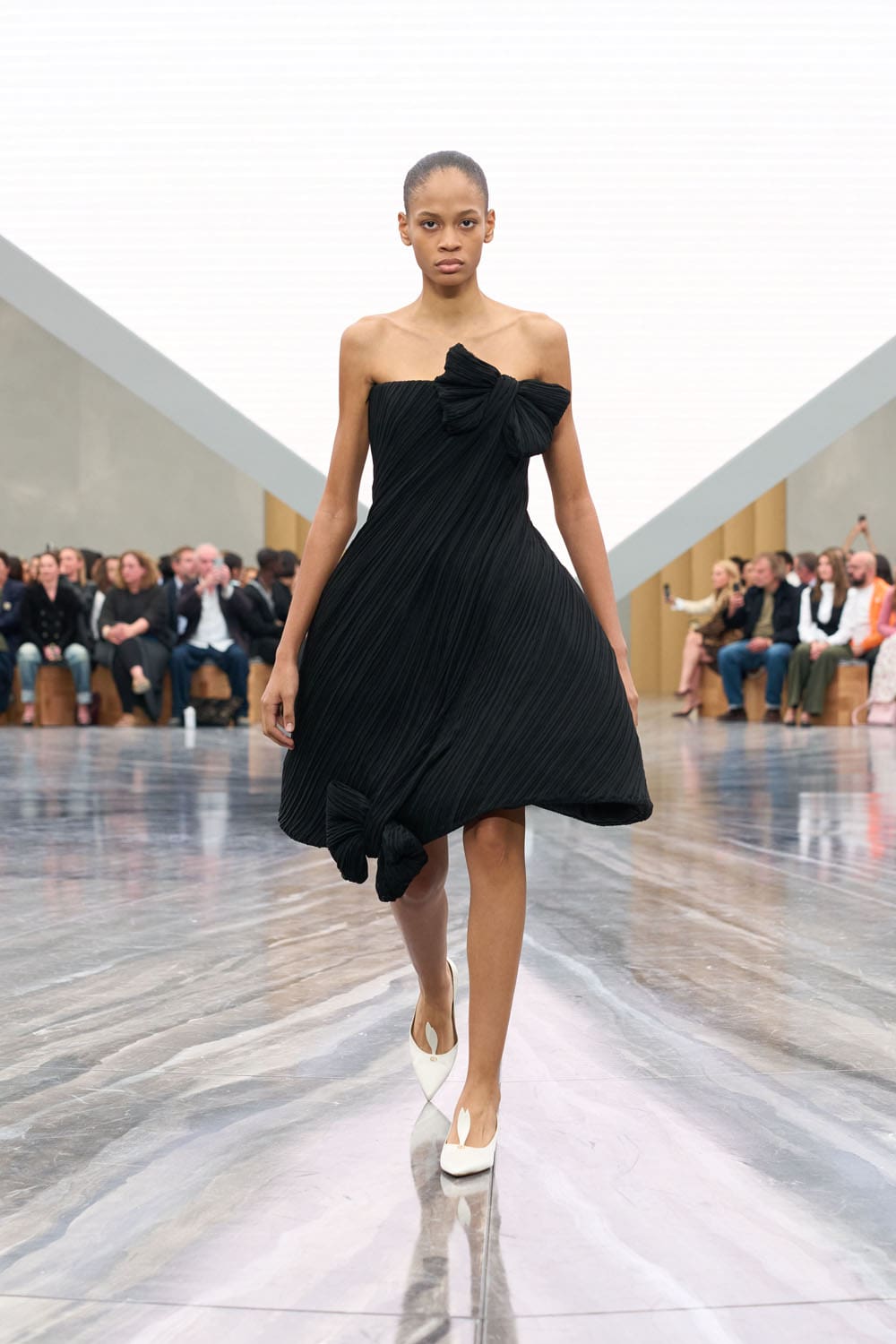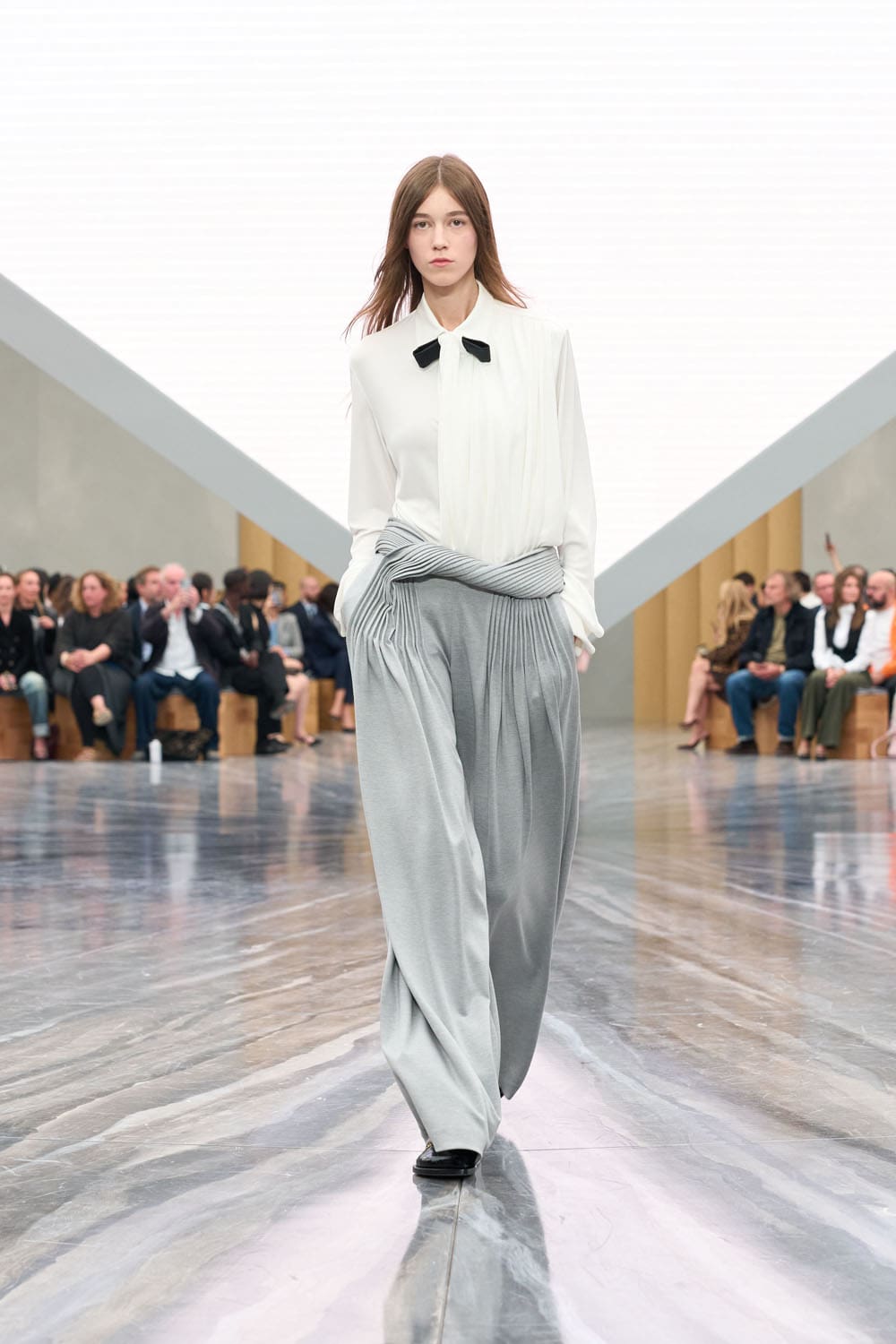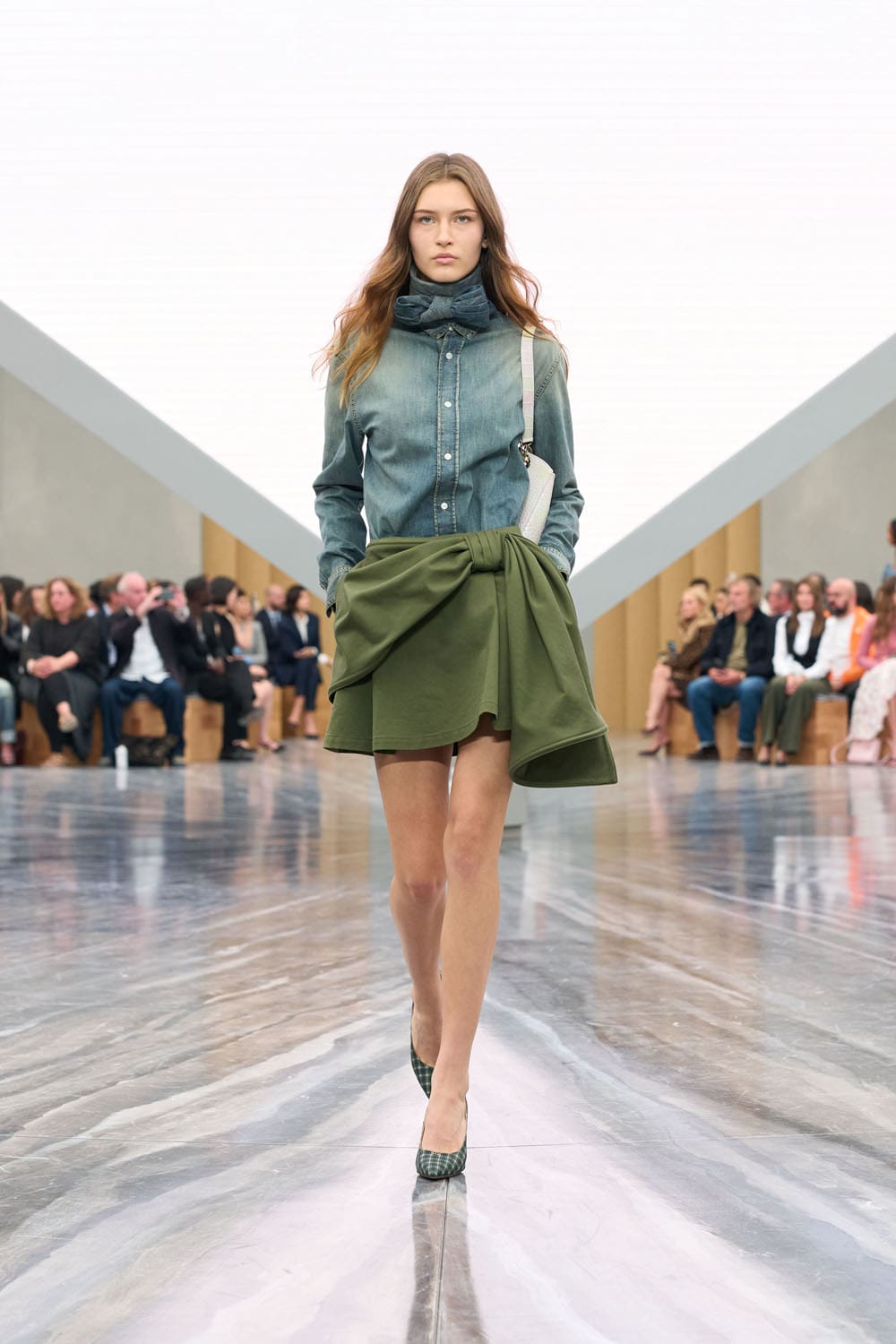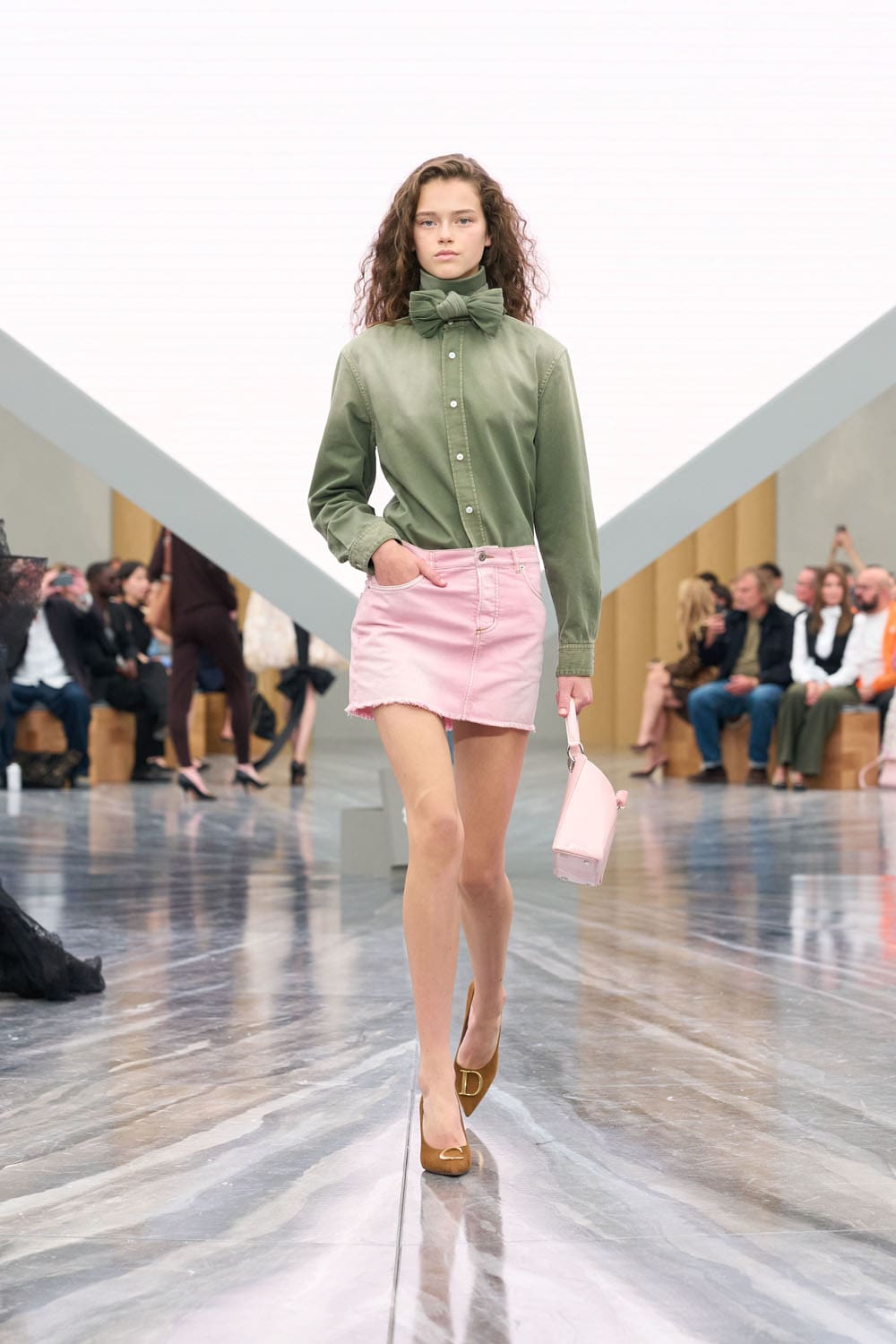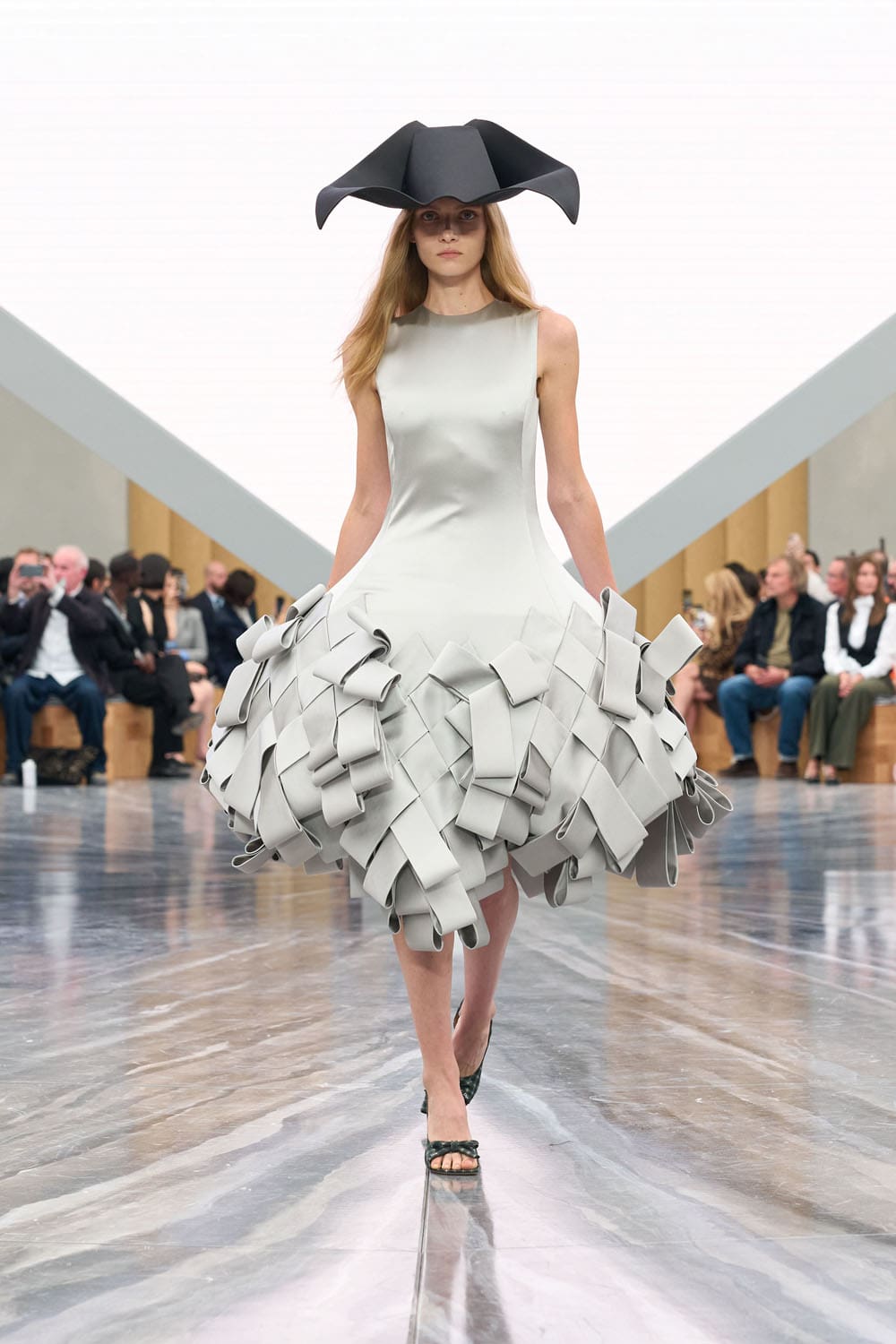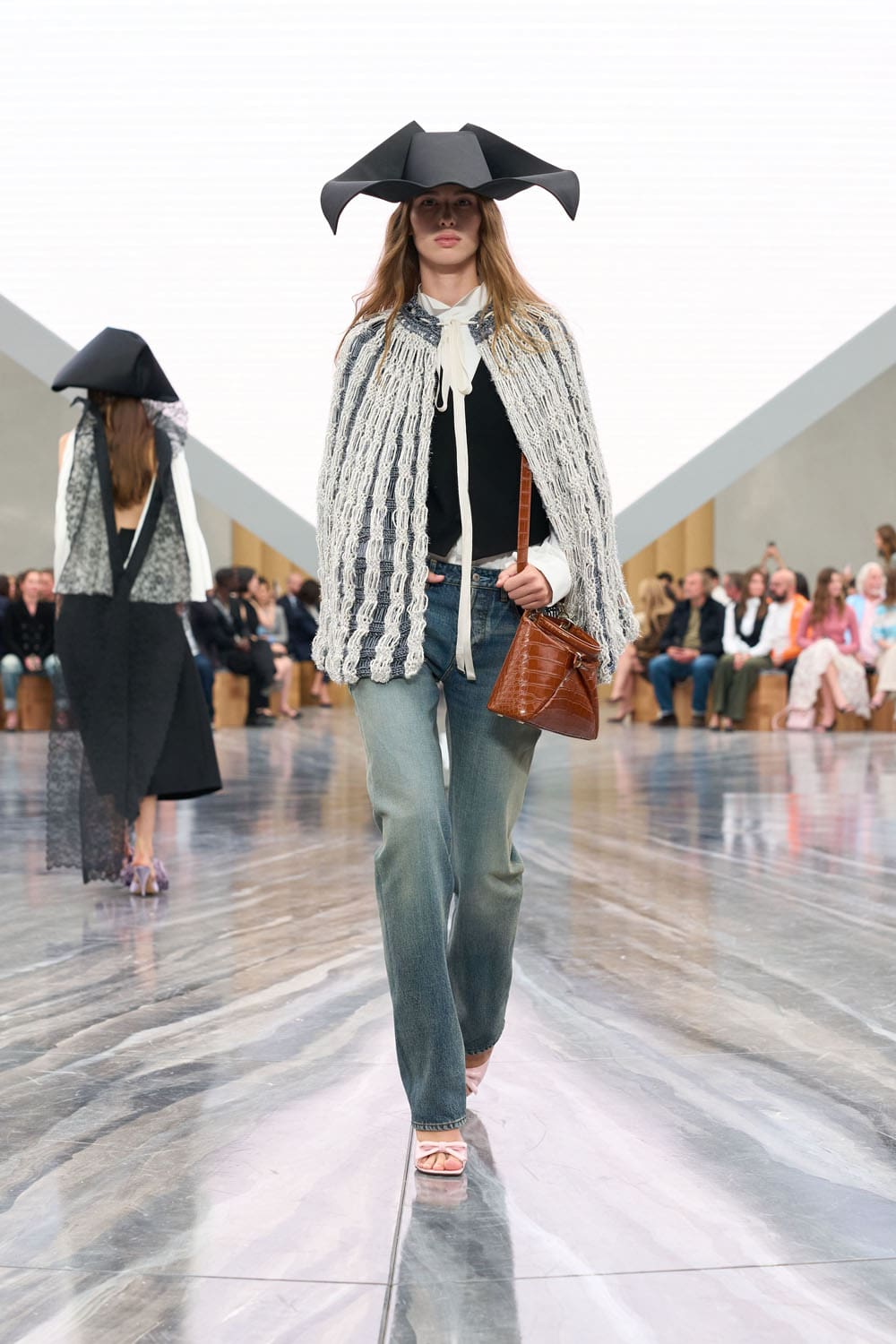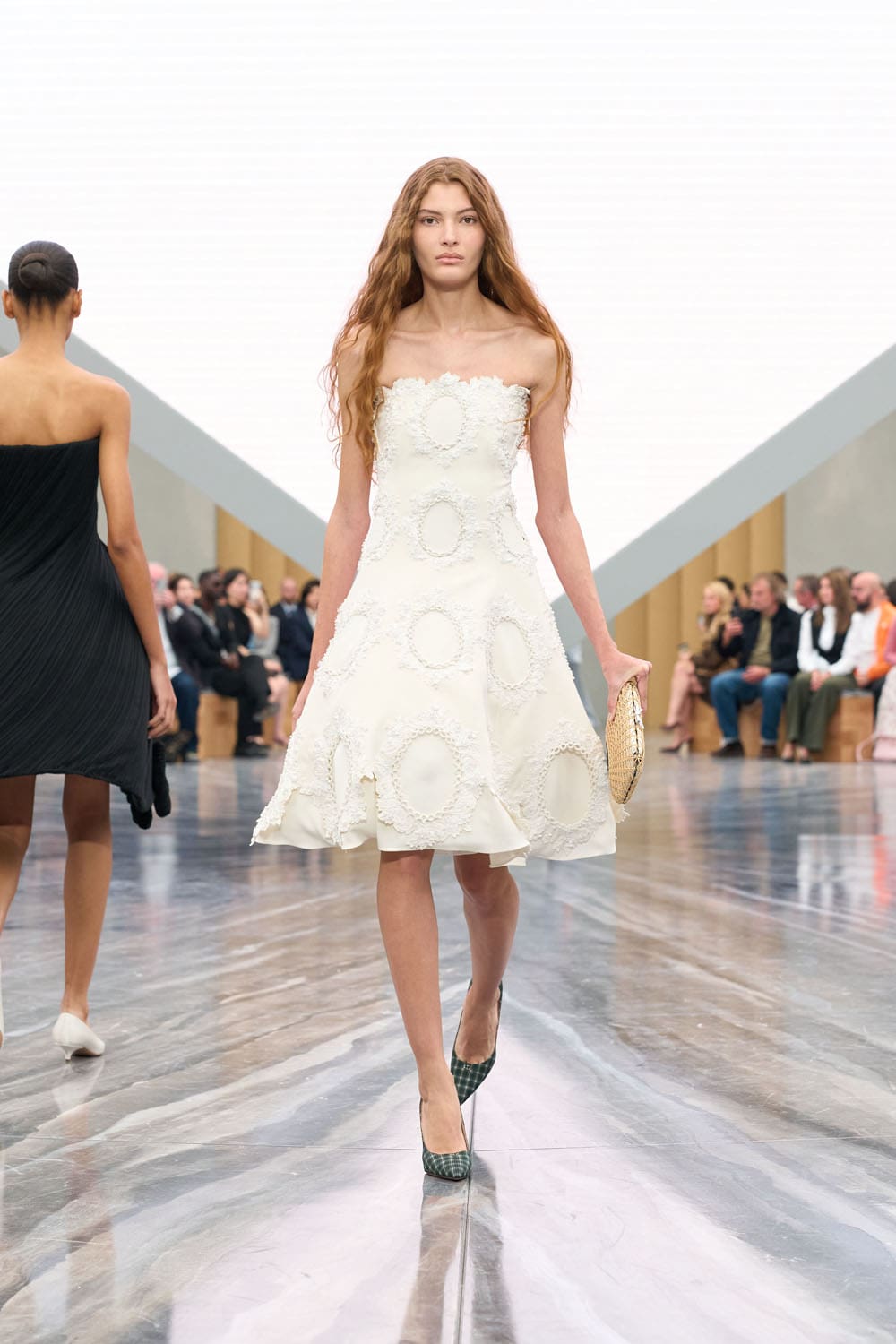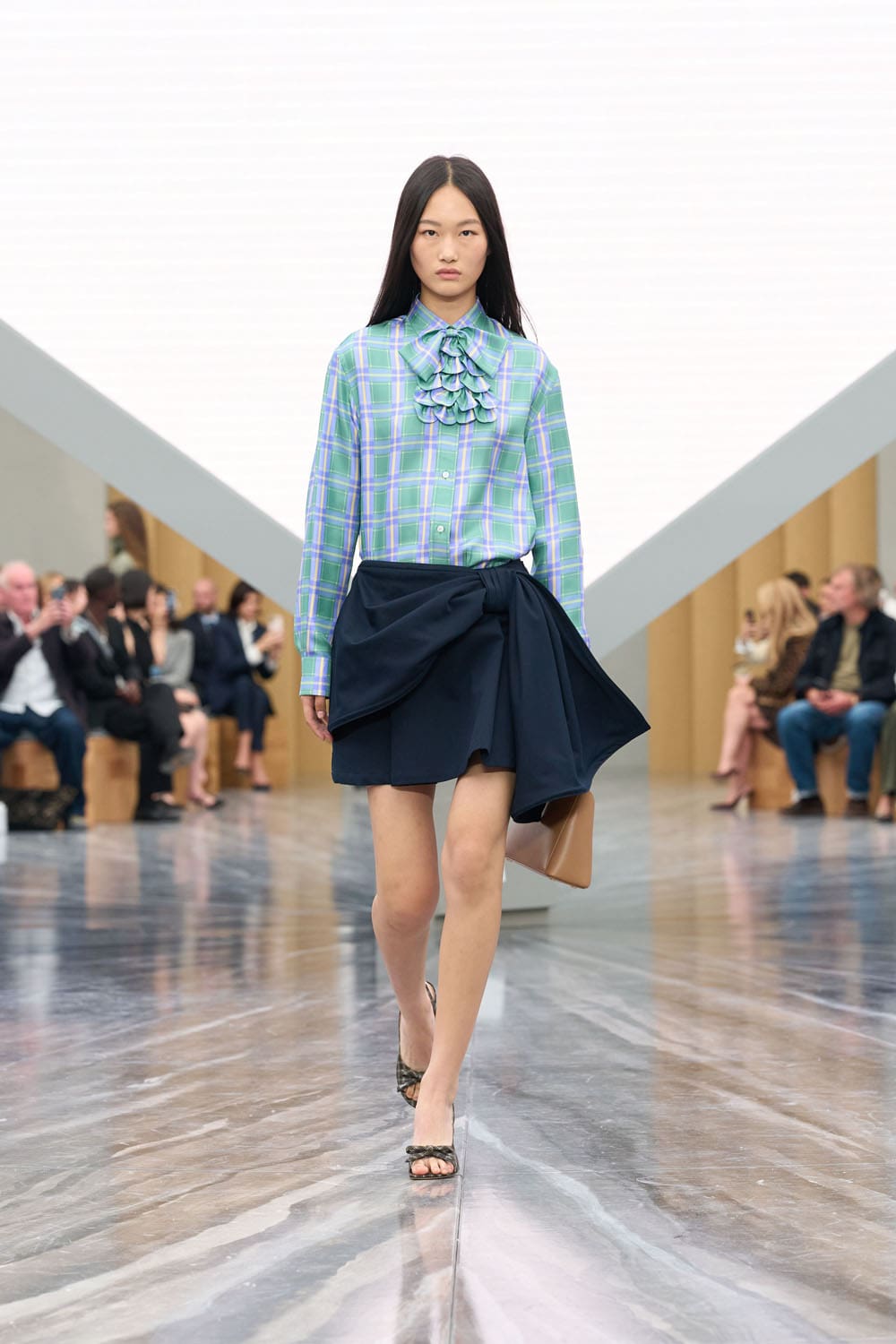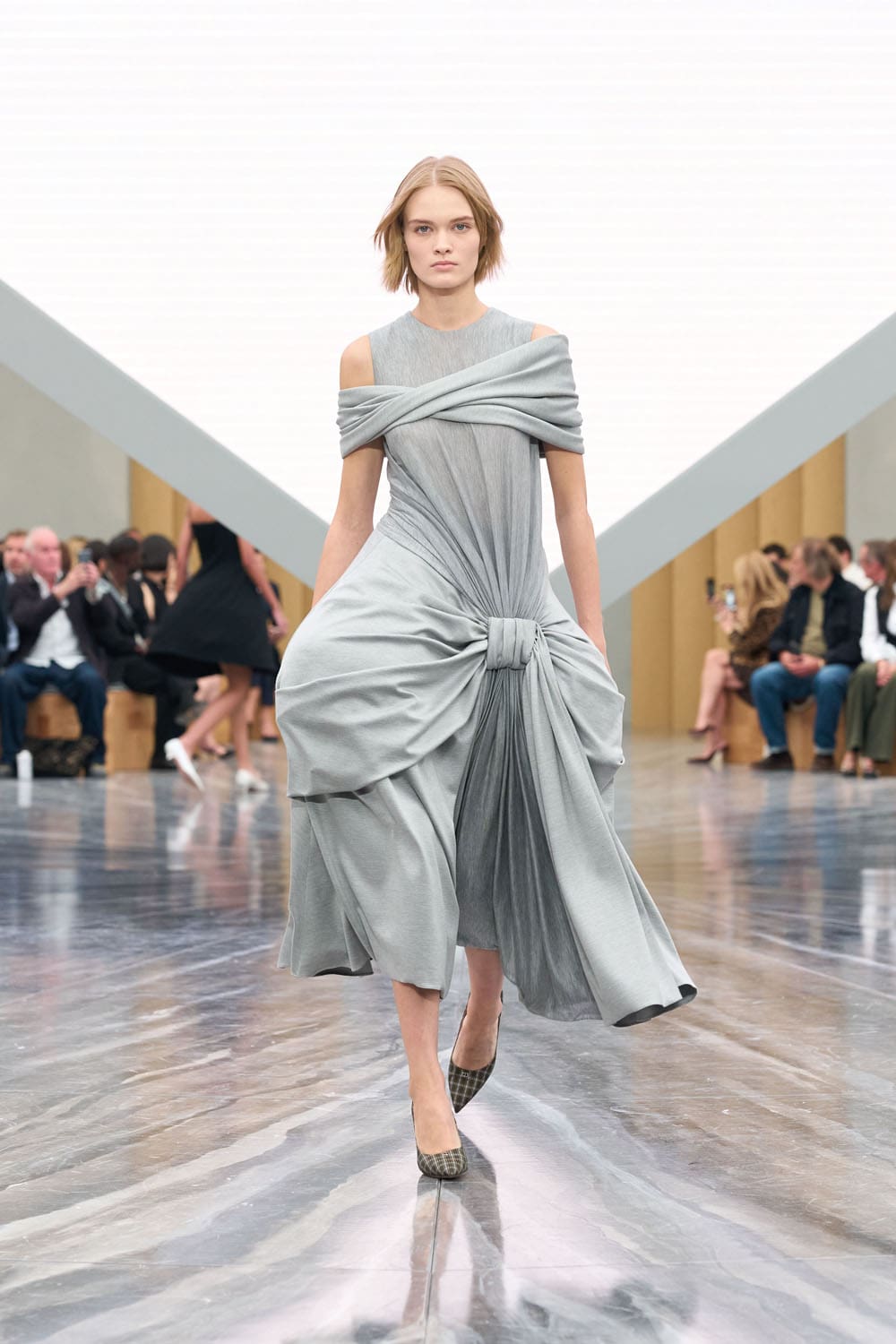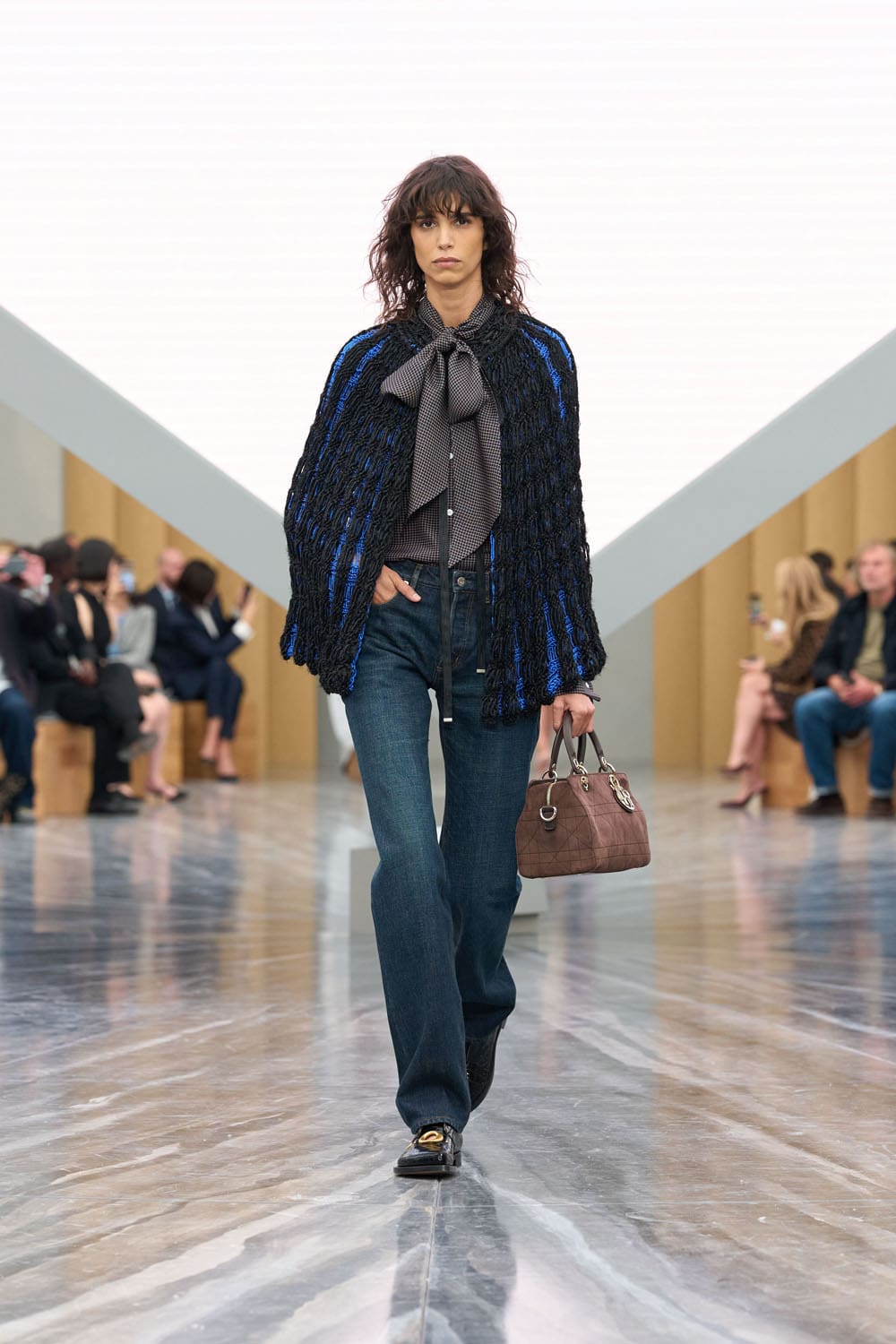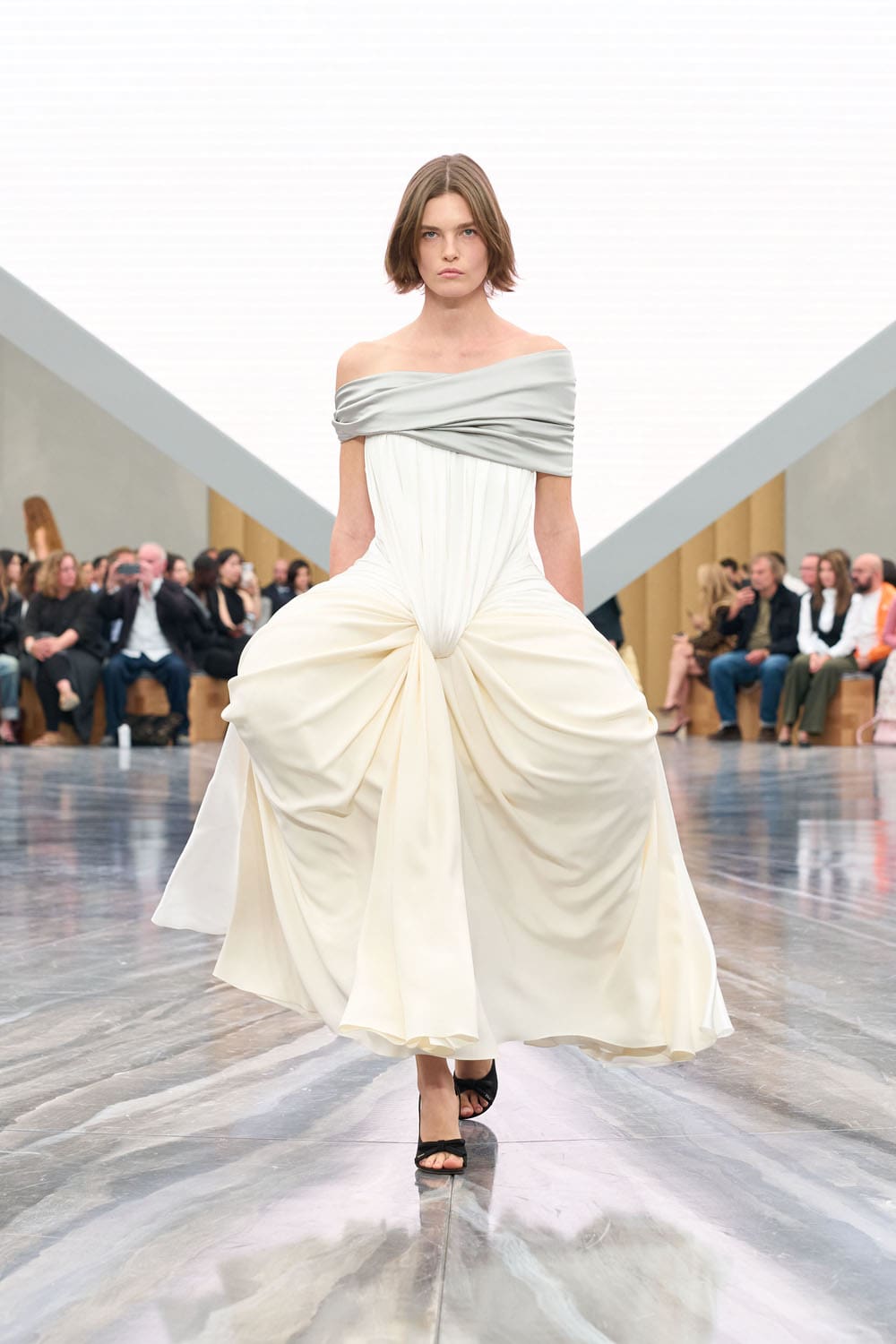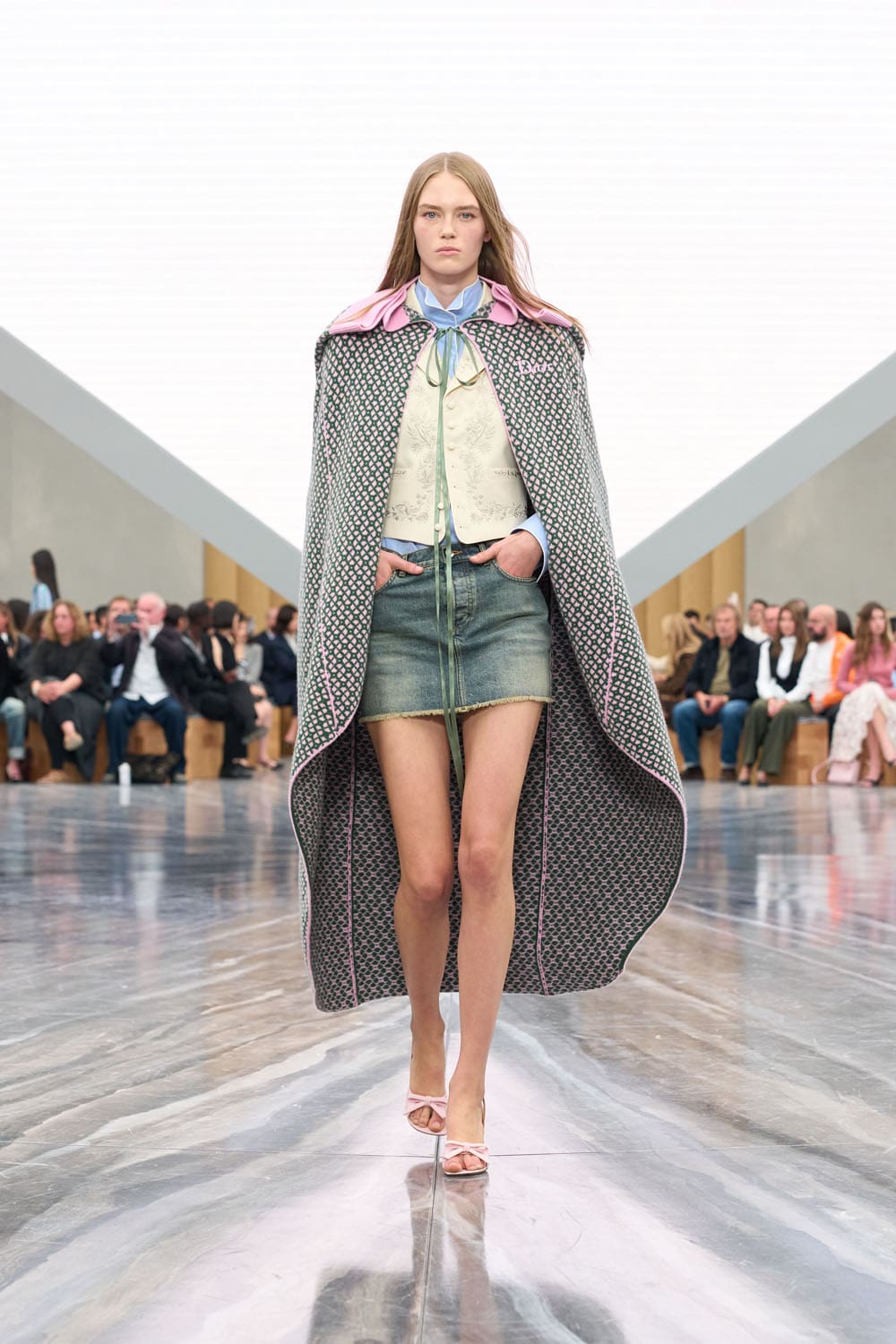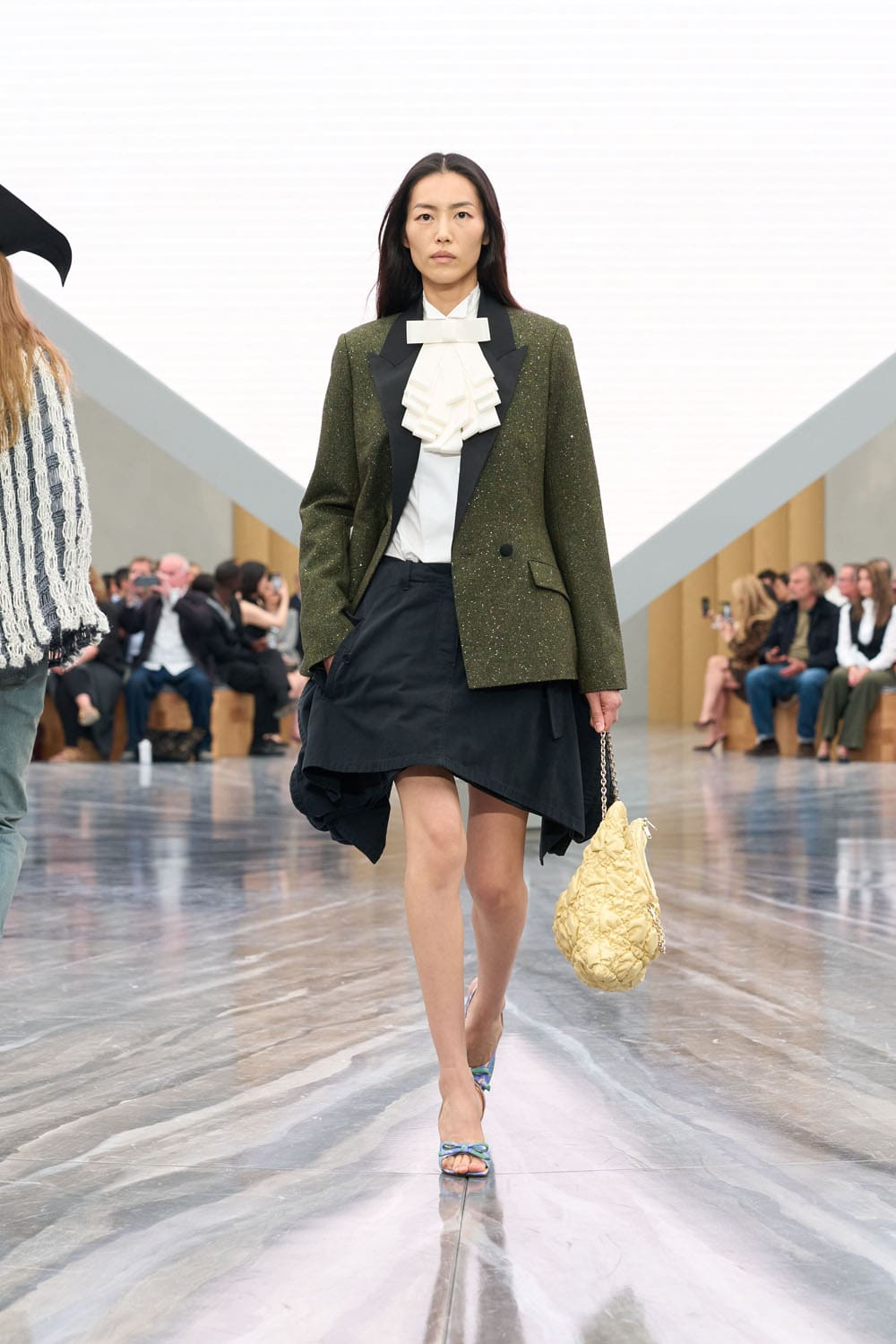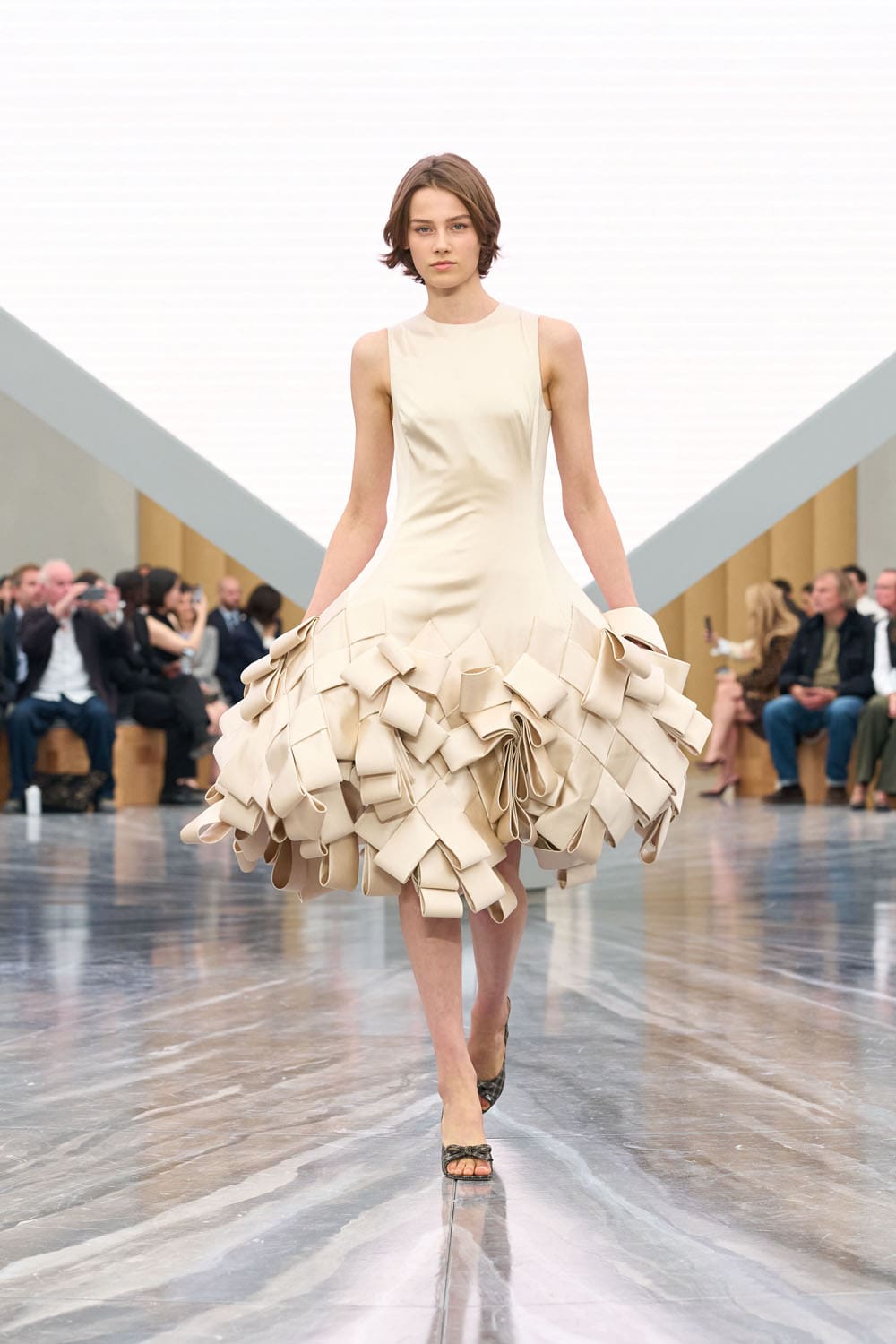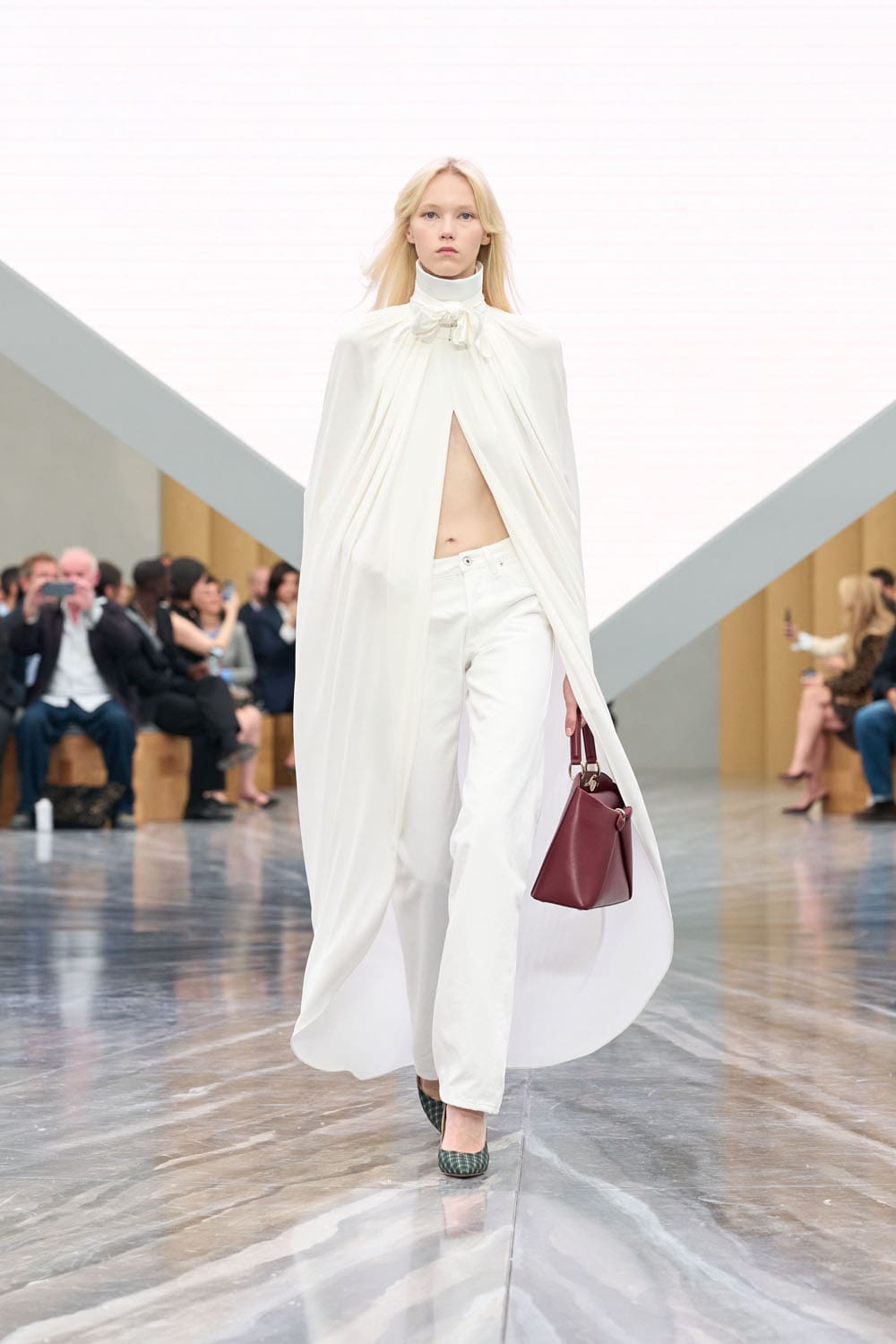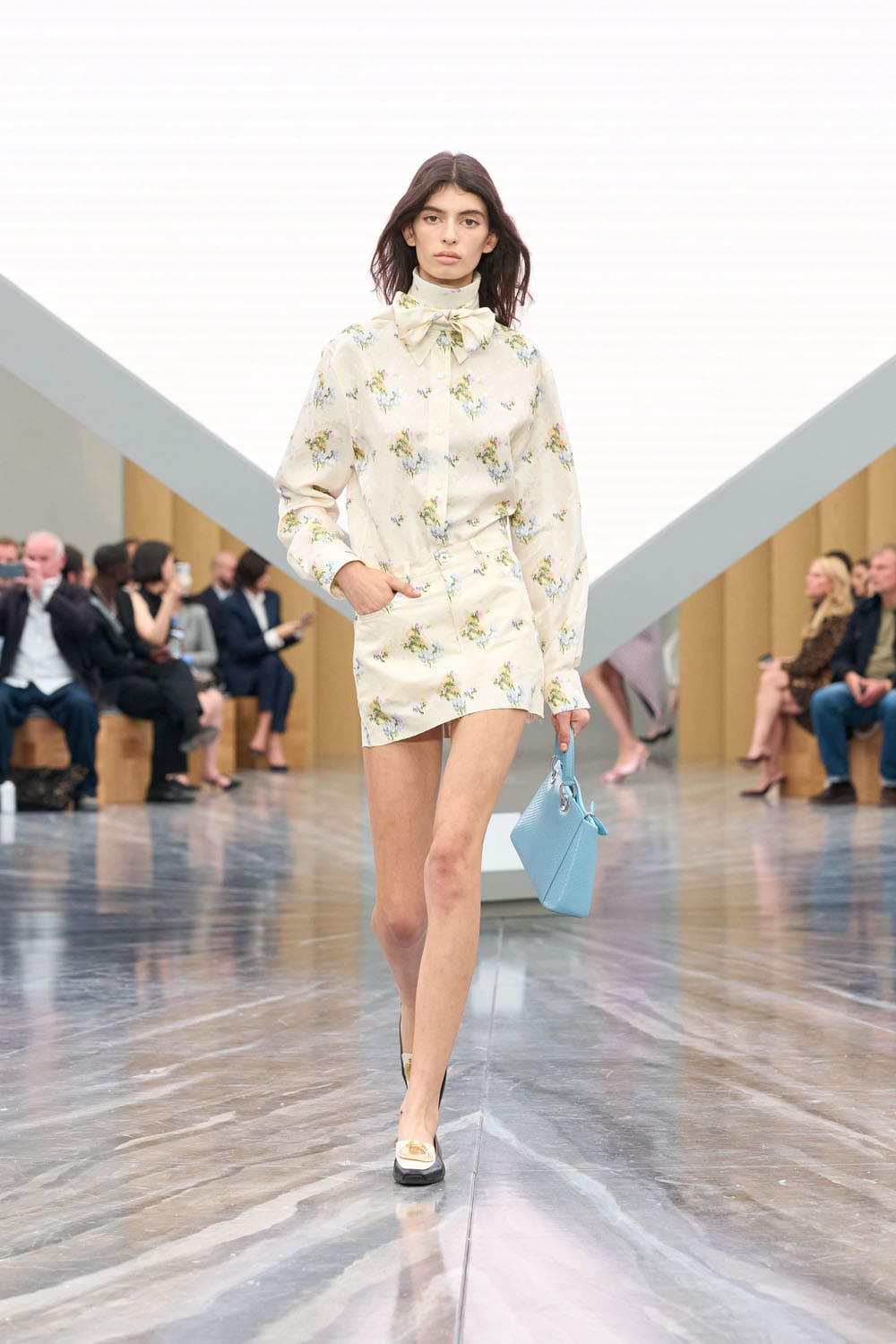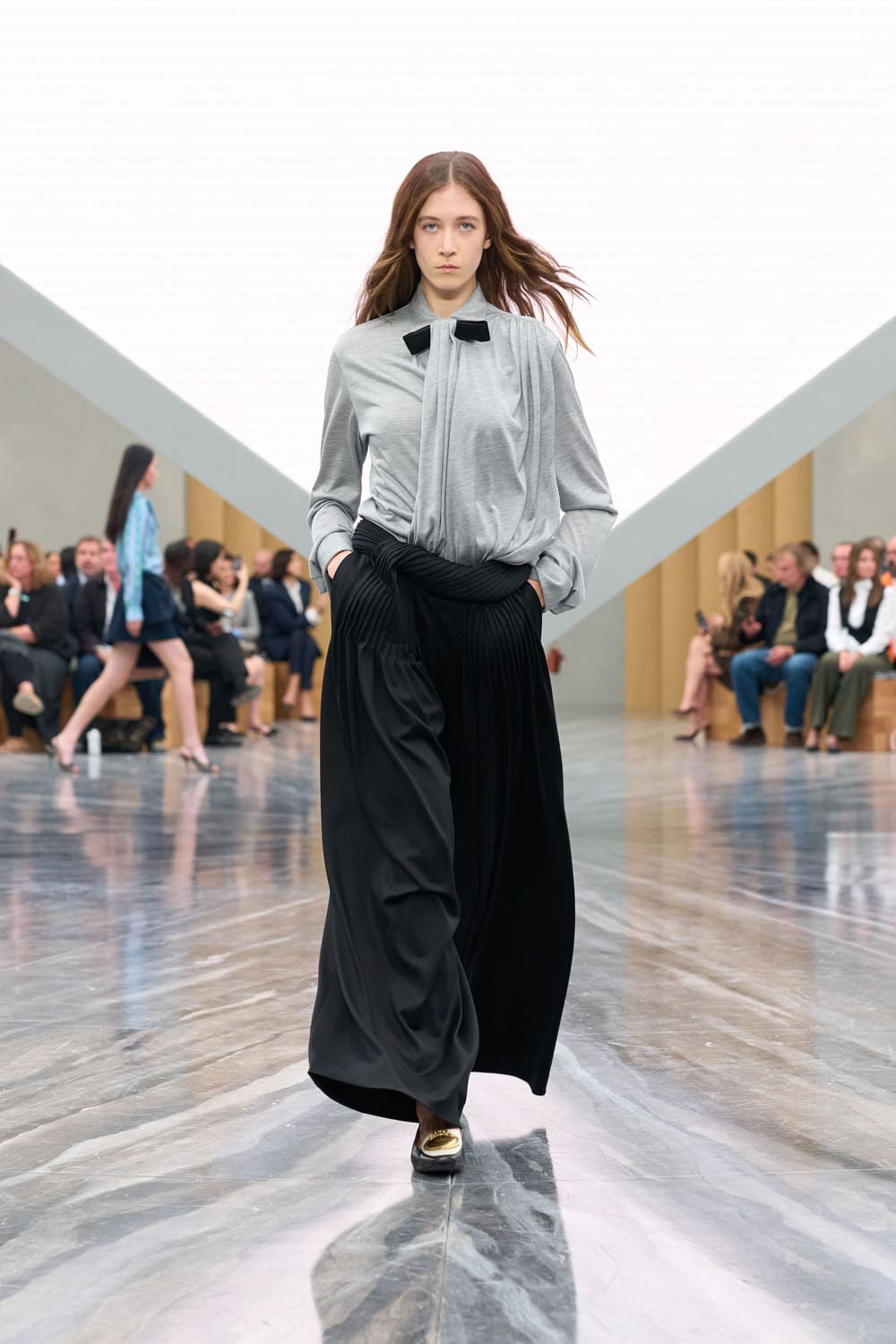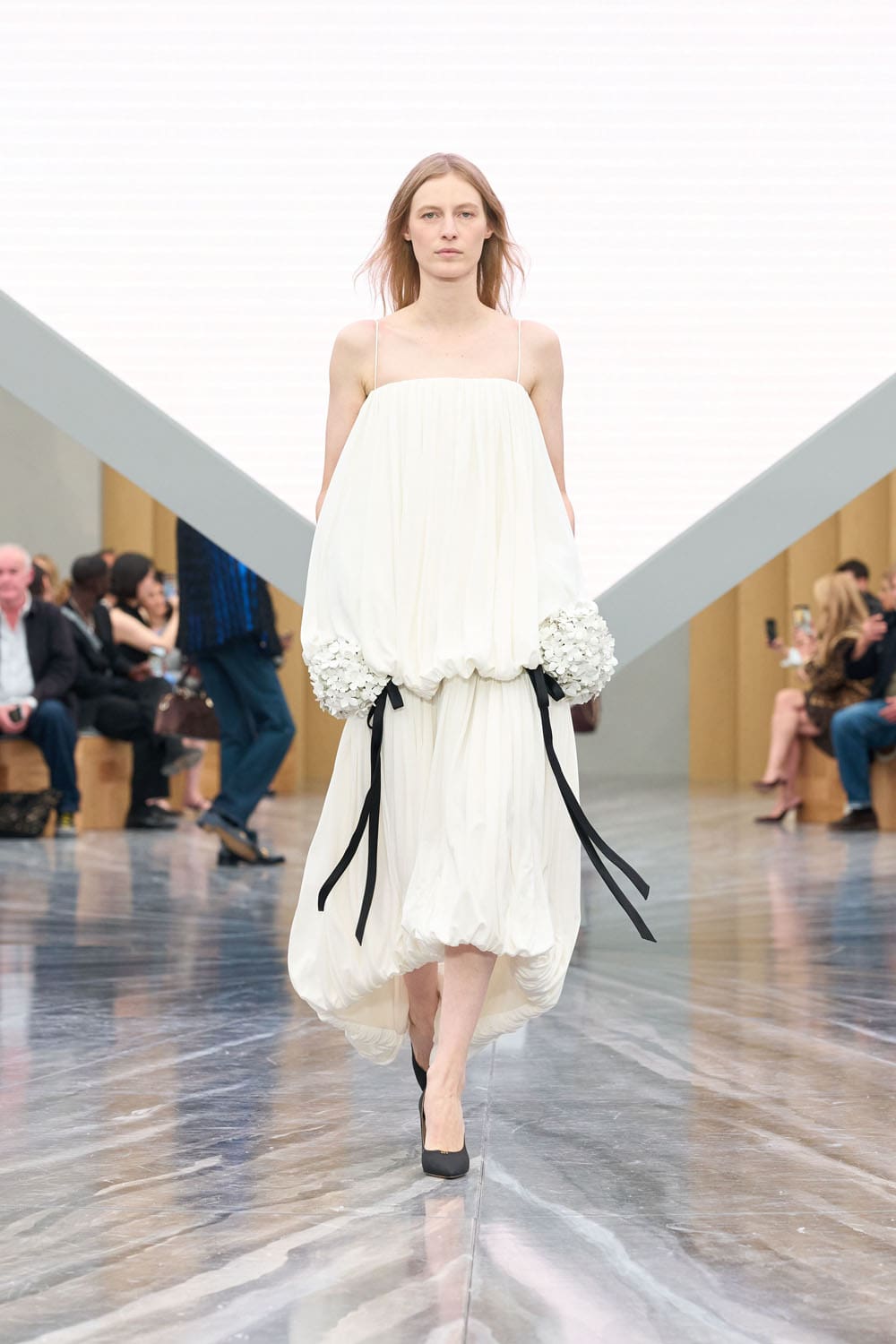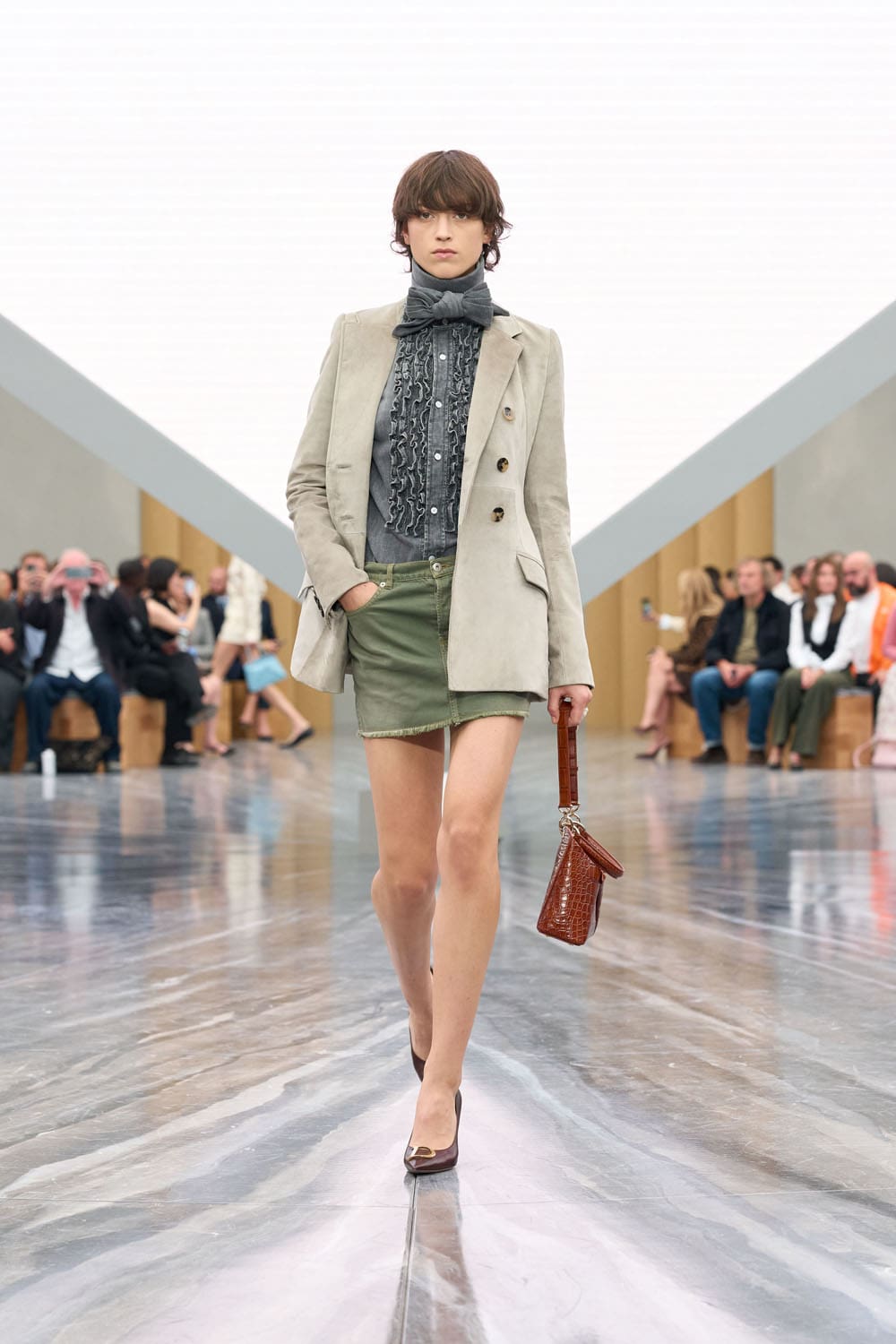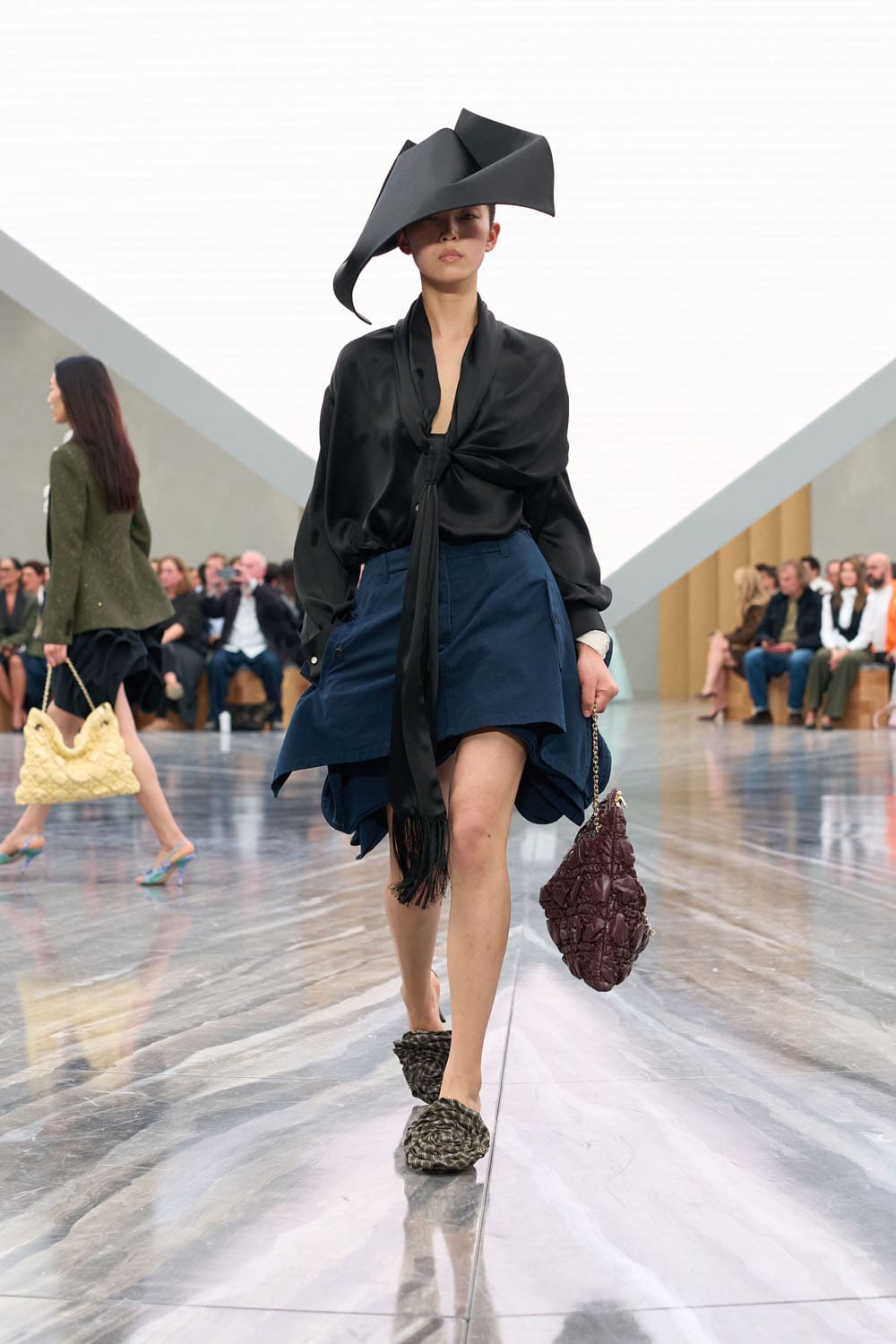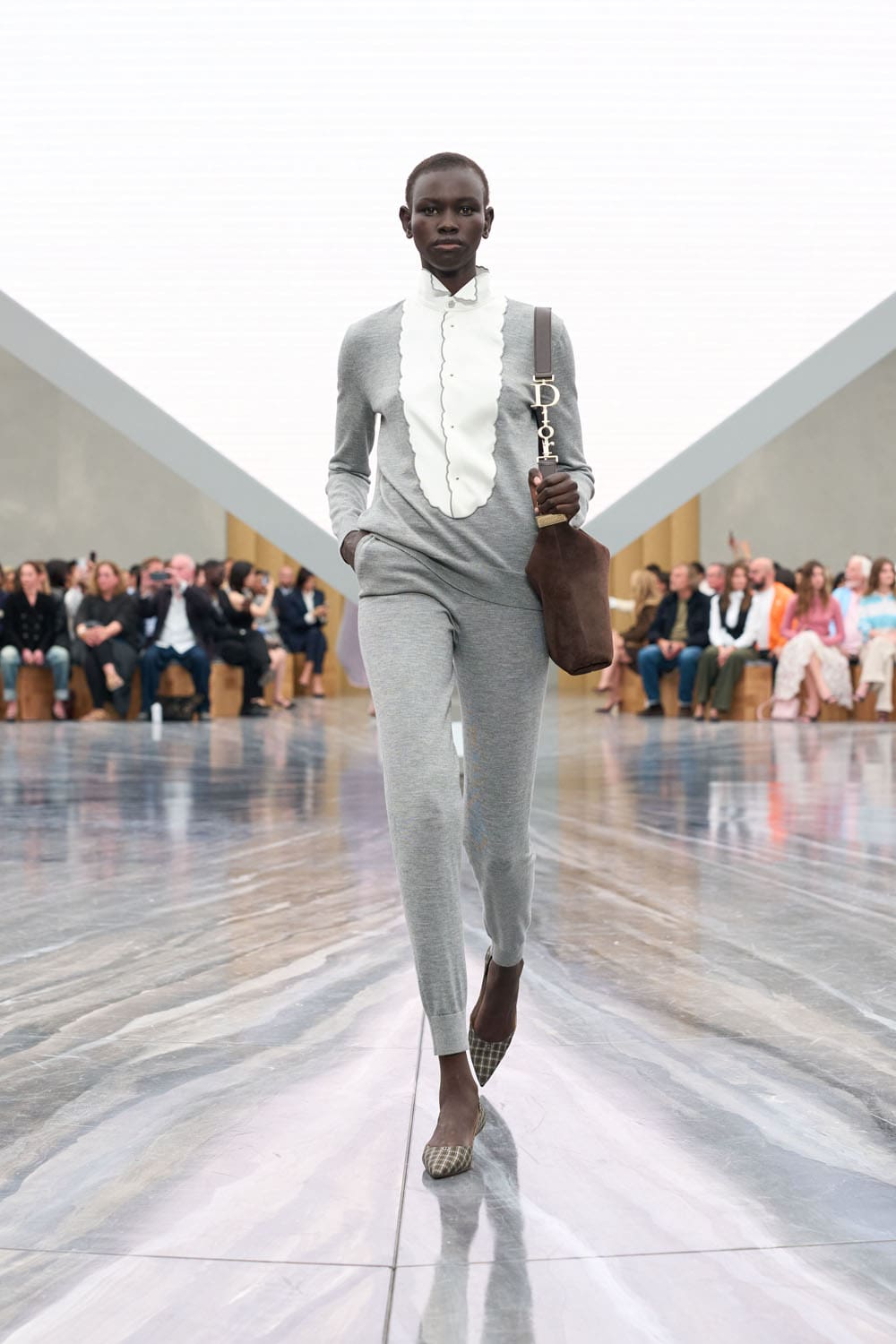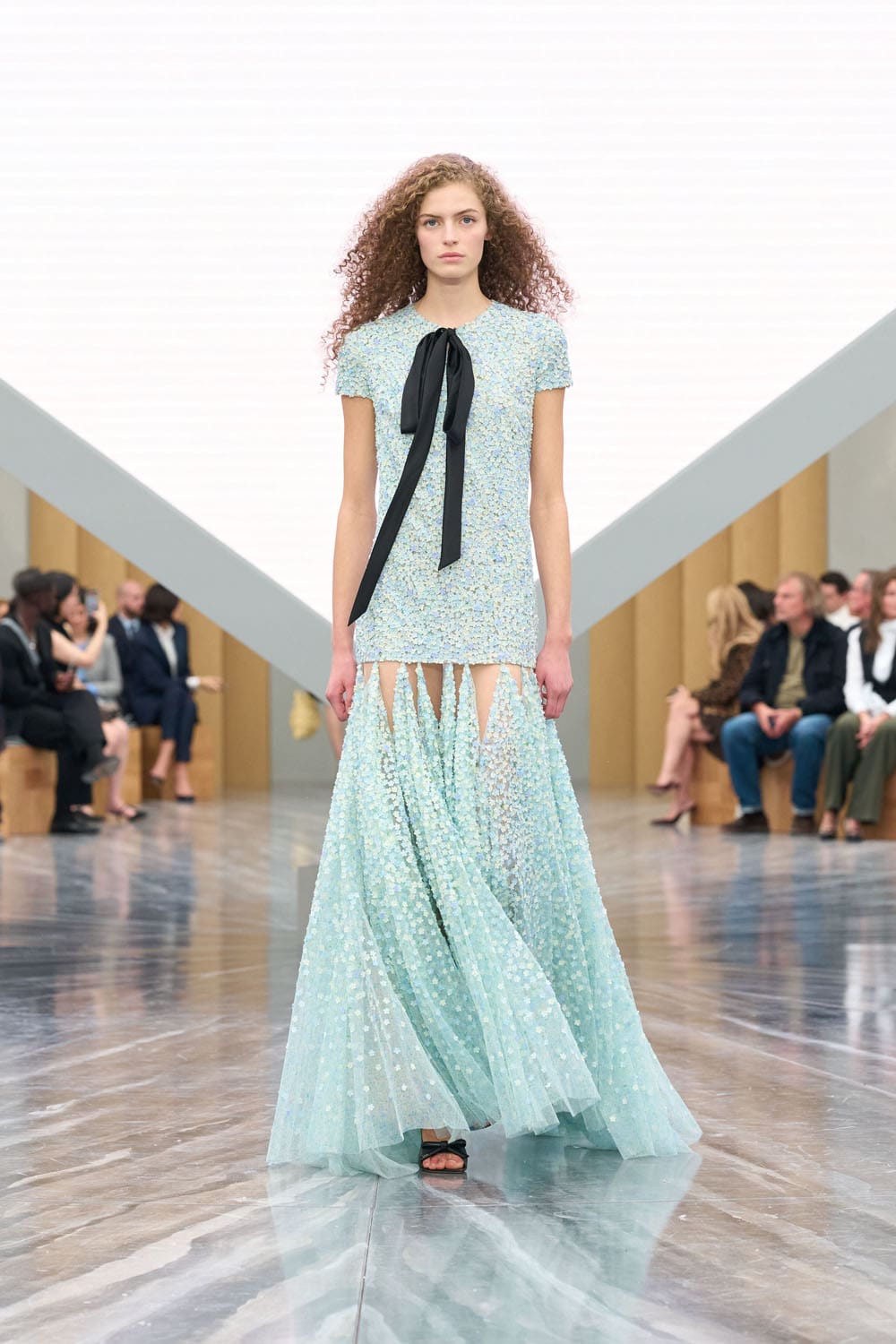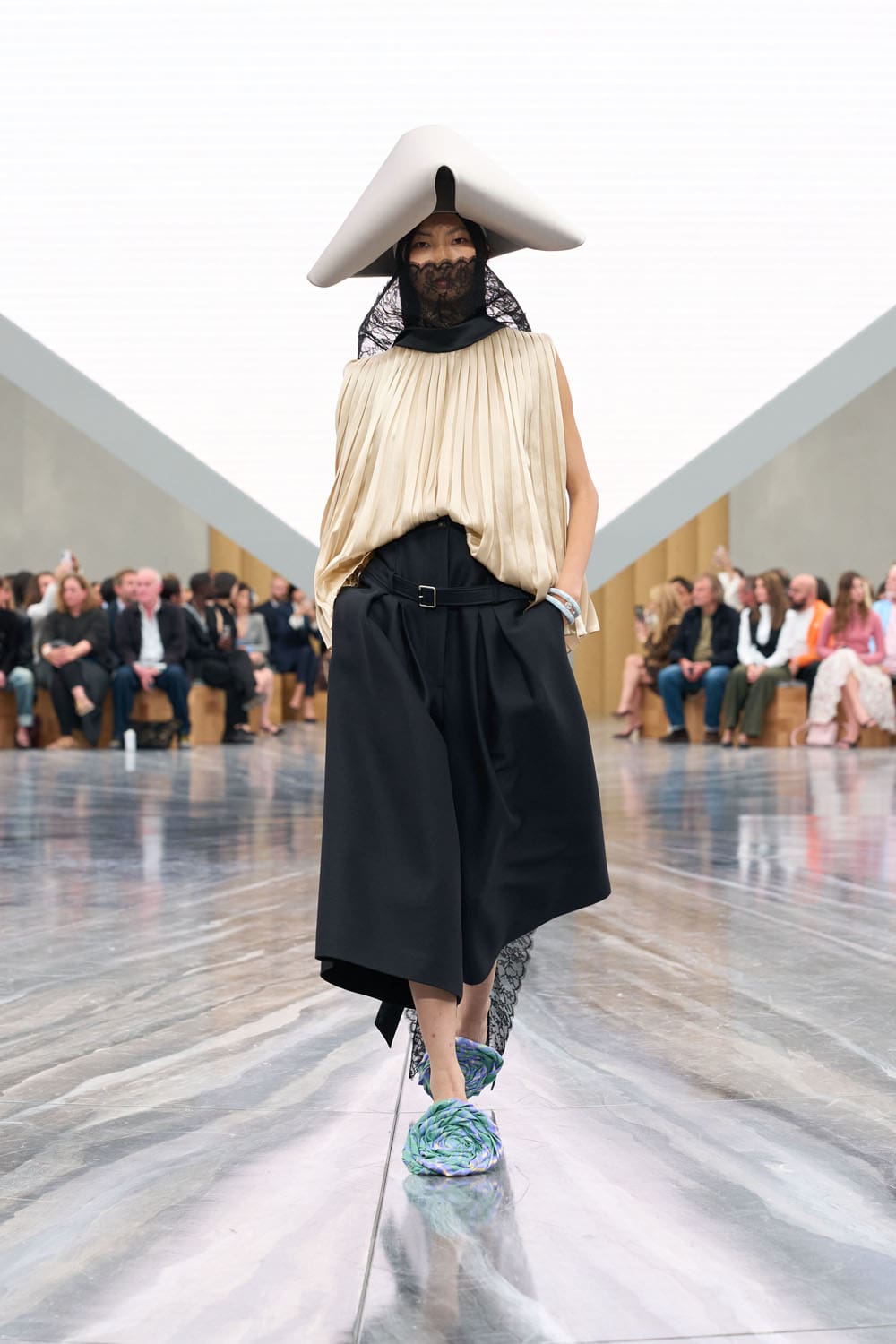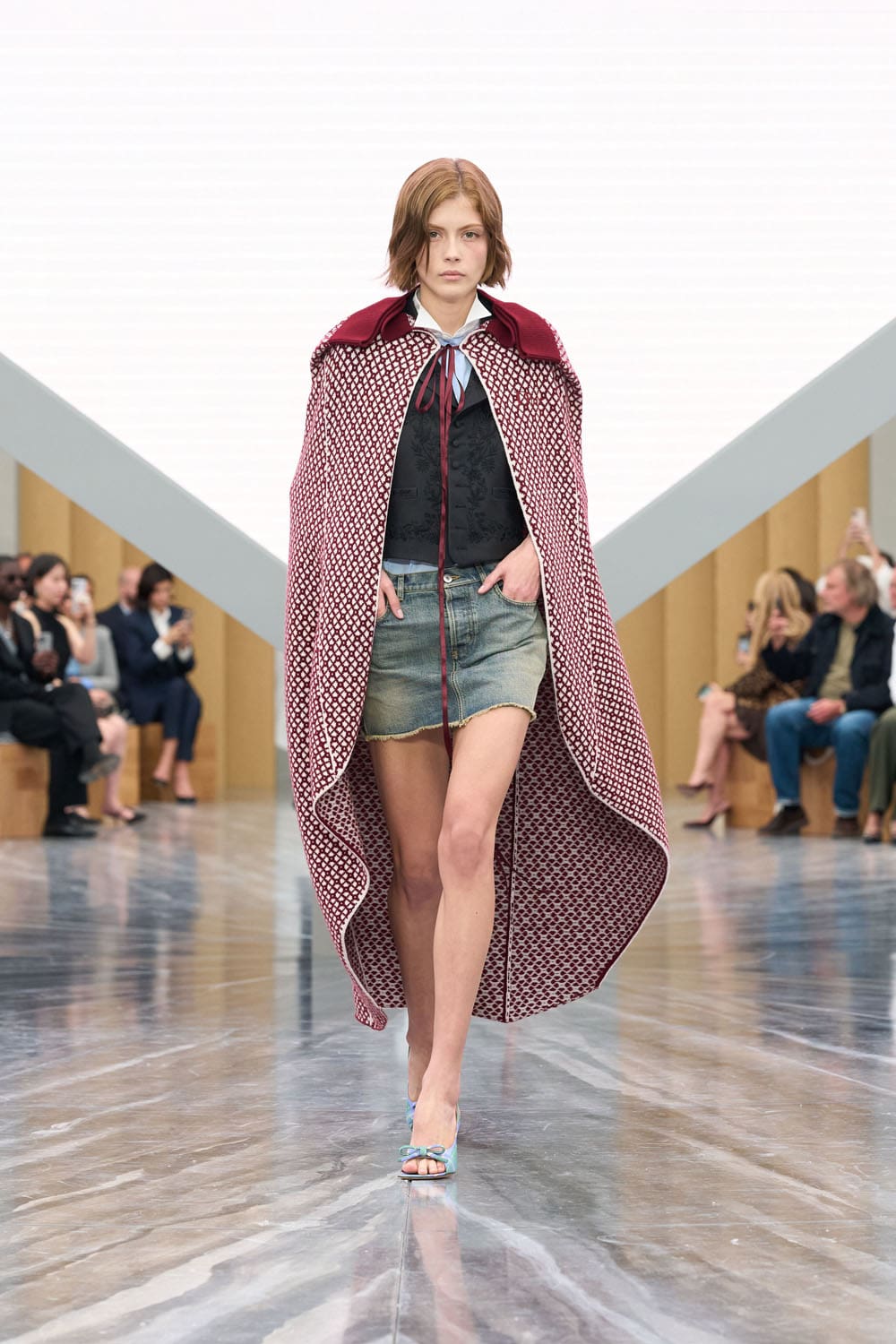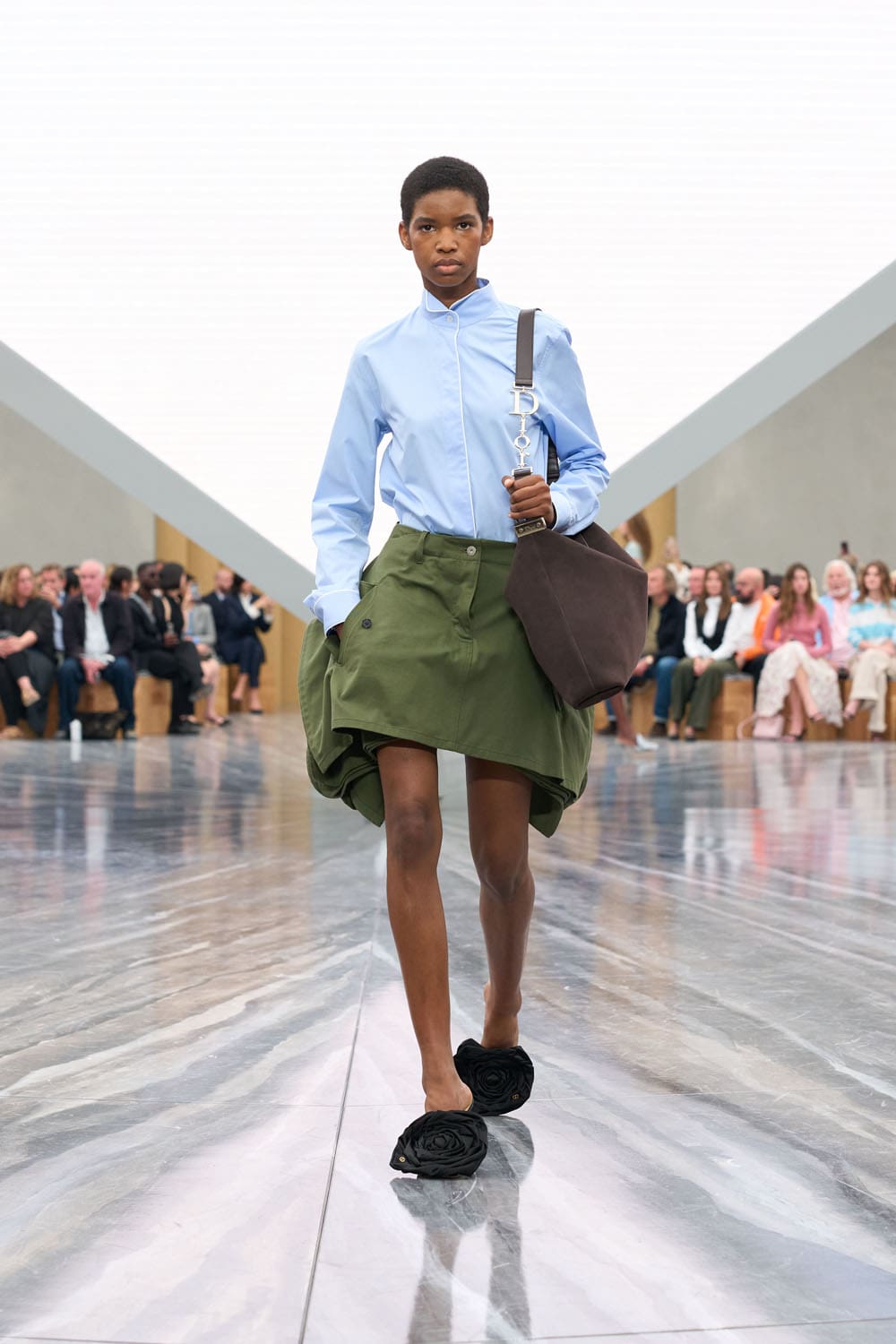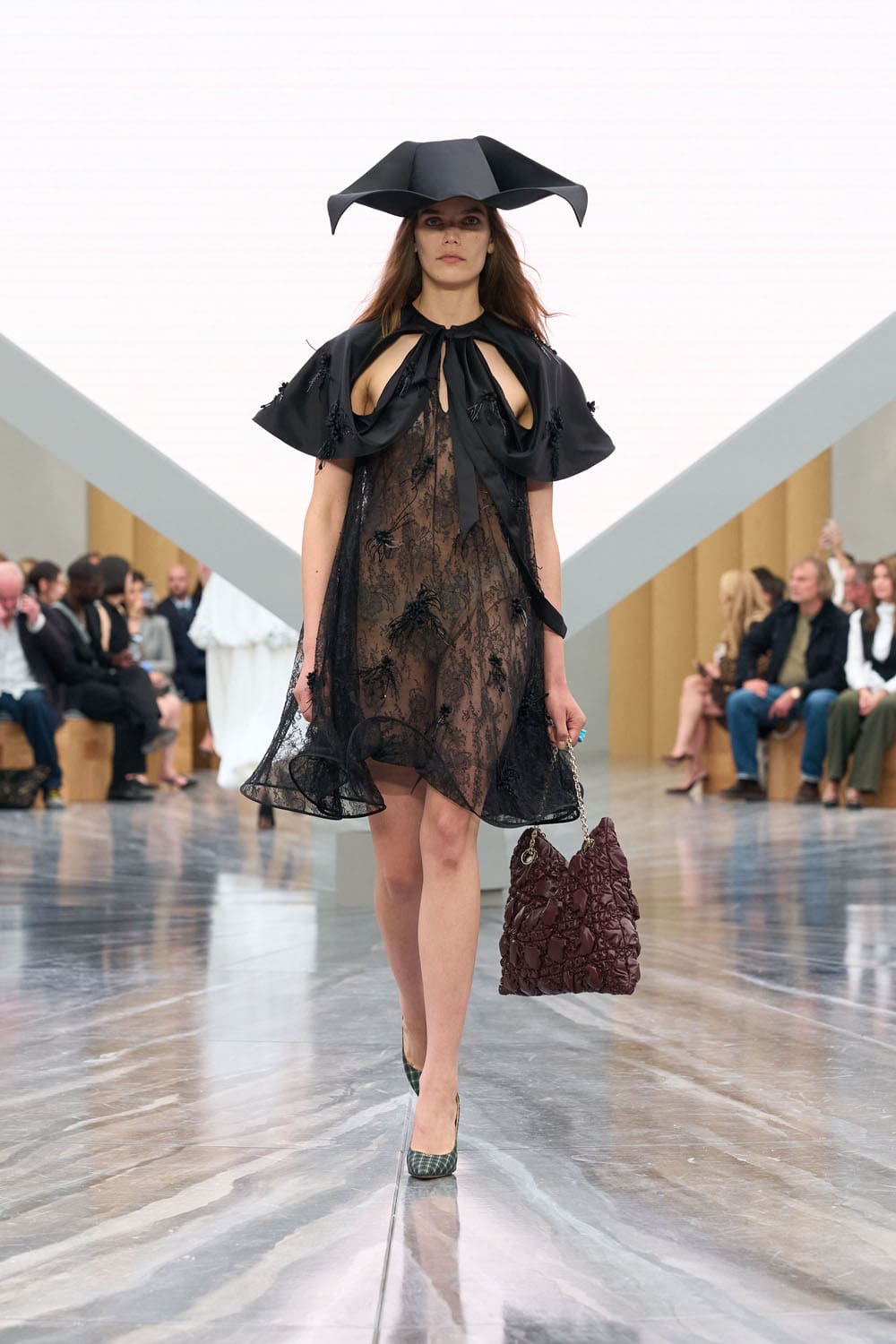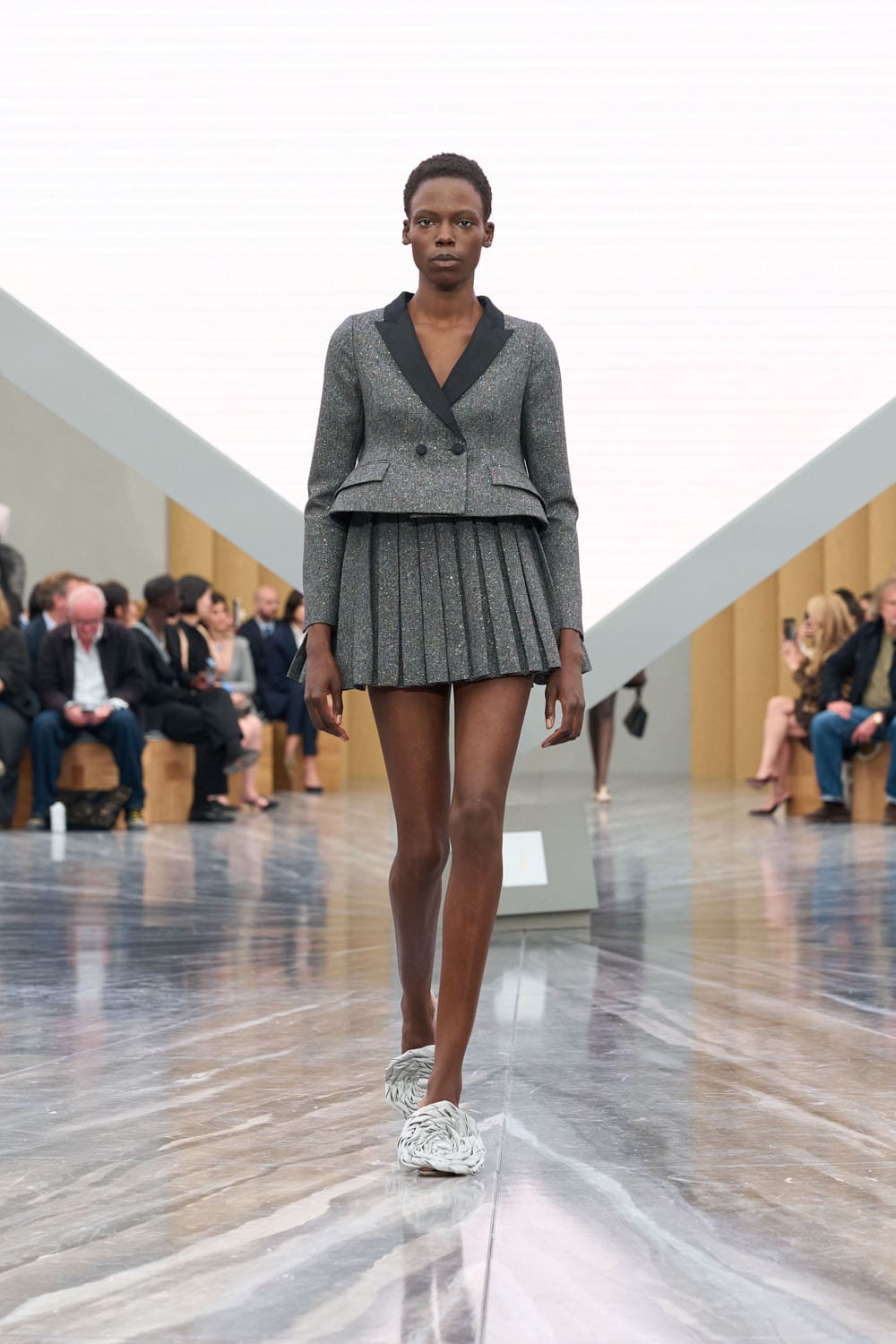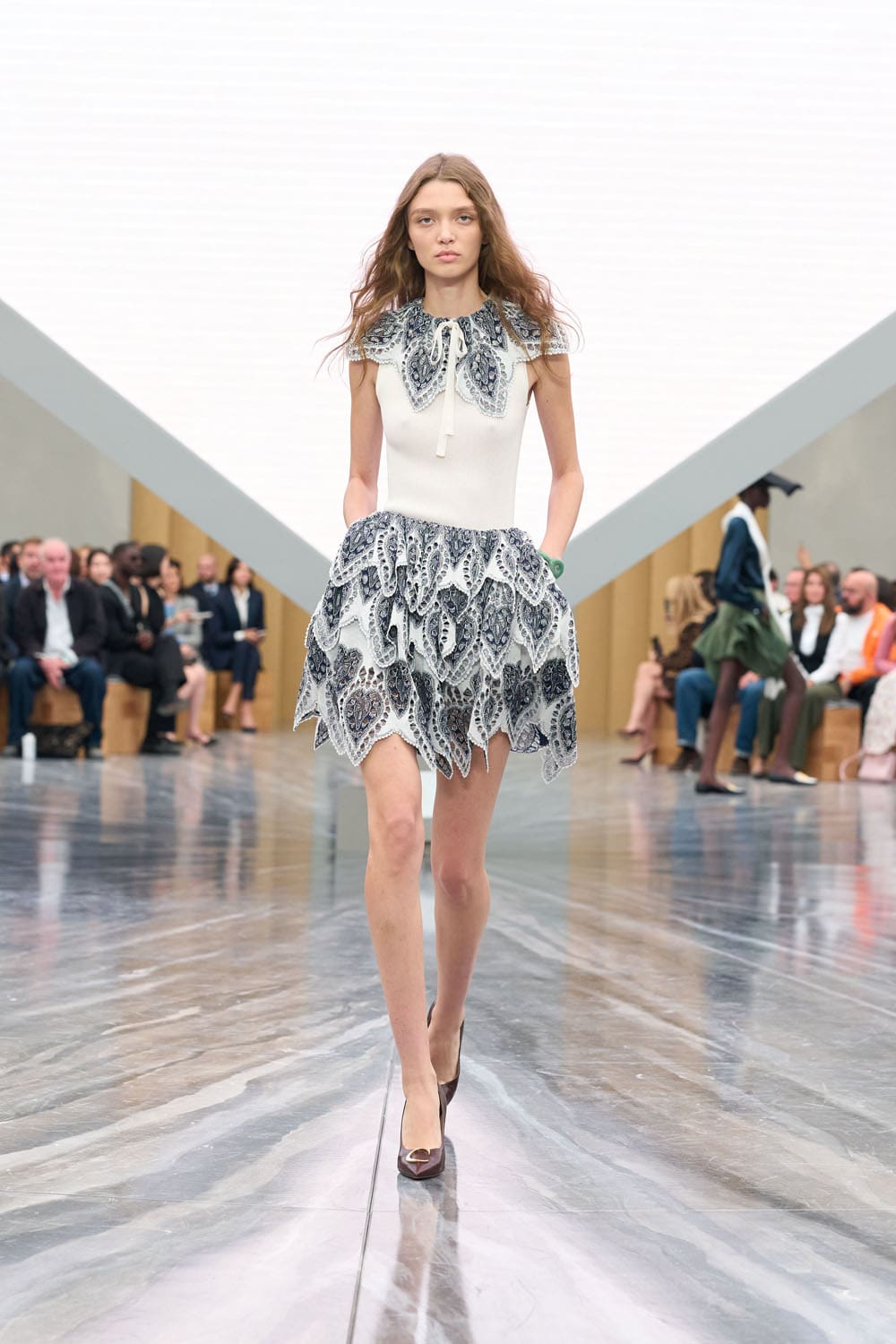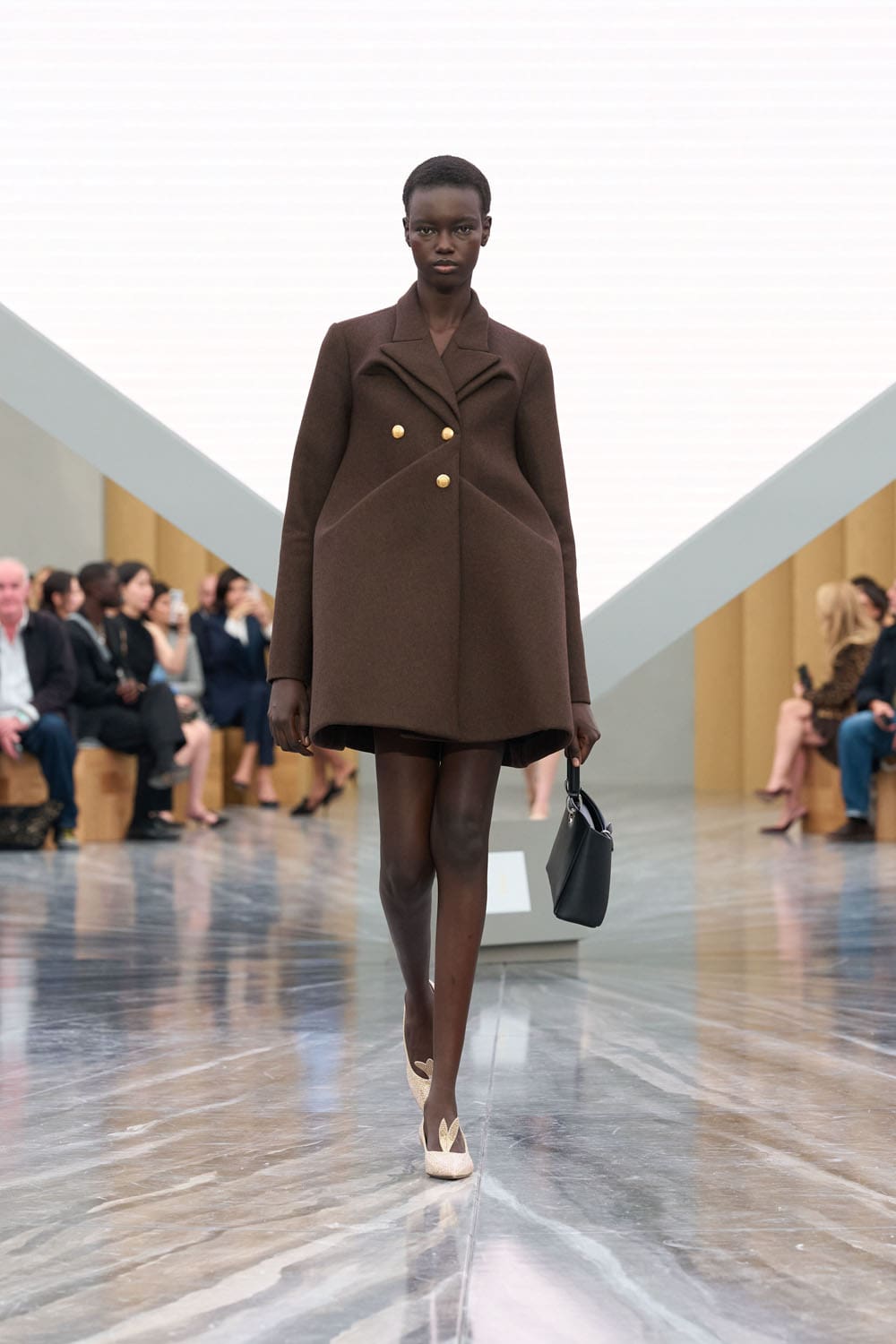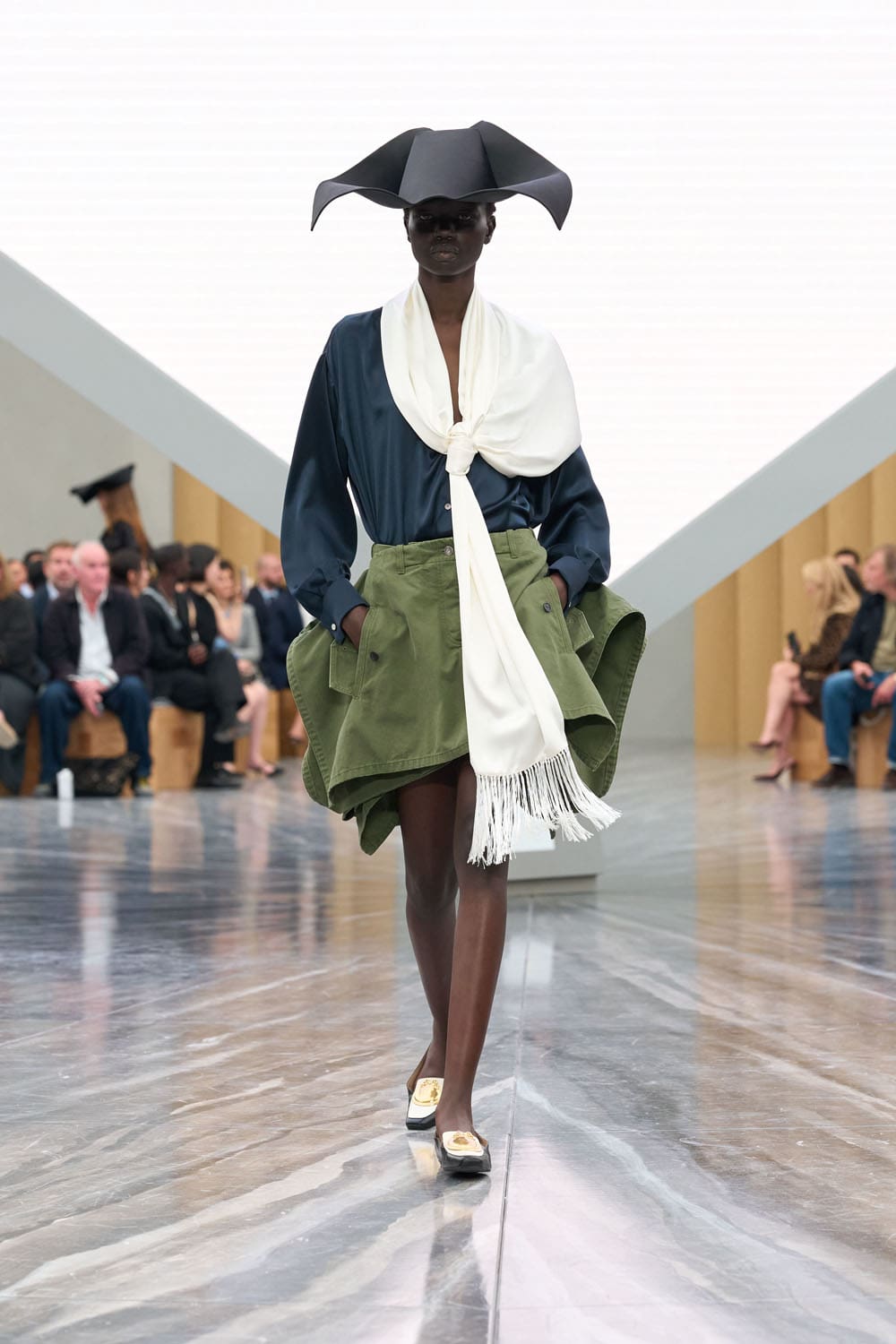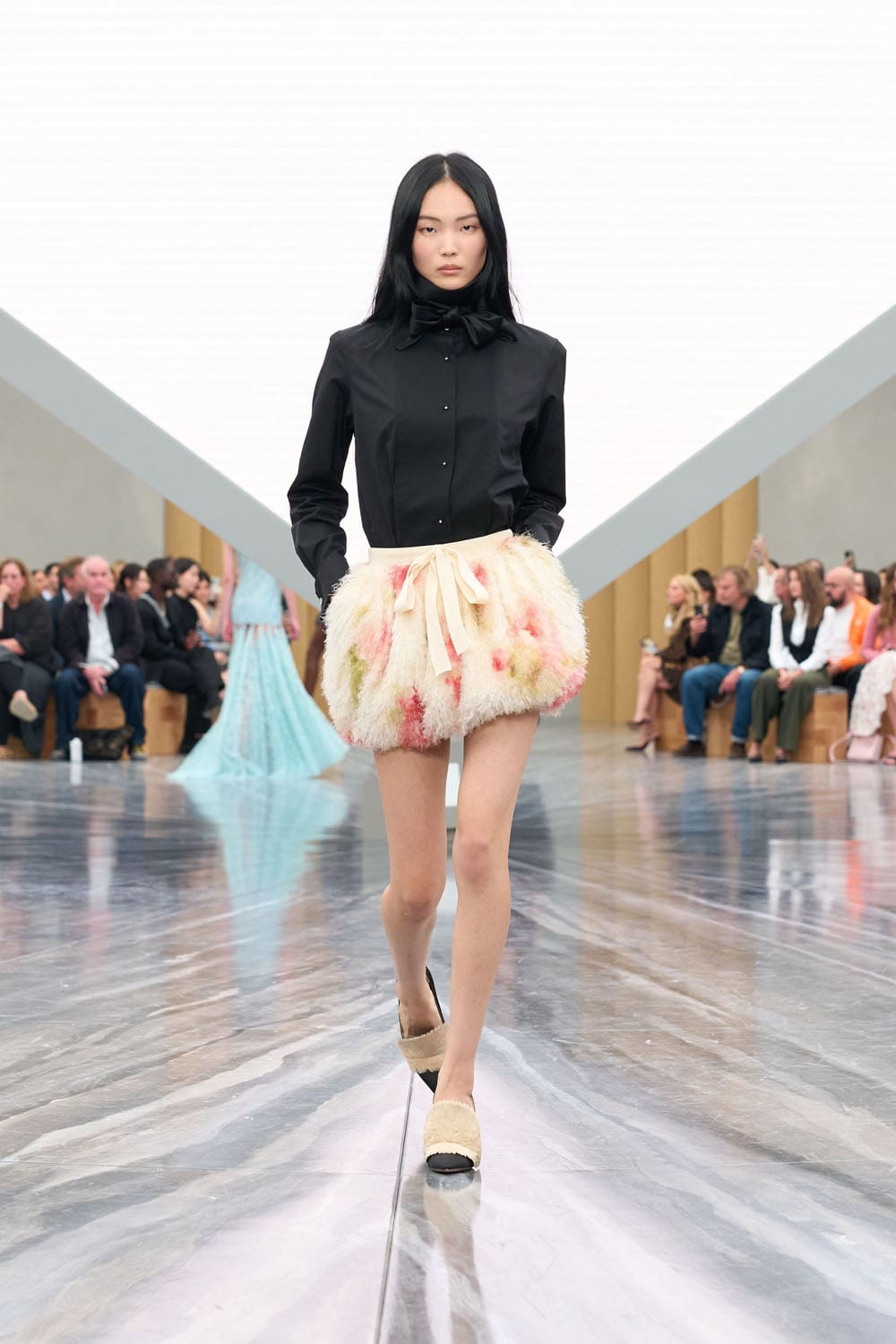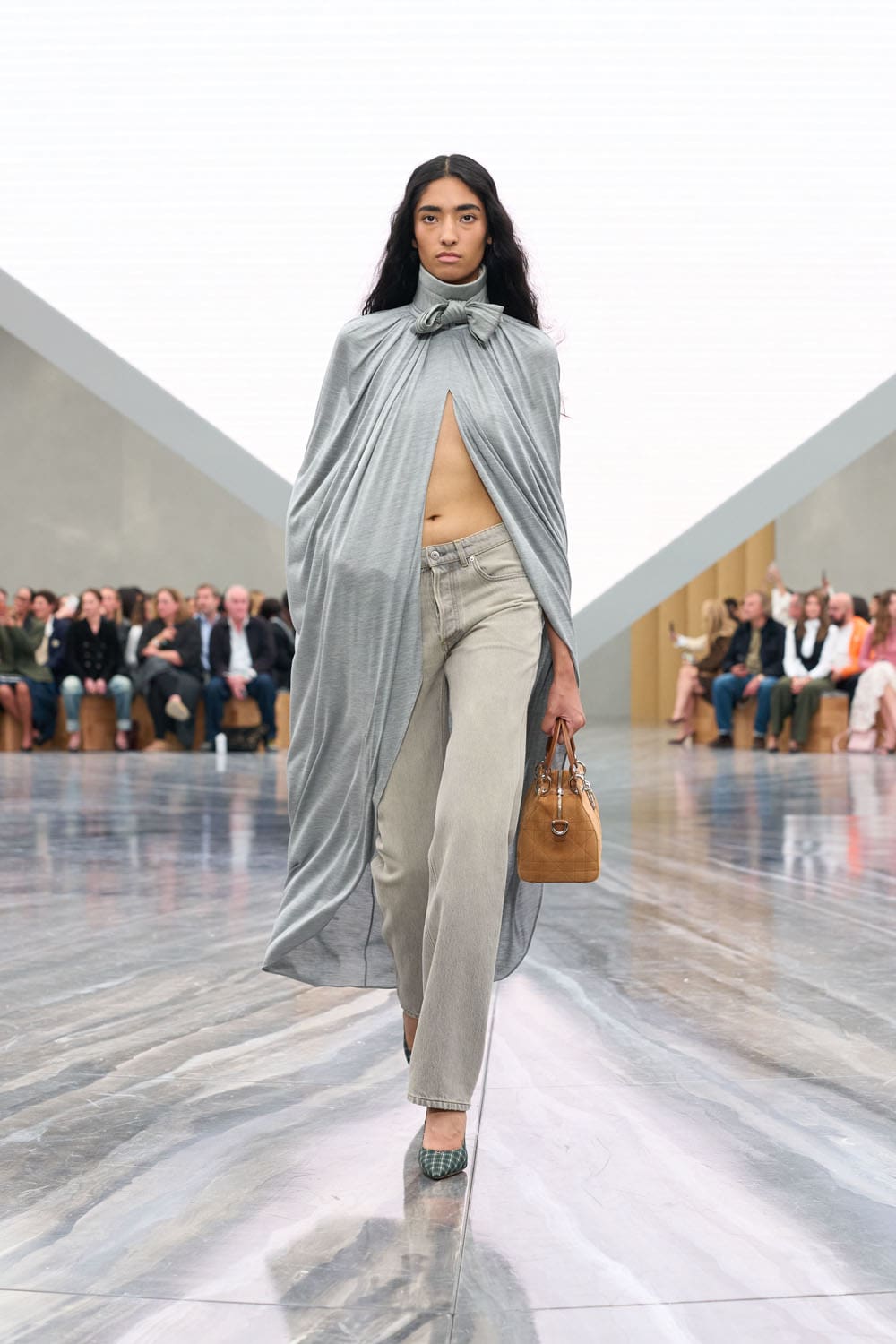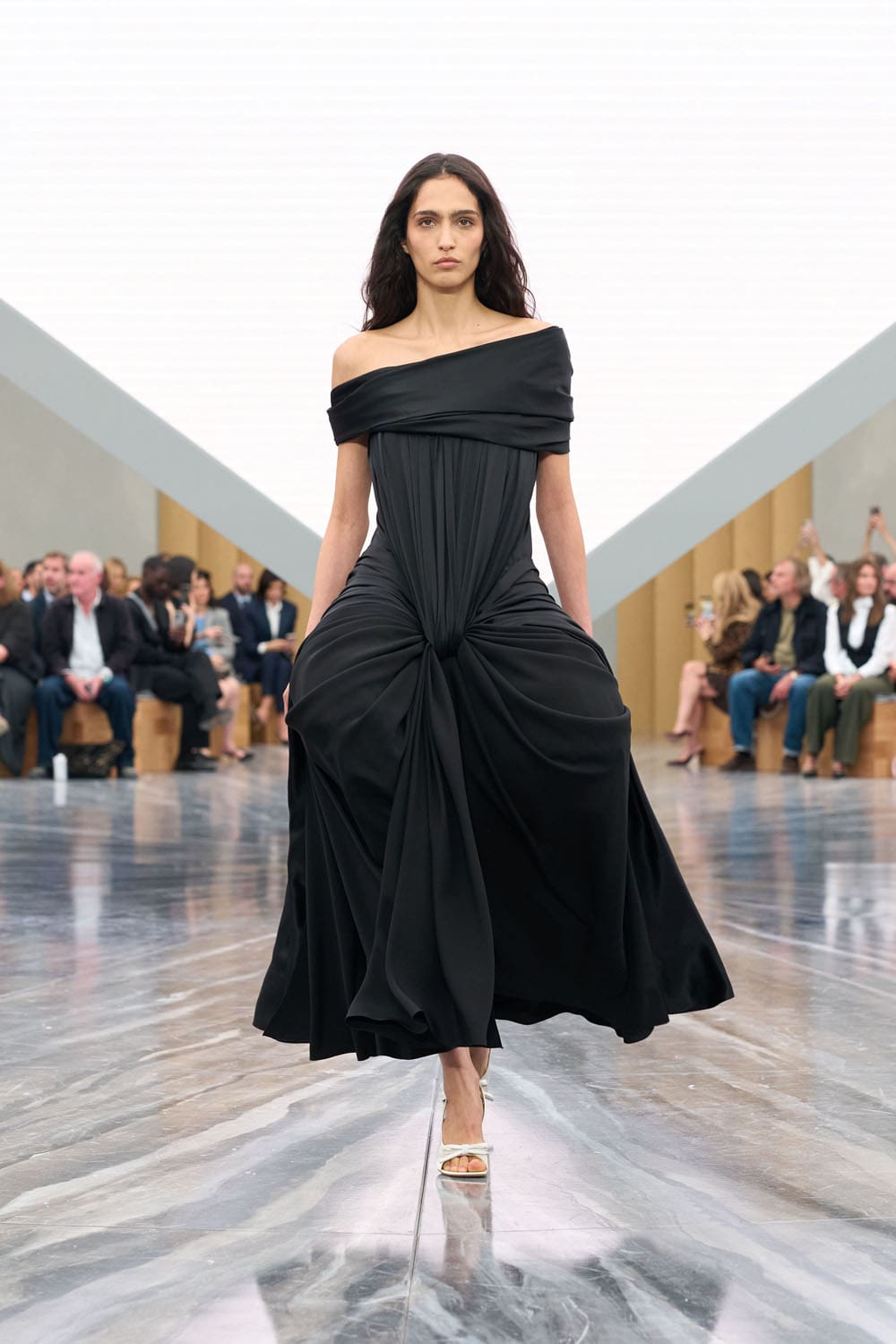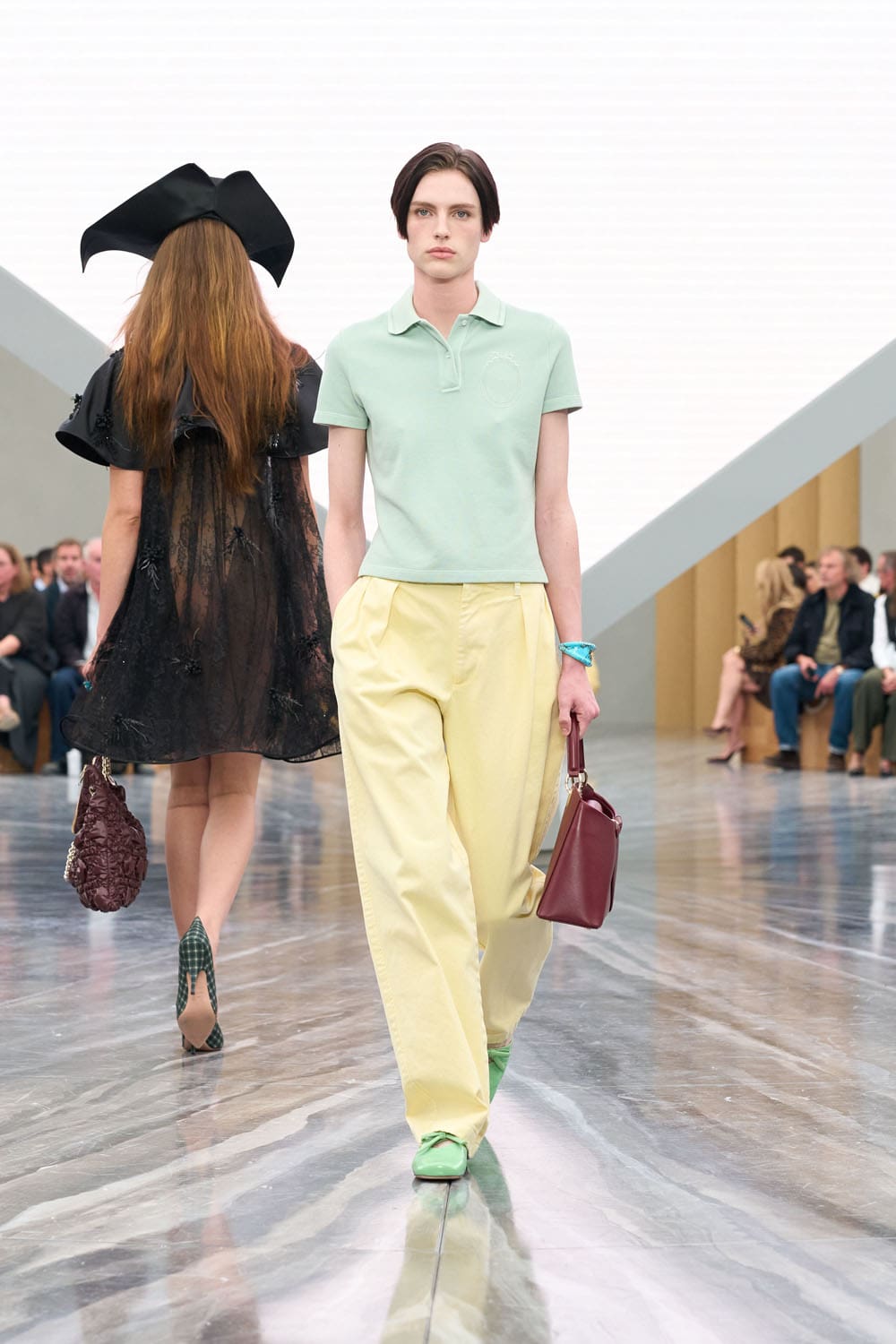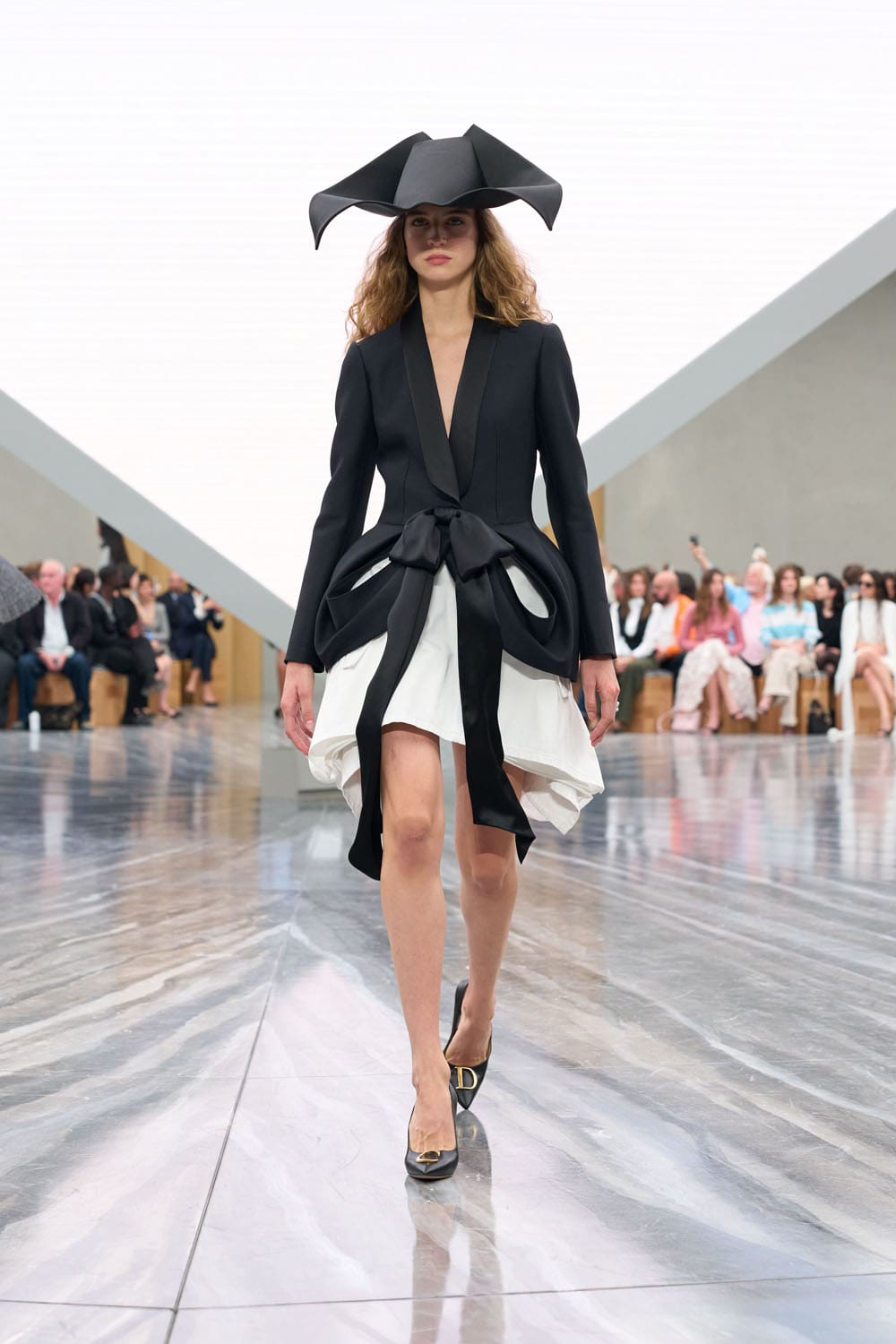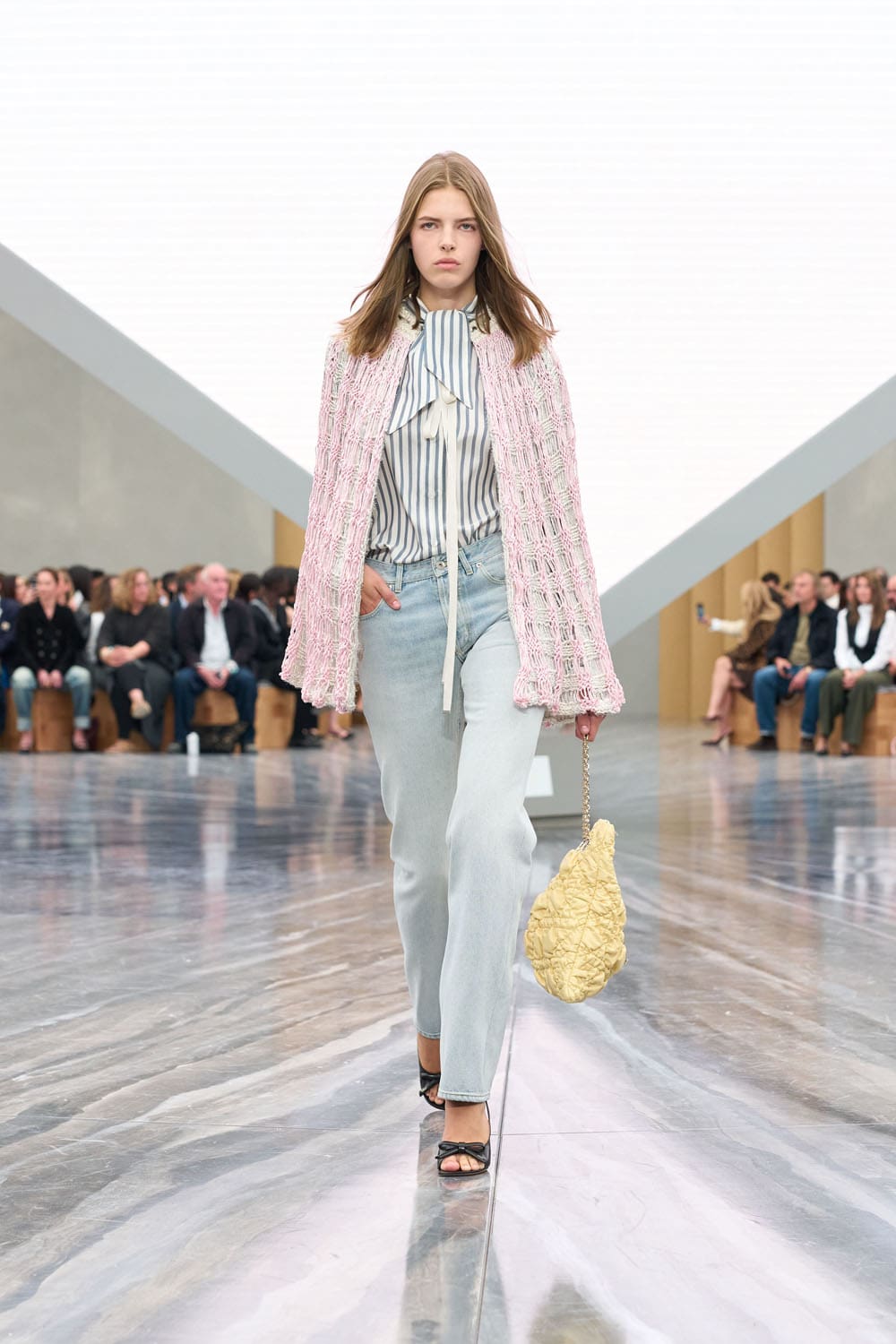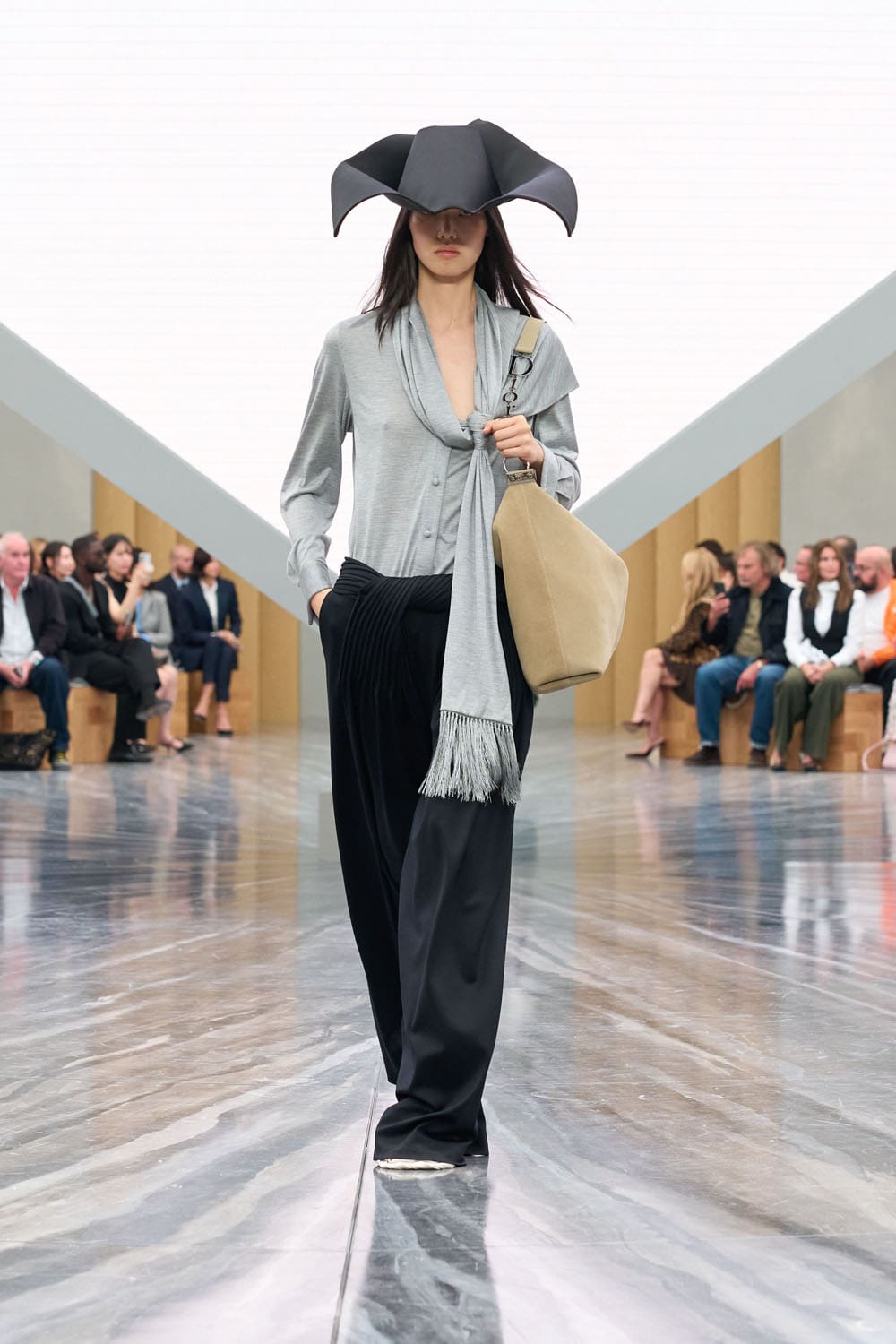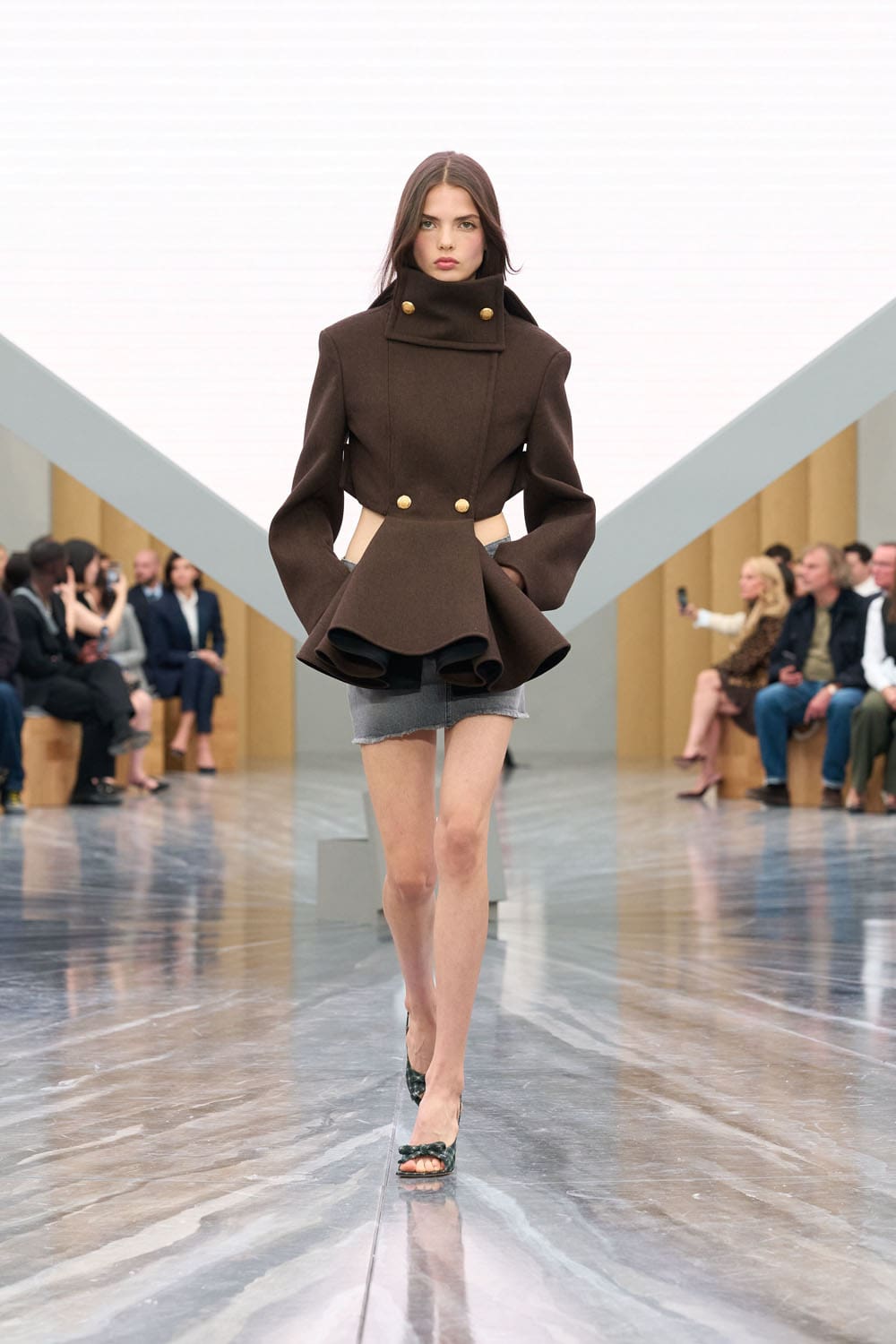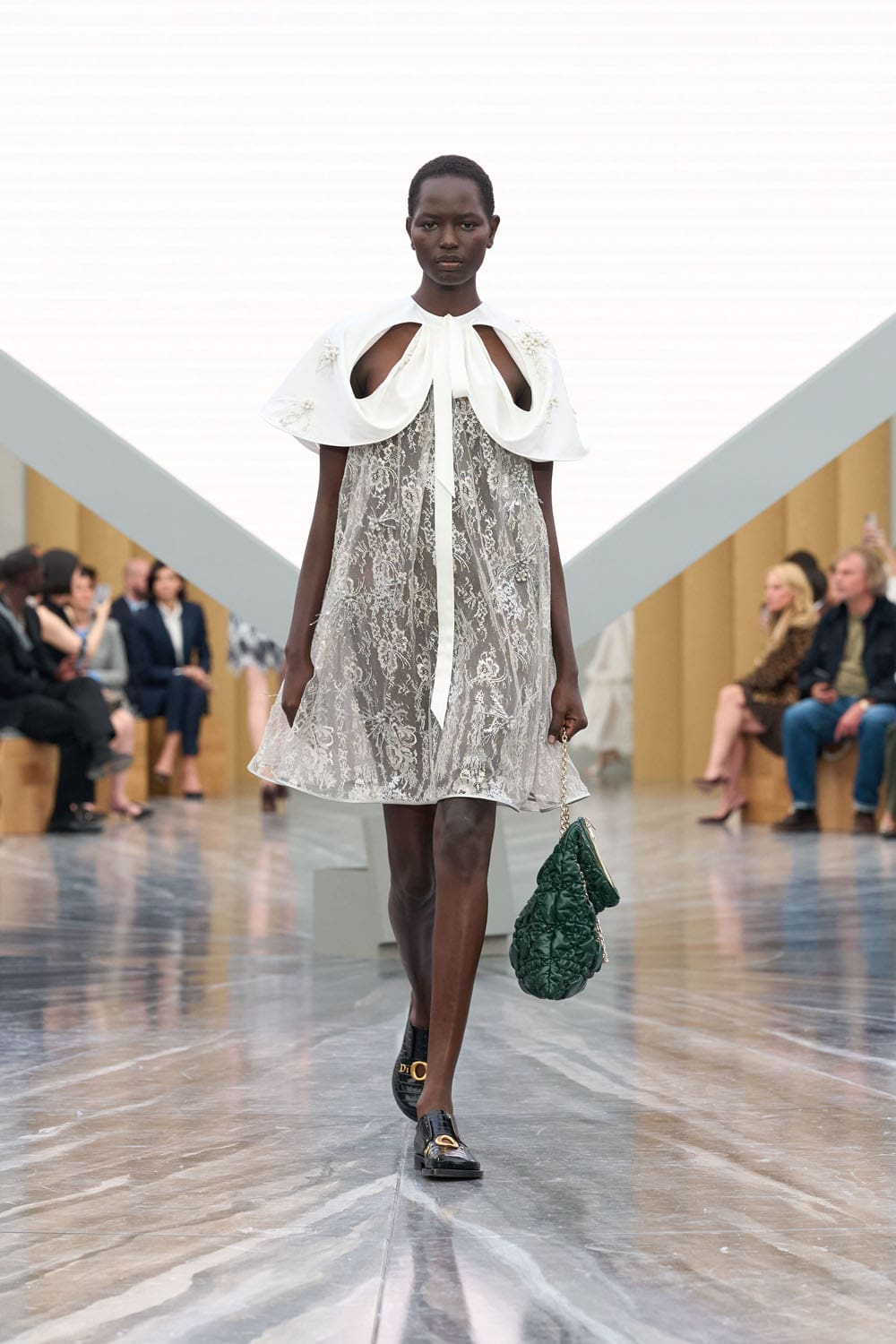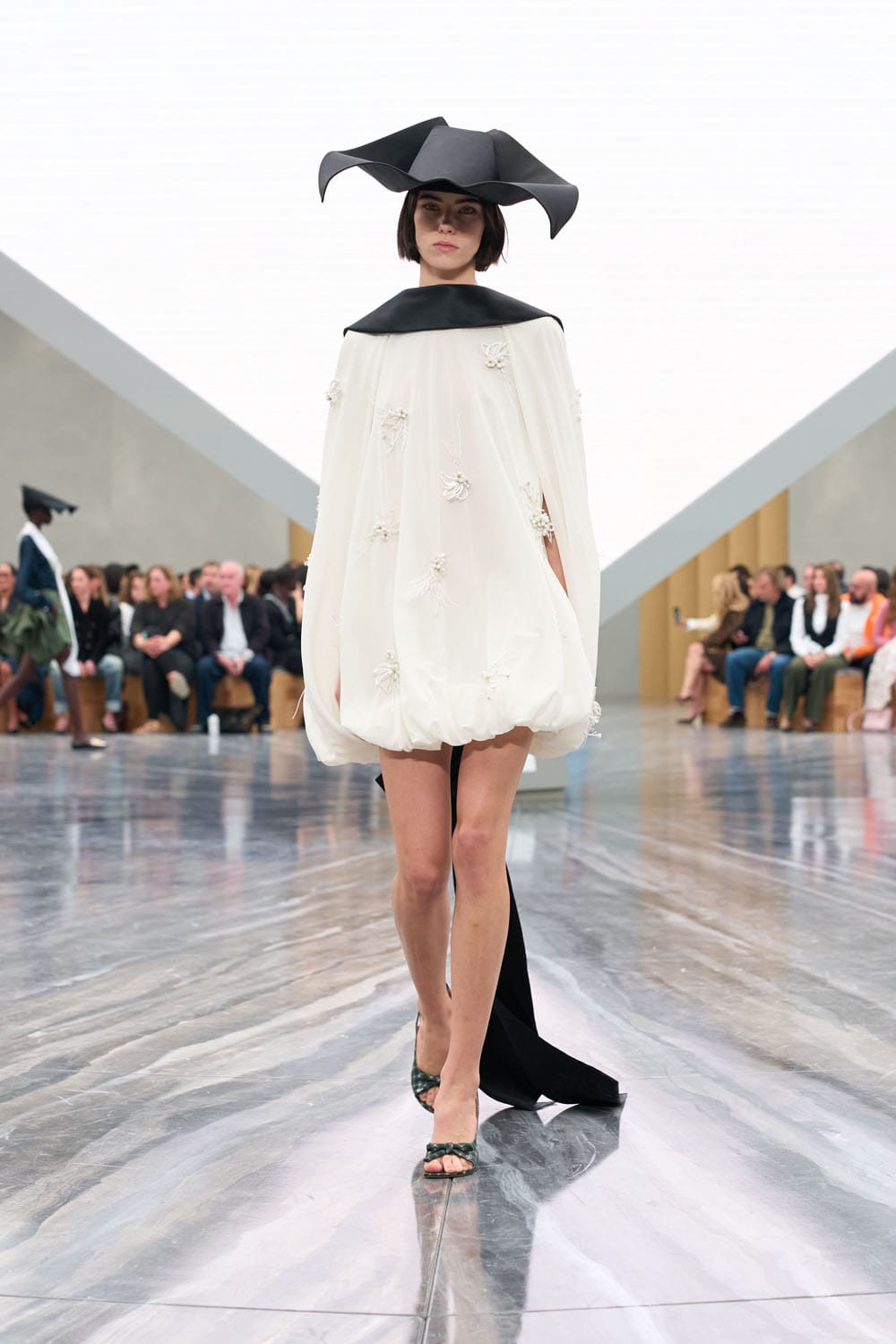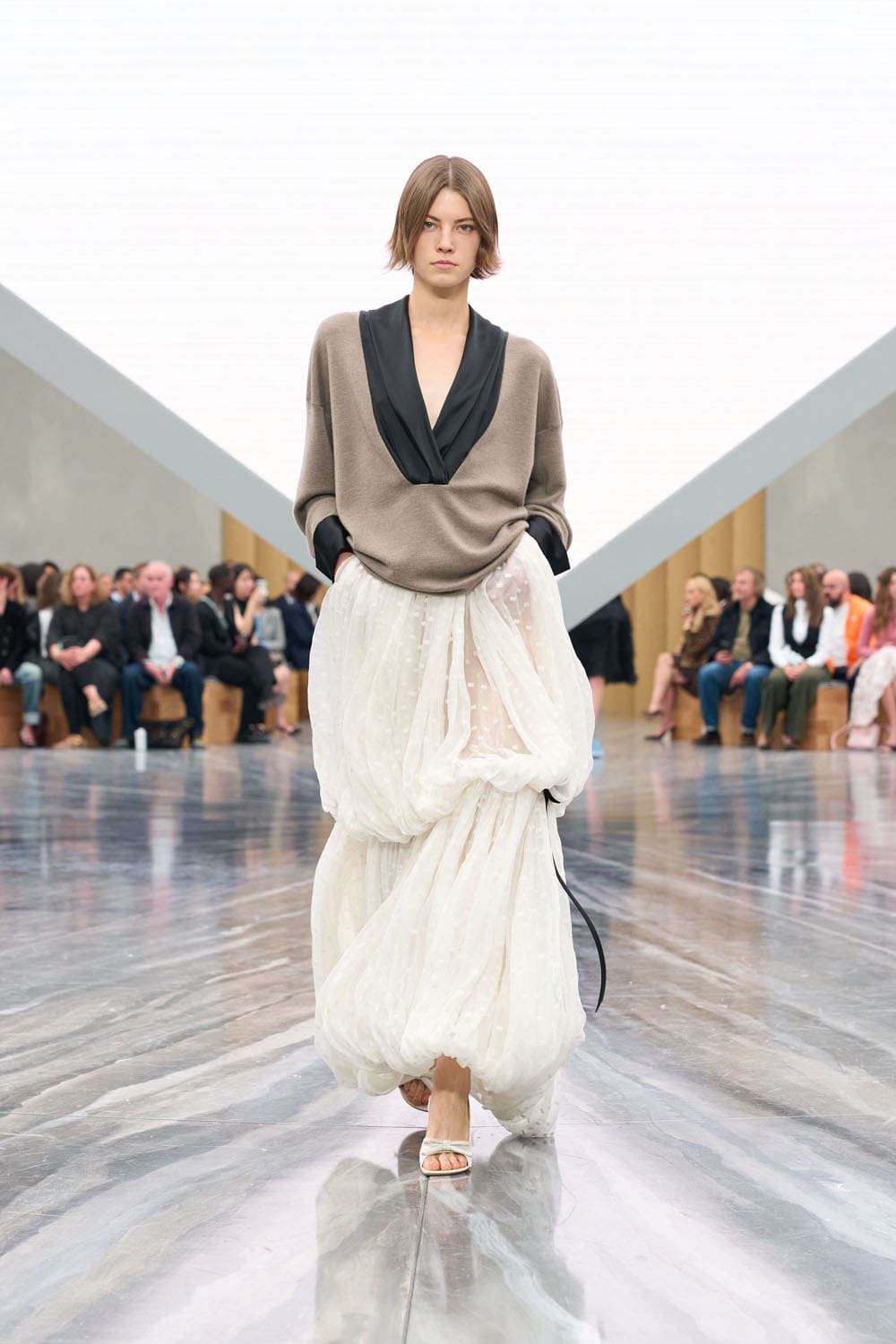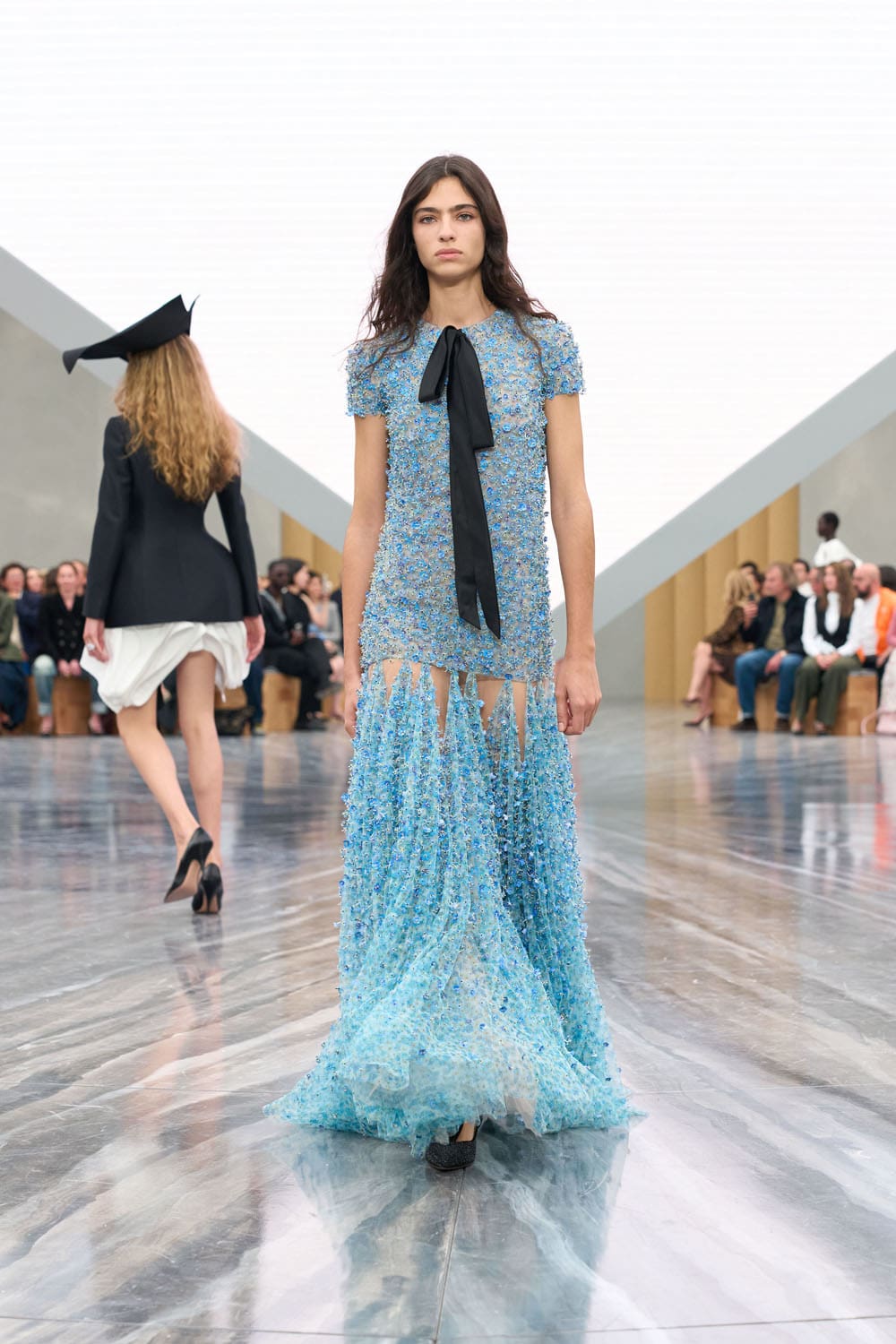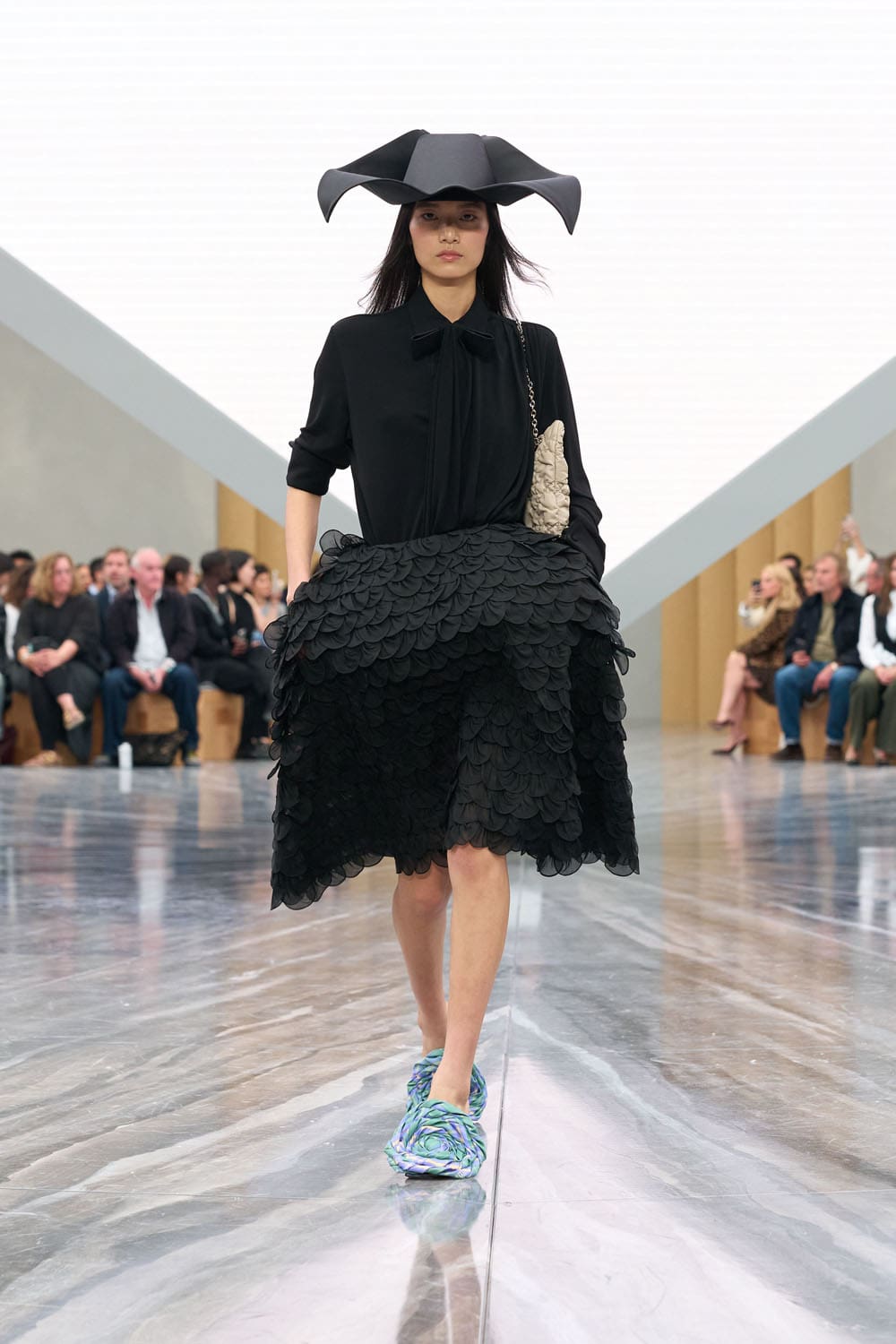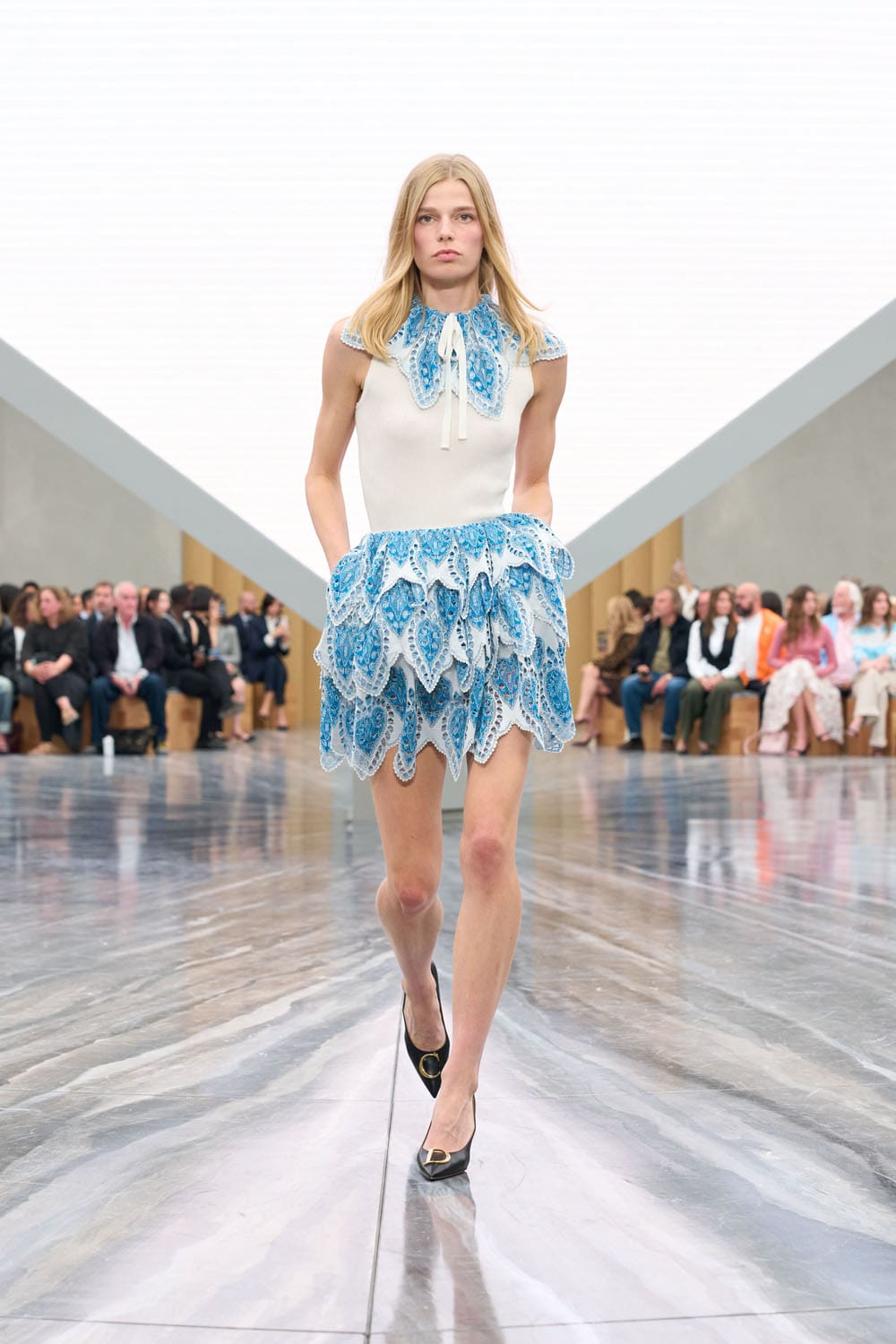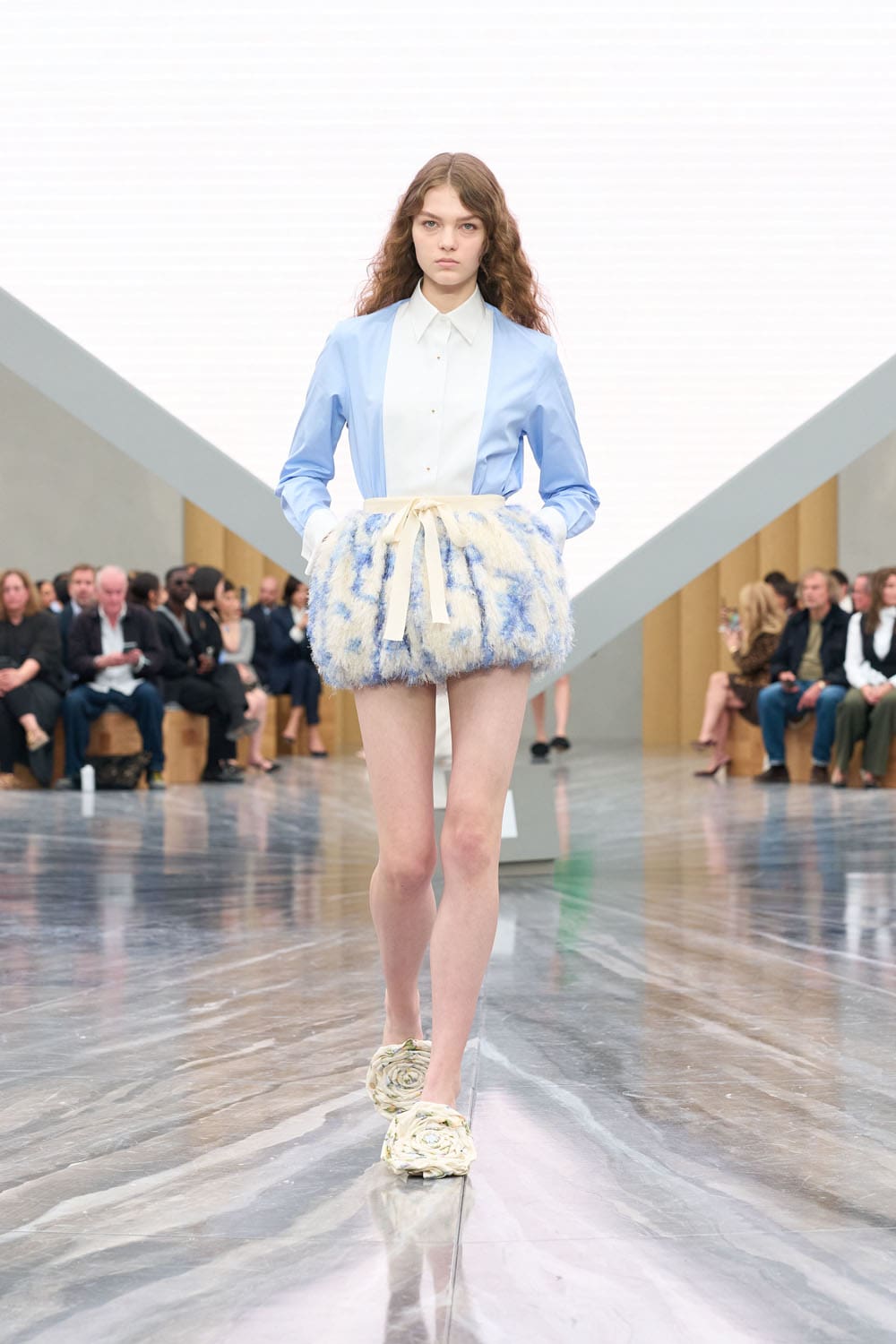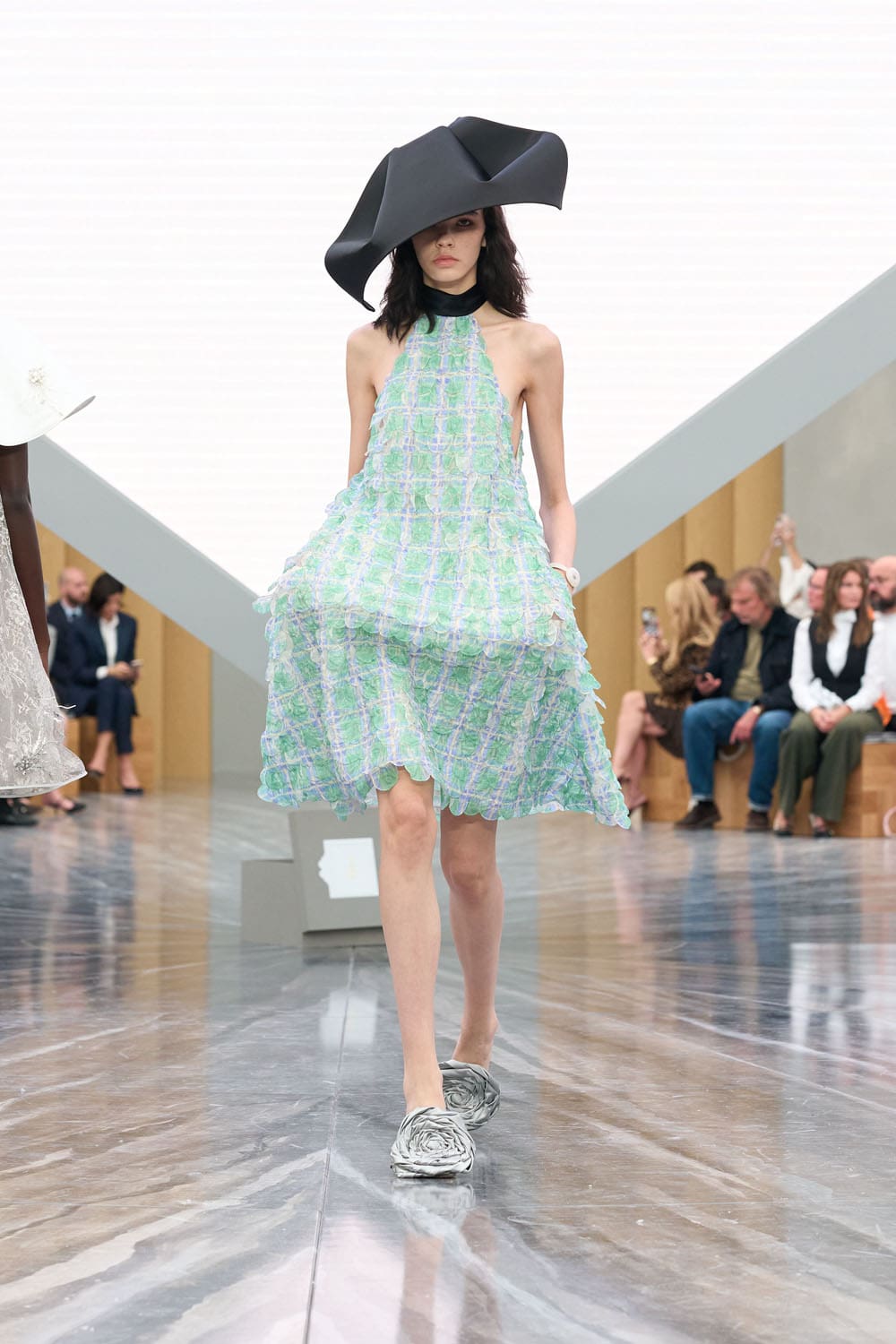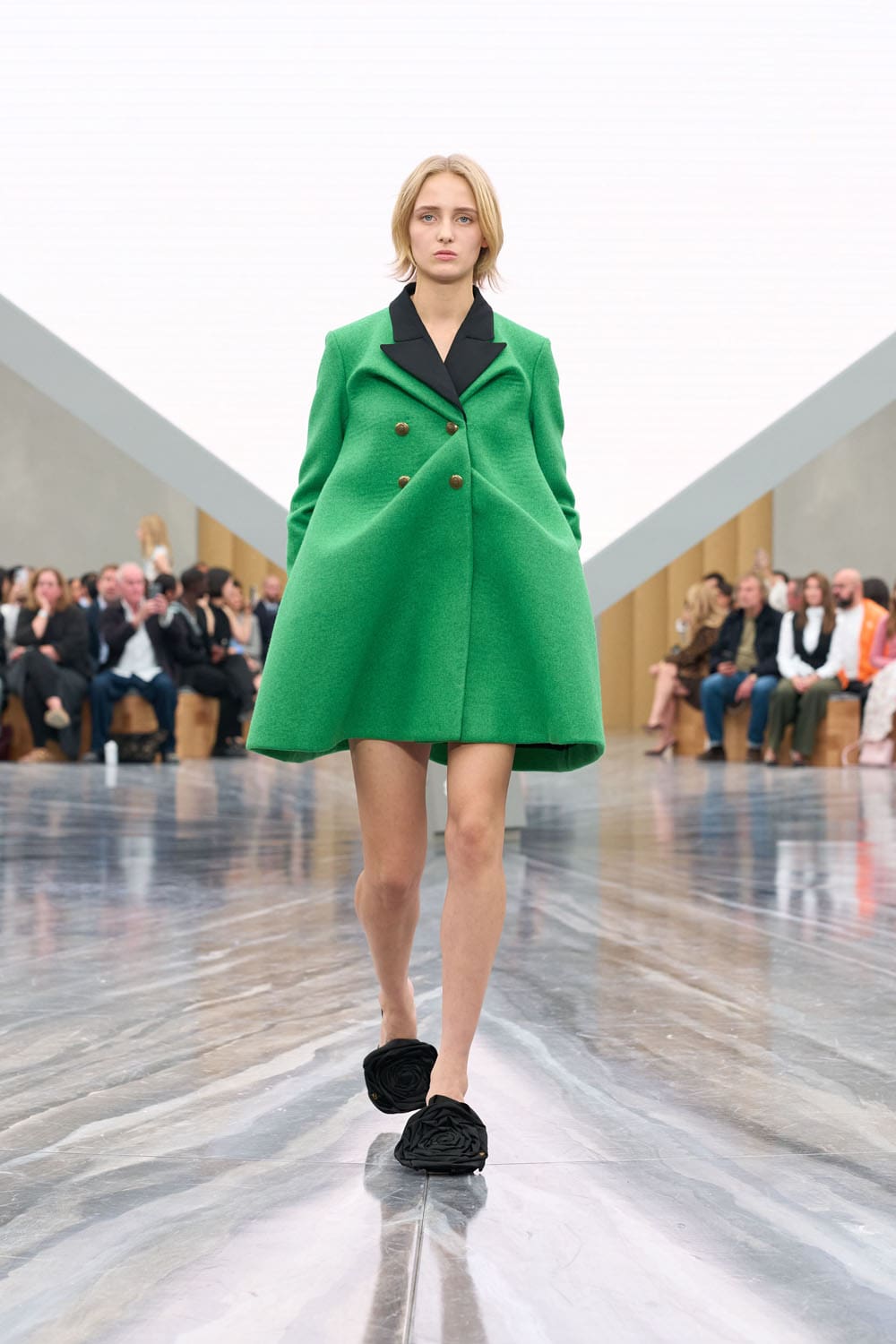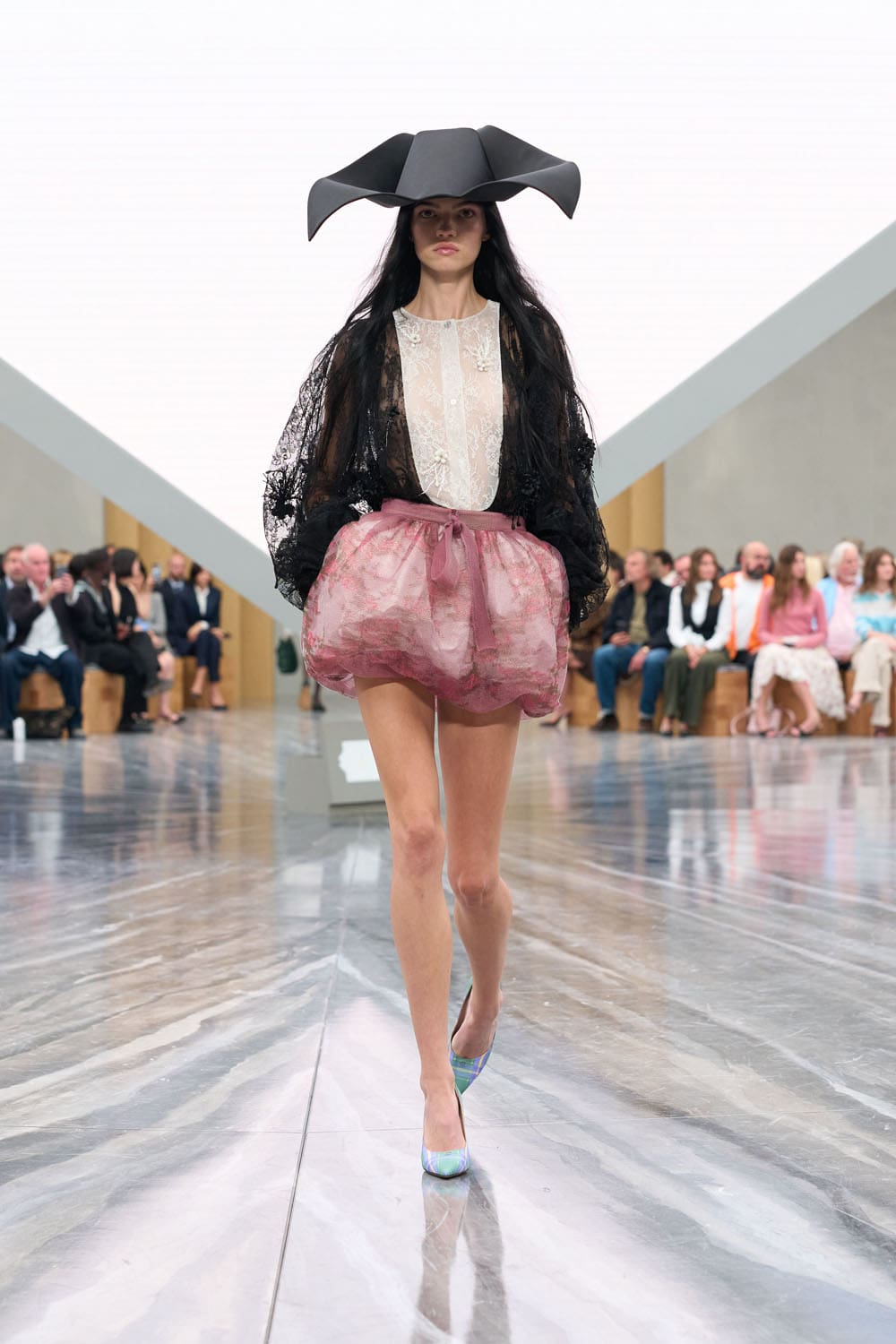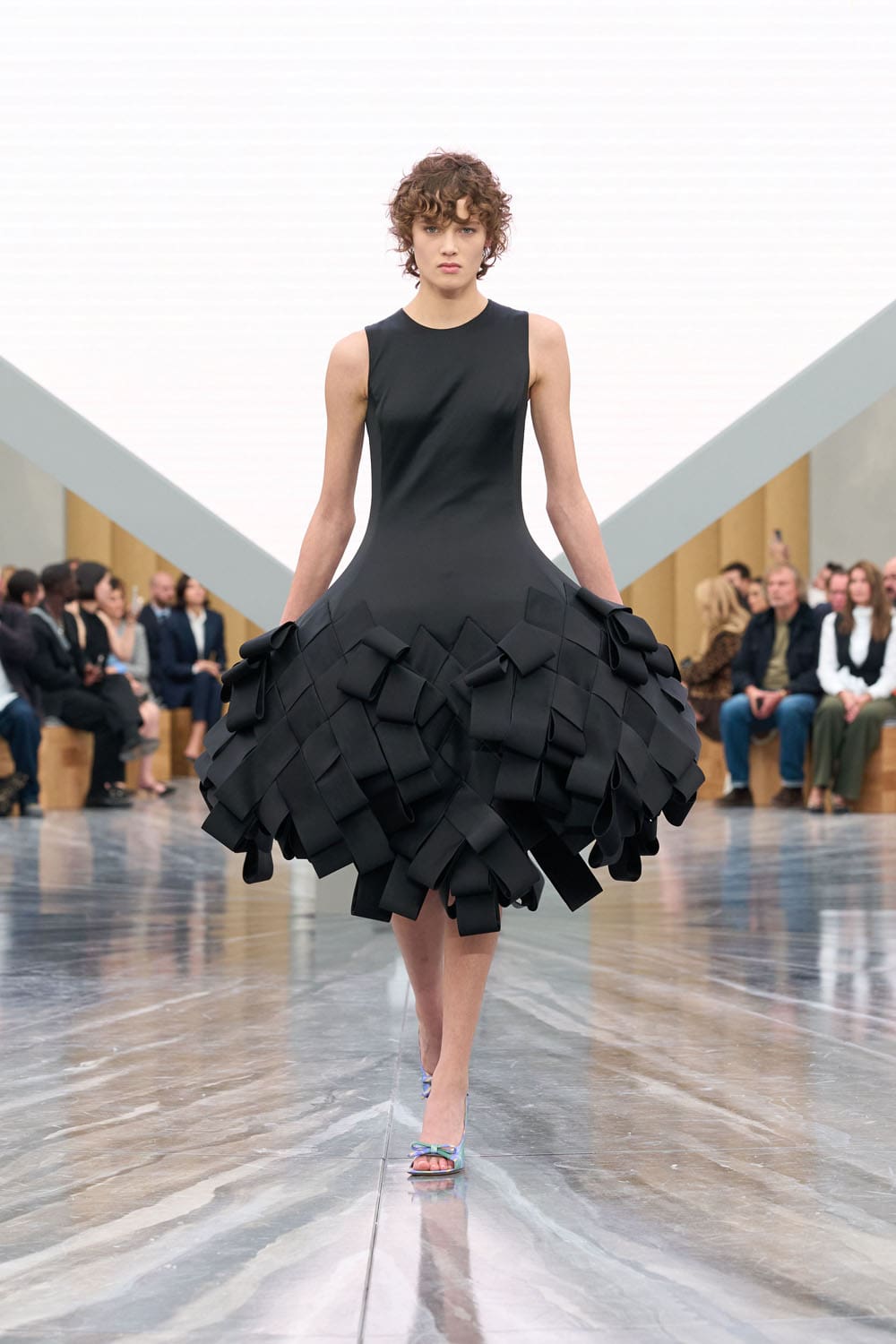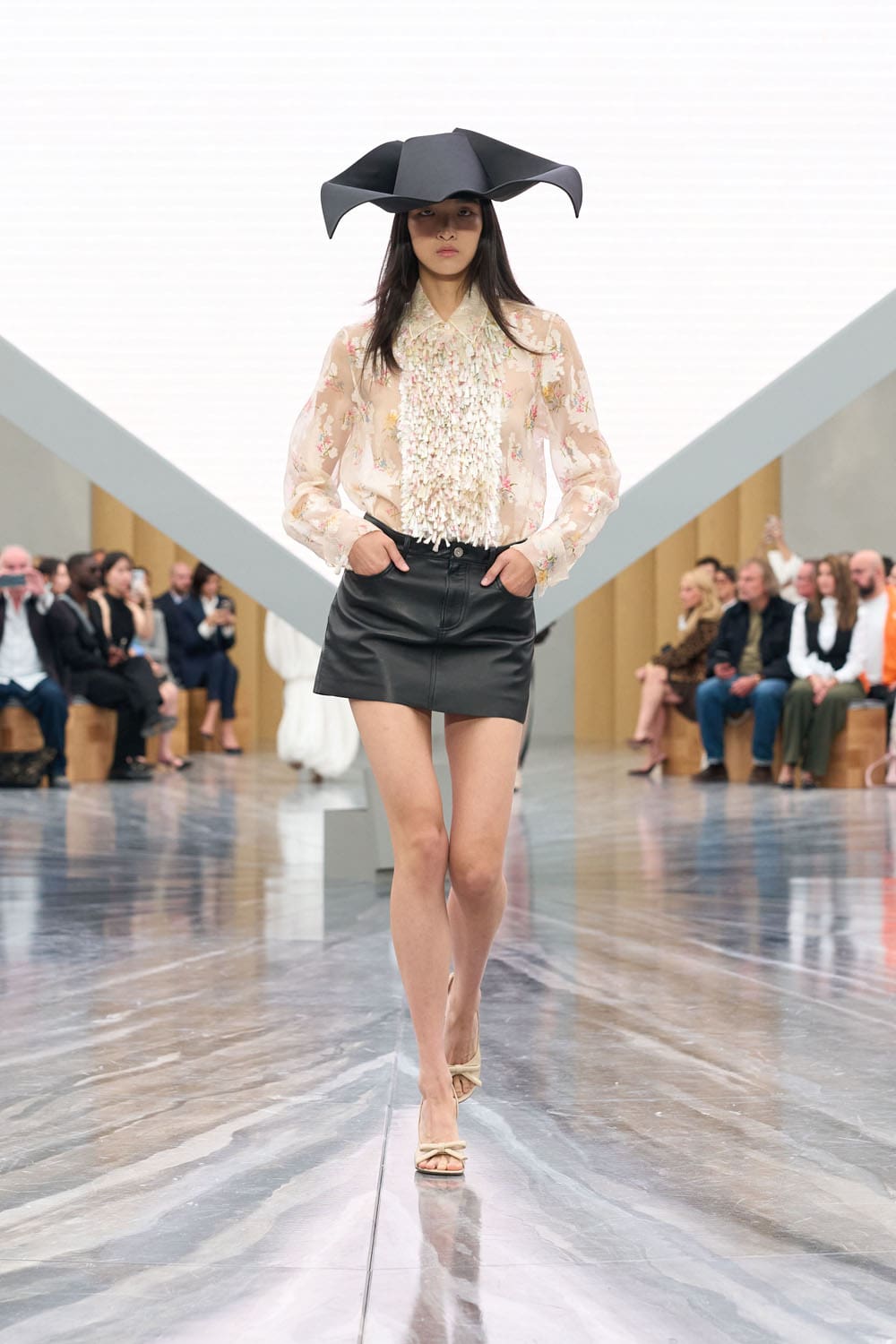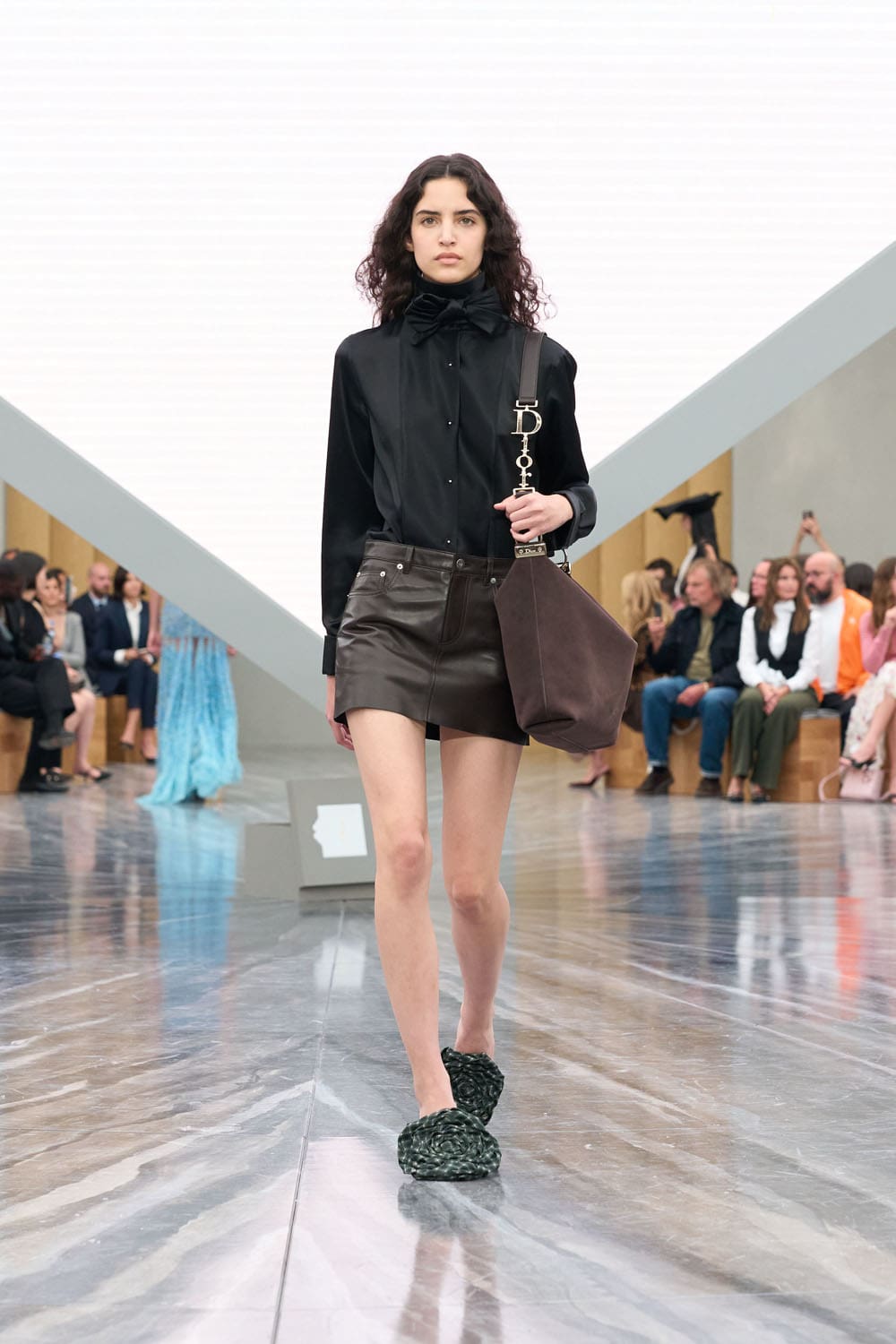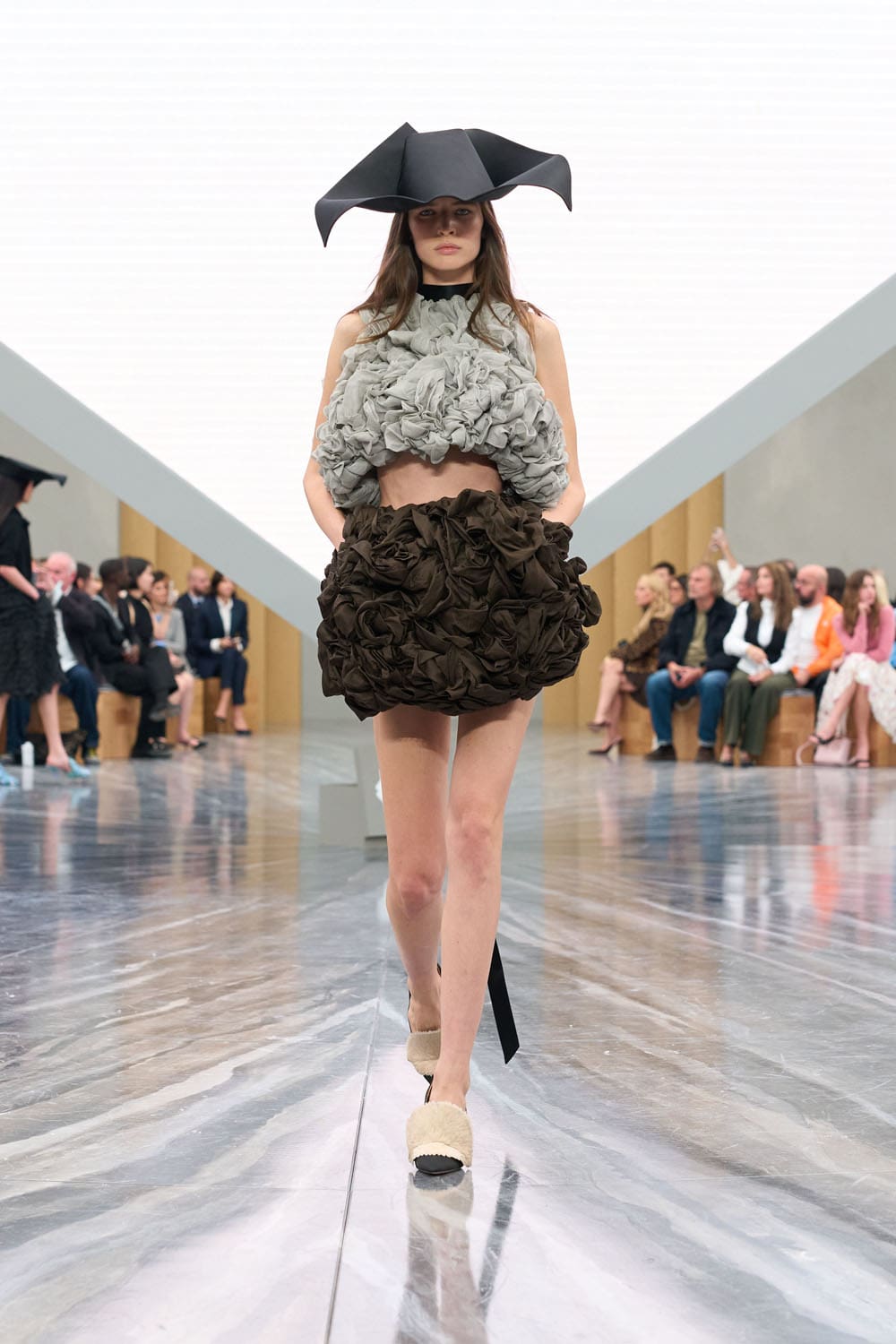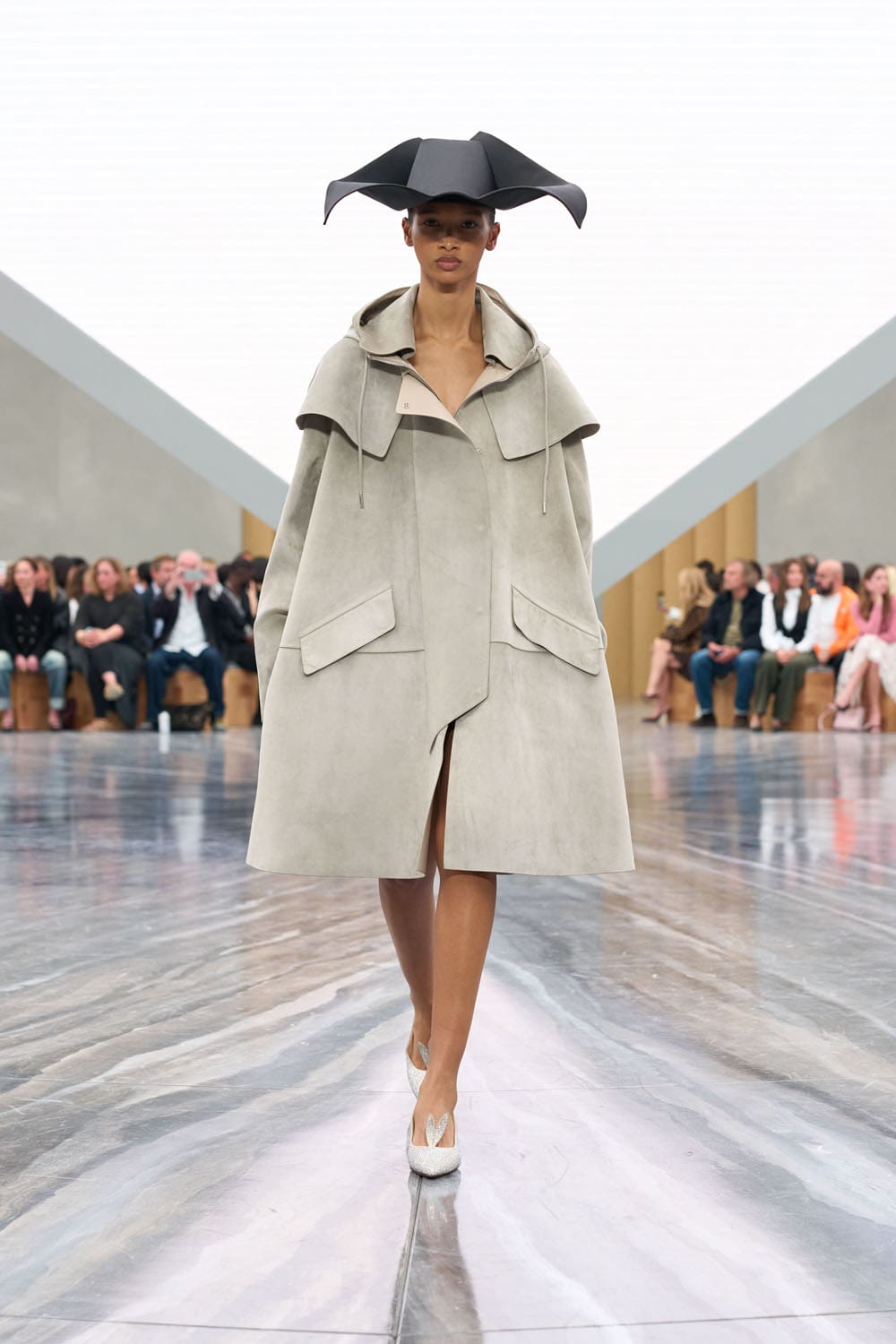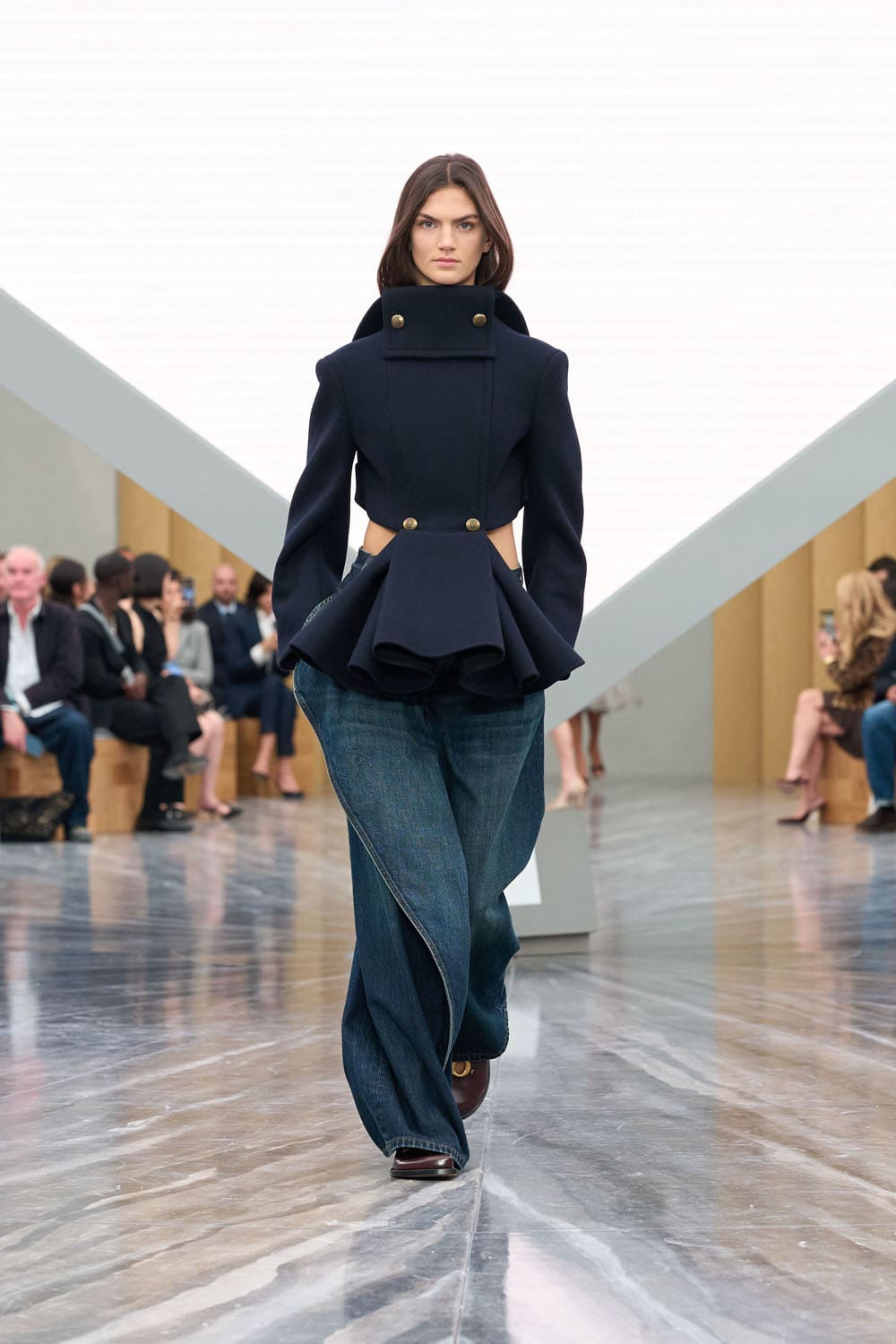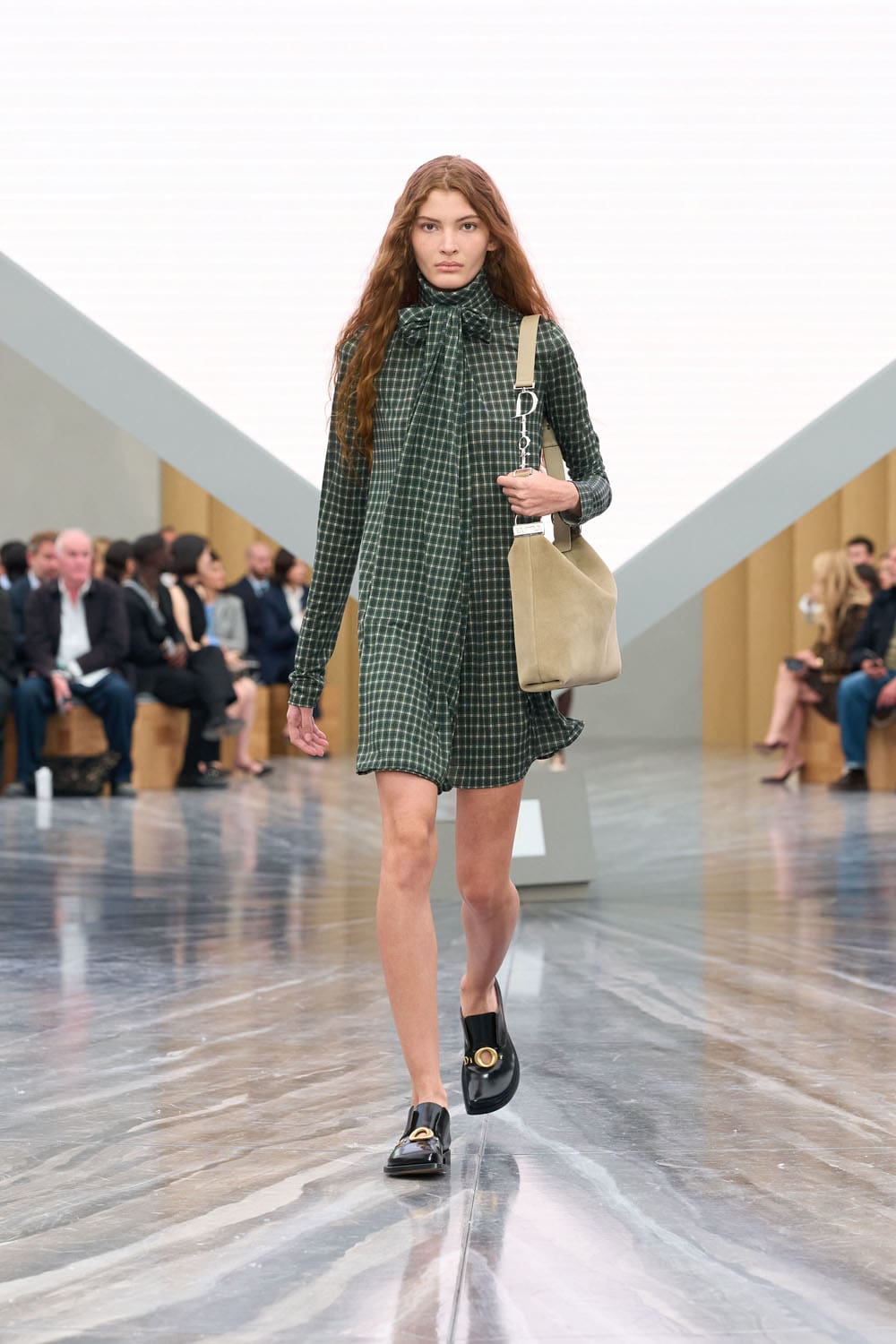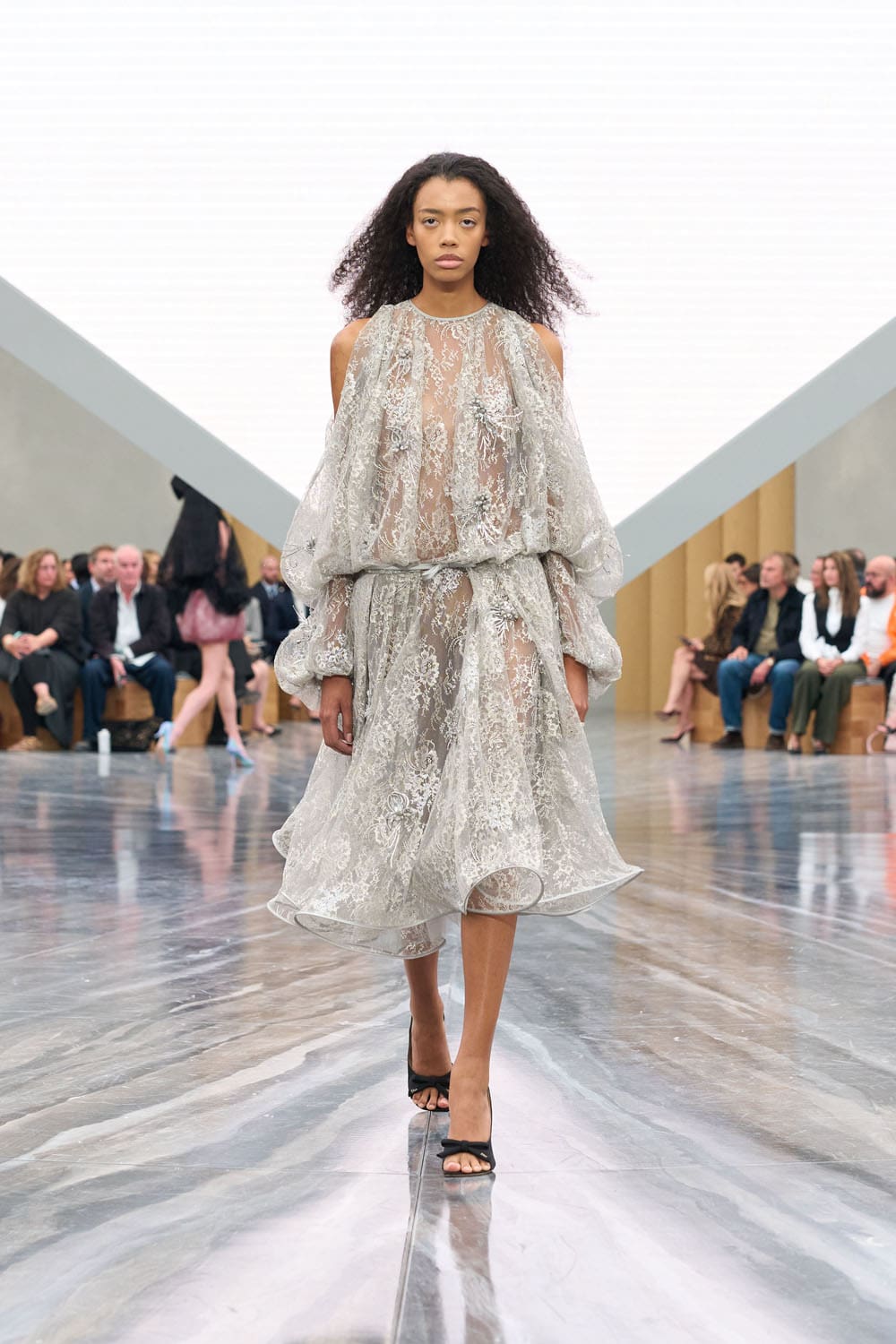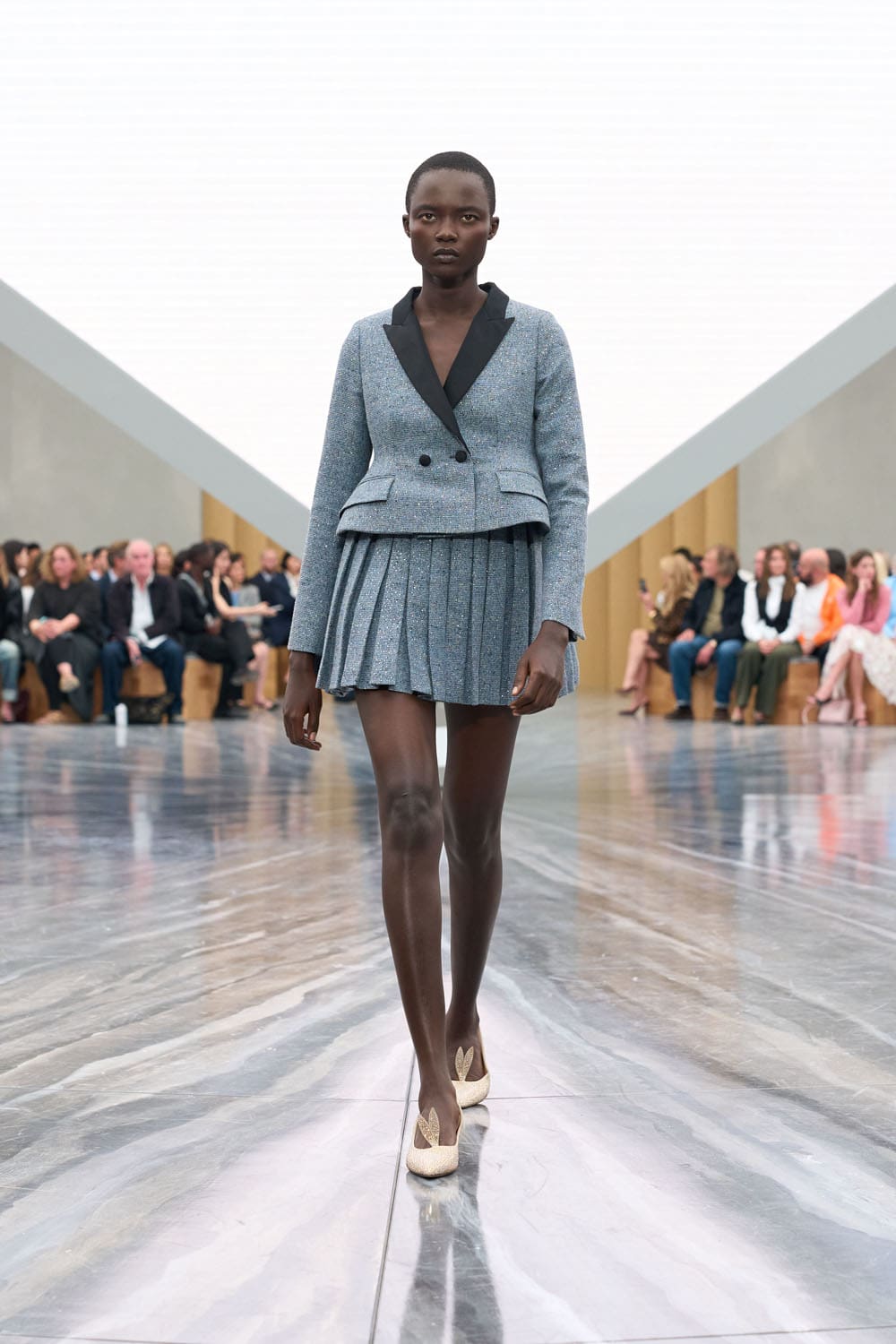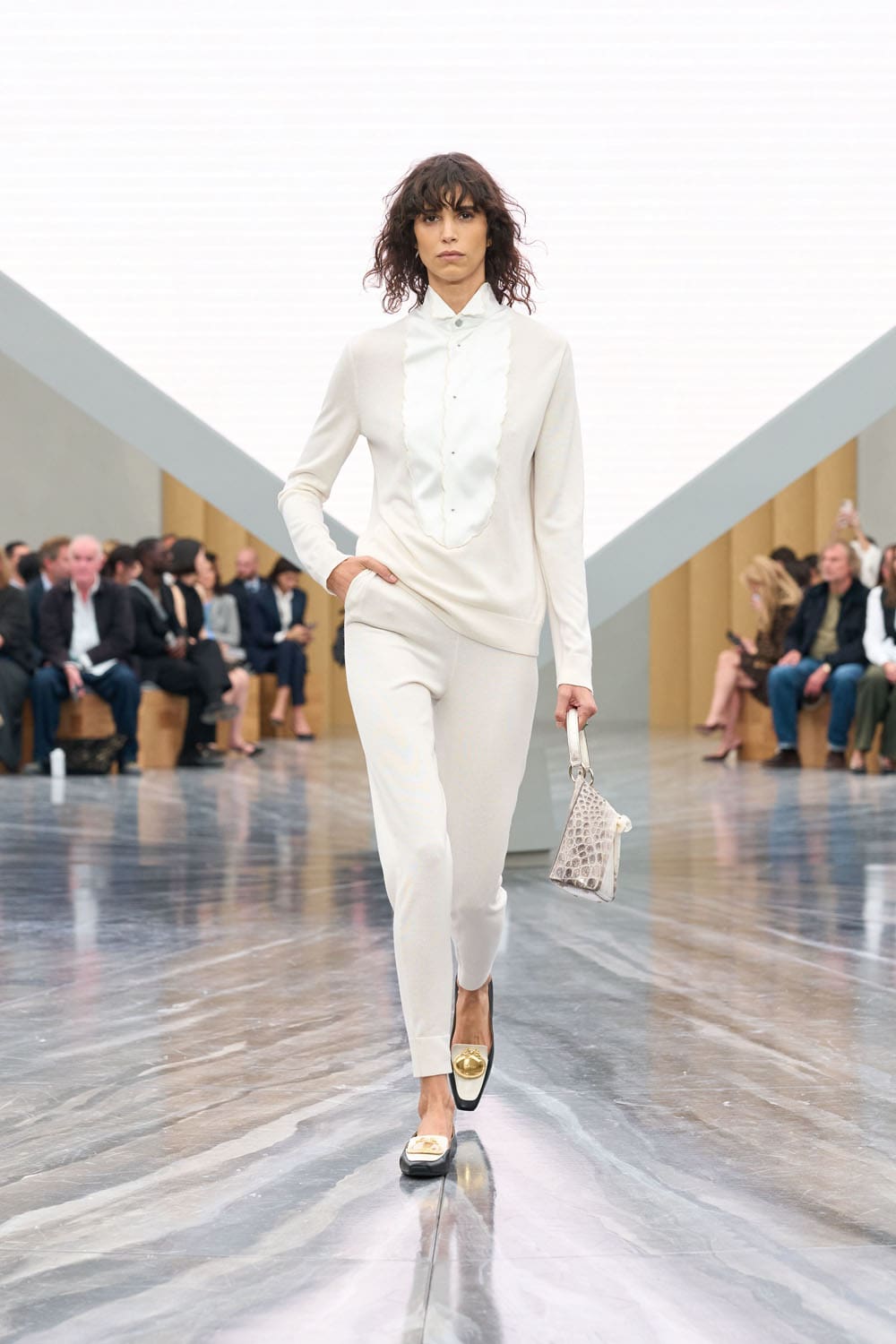Dior Spring Summer 2026 by Jonathan Anderson. Review by Eleonora de Gray, Editor-in-Chief of RUNWAY MAGAZINE. Photo / Video Courtesy: Dior.
The House of Dior has a long memory. A memory so rich, so potent, that one does not simply design for Dior — one converses with it. This season, Jonathan Anderson stepped into that rarified conversation, not with flamboyance, not with rebellion, but with careful recalibration. His debut for Dior Spring Summer 2026 is not a revolution — not yet — but it may well be a considered prelude to one.
Anderson’s first act was not on the runway but on the screen. A pre-show film revisited the House’s storied past, presenting it not as burden but as architecture. It acknowledged what many new creative directors try to escape: that Dior’s aesthetic is not an aesthetic — it’s an institution. Christian Dior’s silhouette, his New Look, his structured femininity, his belief in elegance as a cultural force — all of this was laid bare before a single model walked.
And when they did walk, they walked into an edited reality.
“Designing for a house like Dior requires an empathy with its history while forging a path forward” – Jonathan Anderson
This collection is contemporary, certainly — sculptural tailoring, neutral palettes, flashes of futurism. But it did not feel present in the way Christian Dior understood elegance. There was restraint, and yet it leaned away from that impeccable precision and grace that once defined the Dior woman. Instead, Anderson offered a silhouette in tension — lines drawn in sand rather than cut in stone.
There were choices that asked for interpretation. The hats, for instance, large and somewhat ecclesiastical, echoed the solemnity of Catholic iconography — particularly headwear associated with nuns. Rendered in black and grey, their symbolism felt ambiguous. Were they mourning the past? Or consecrating a new direction?
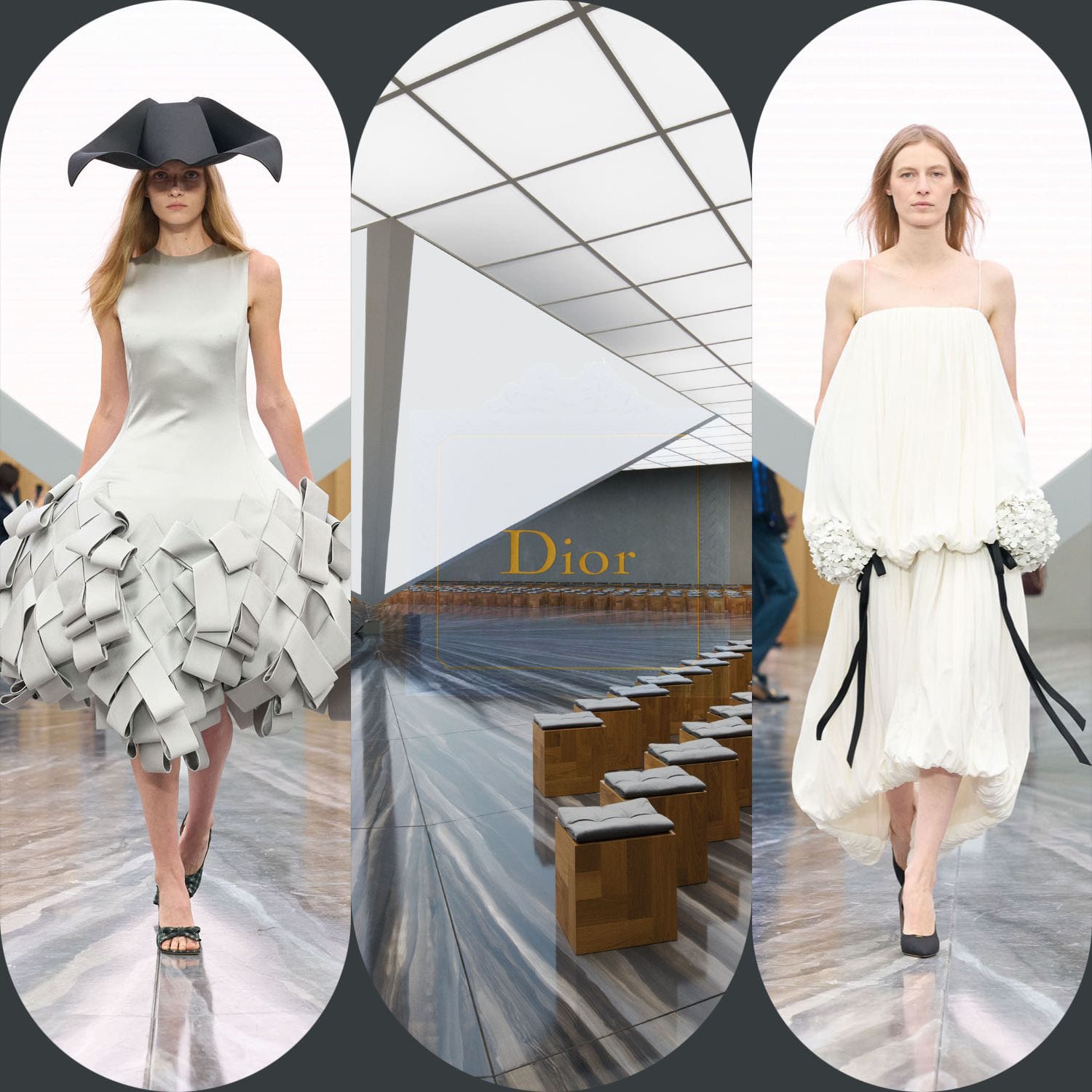
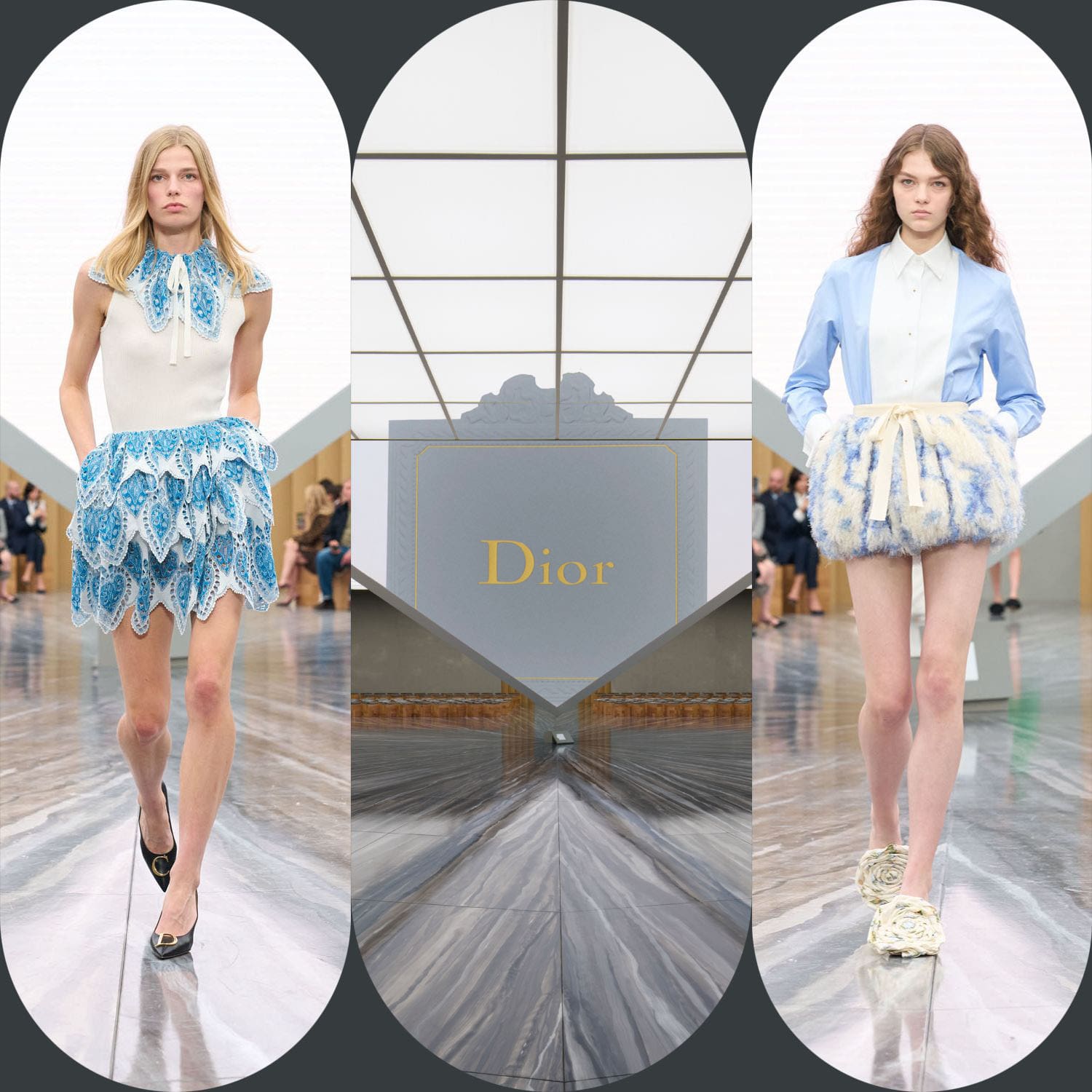
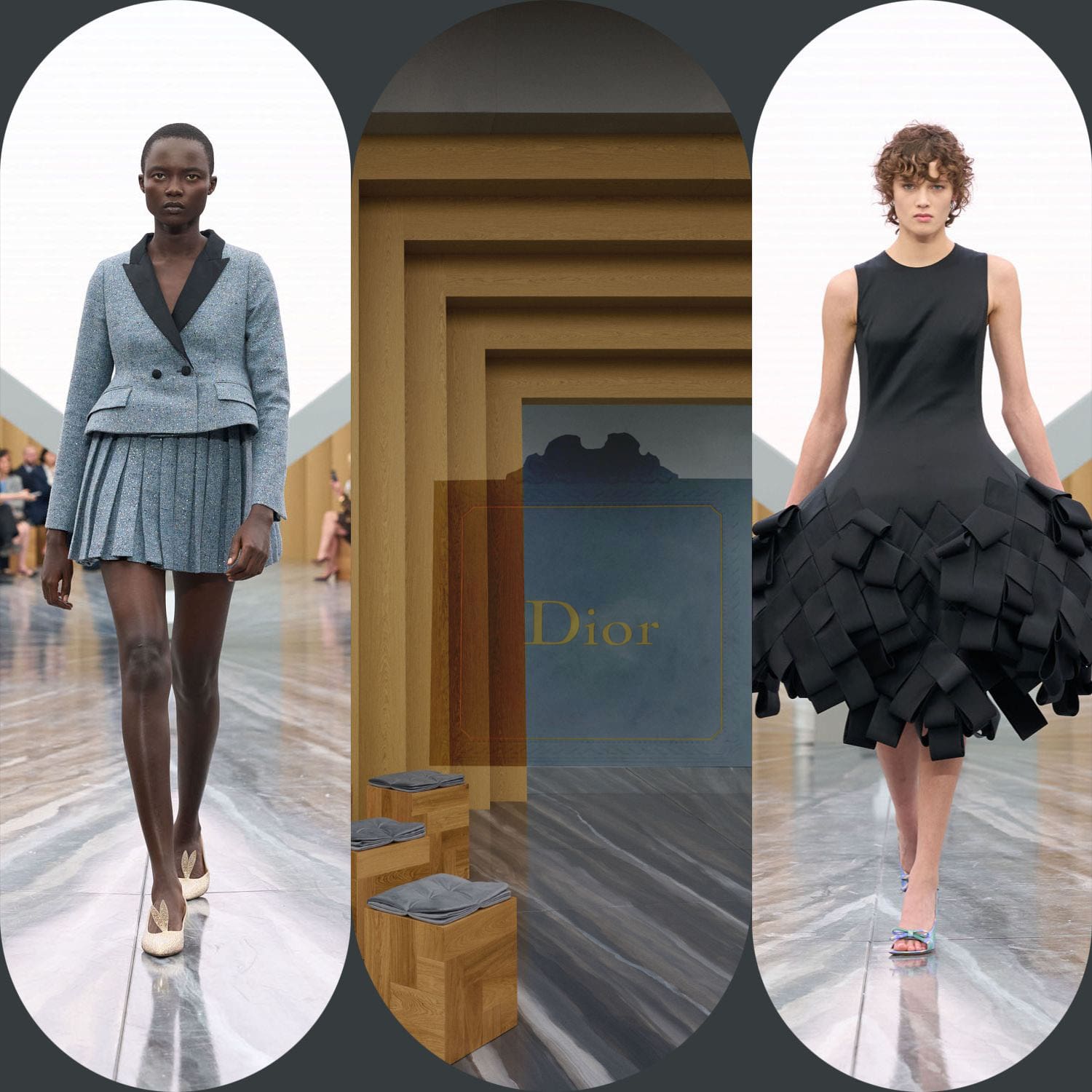
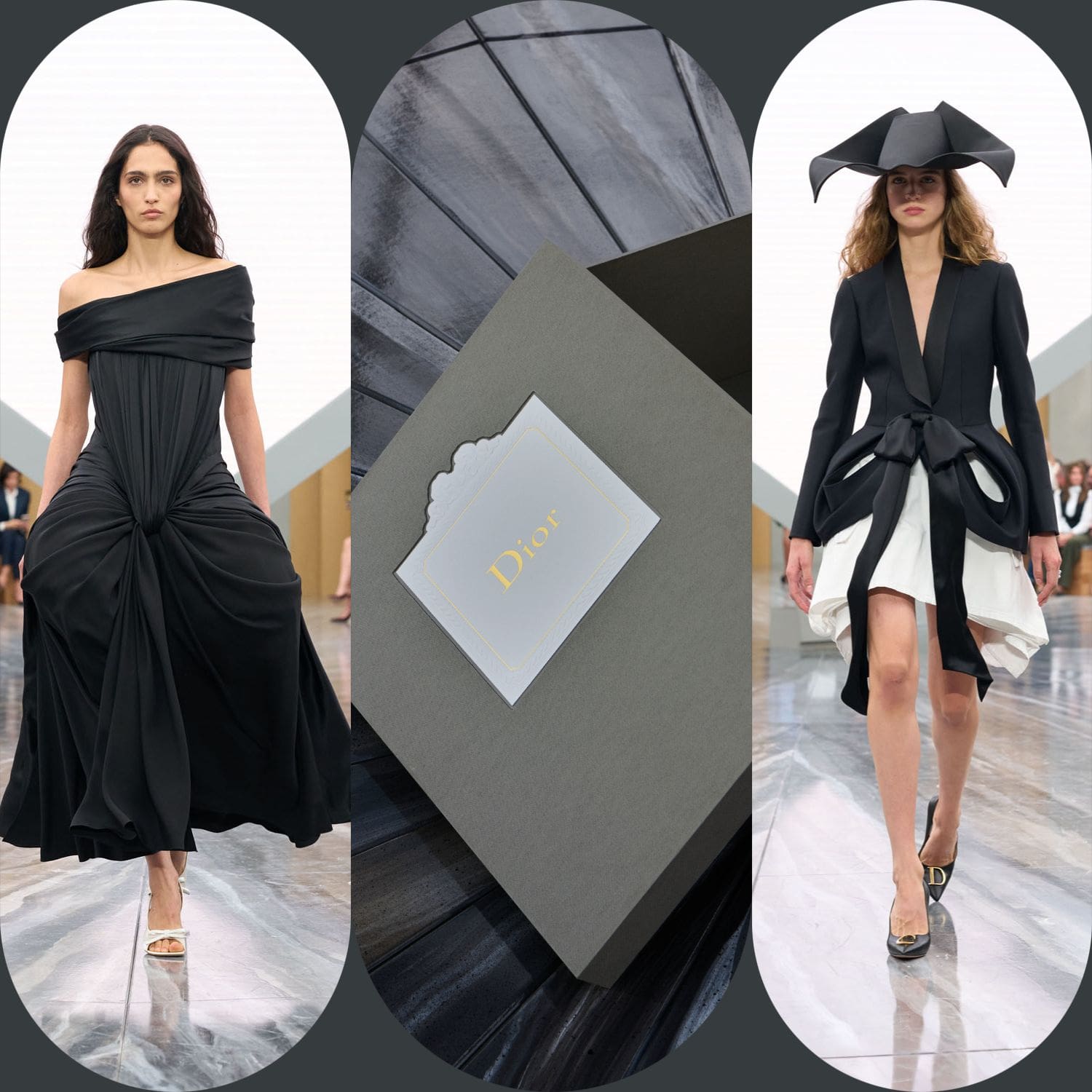
Still, one cannot ignore the labor of thought behind this collection. Anderson did not reference Dior’s past — he attempted to store it, to archive it in plain sight. His own words say as much: “Not to erase it, but to store it… revisiting memories.” This is not nostalgia. It is controlled fragmentation — memory as material.
The silhouettes spoke in dual tones: harmony and rupture, elegance and utility, ornament and severity. There was a poetic violence in the way history was folded — or perhaps boxed — into the garments. Some pieces felt as though they were trying to remember something they hadn’t quite lived.
At the heart of the collection stood one unmistakable echo: the Junon dress. One of the most famous gowns in couture history, Christian Dior’s original masterpiece — with its cascading petals and sculptural drama — was reimagined with radical simplicity. Anderson’s interpretation stripped it bare: slick, sleeveless, and scaled down into something that evoked fishskin rather than flowers. The result? A silhouette that read more like a little mermaid with a black bow — an almost mythic figure crossing British aristocracy with a negligent, nonchalant modernity. It was neither homage nor satire, but something more elusive: a quiet reframing of grandeur.
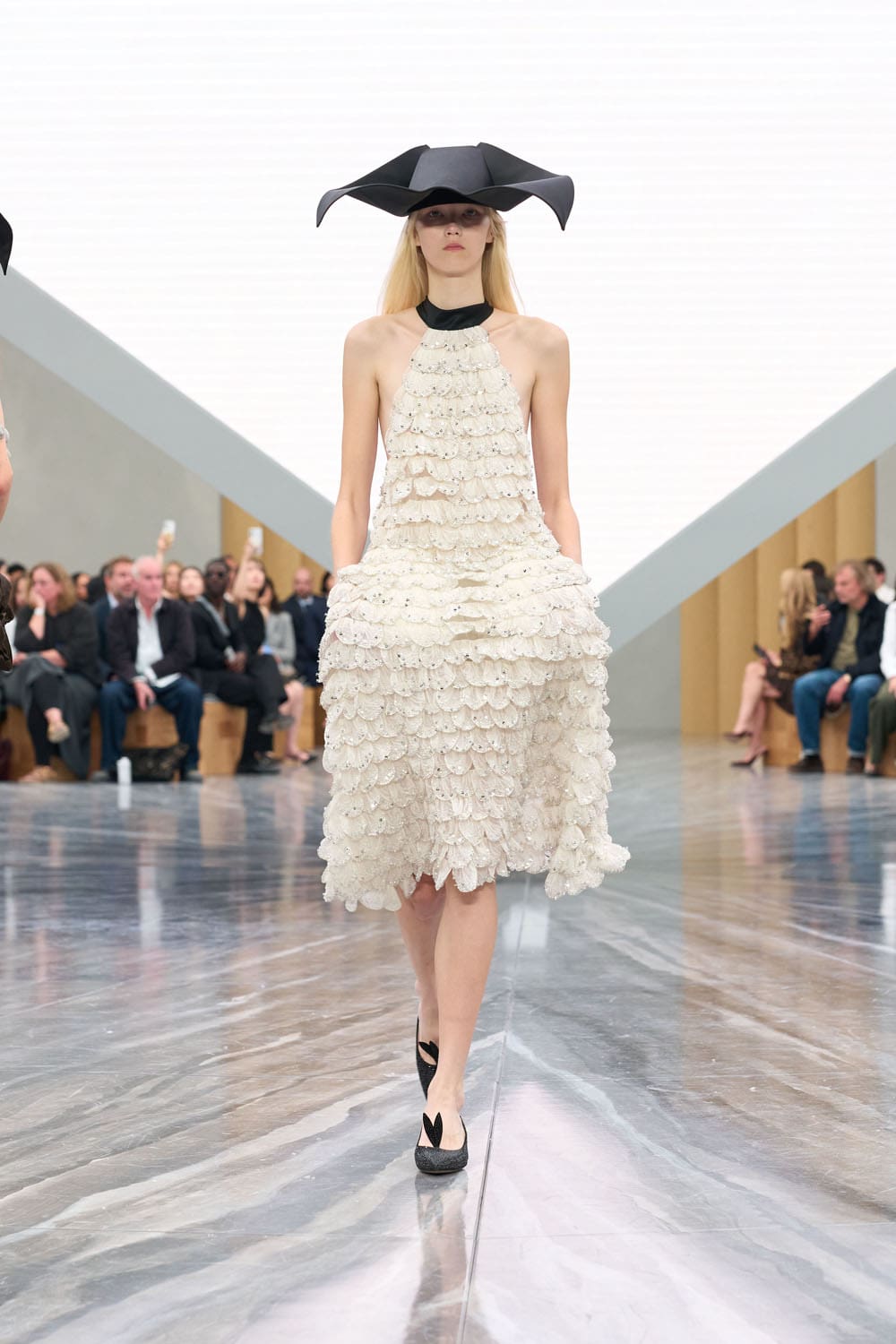
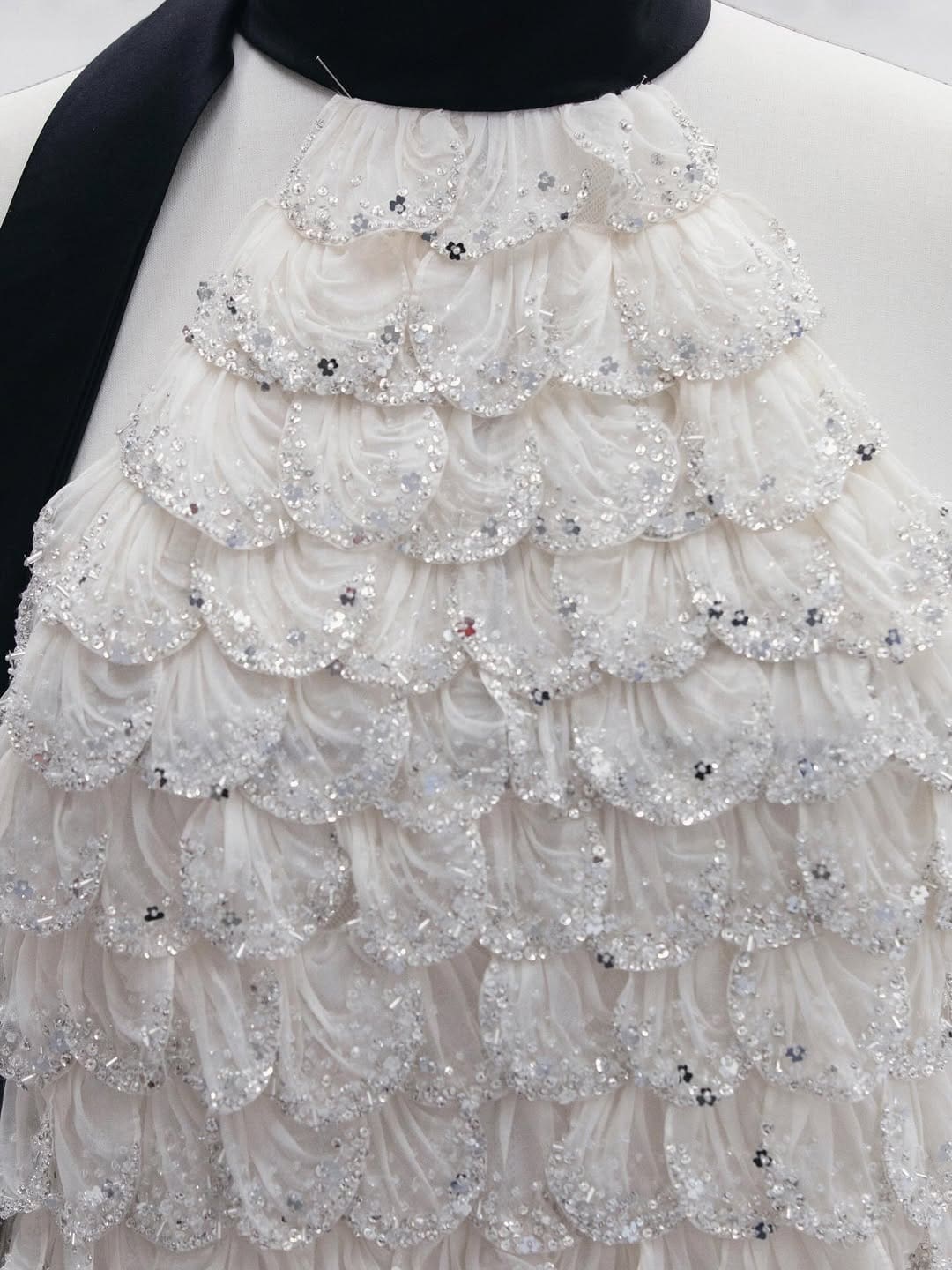
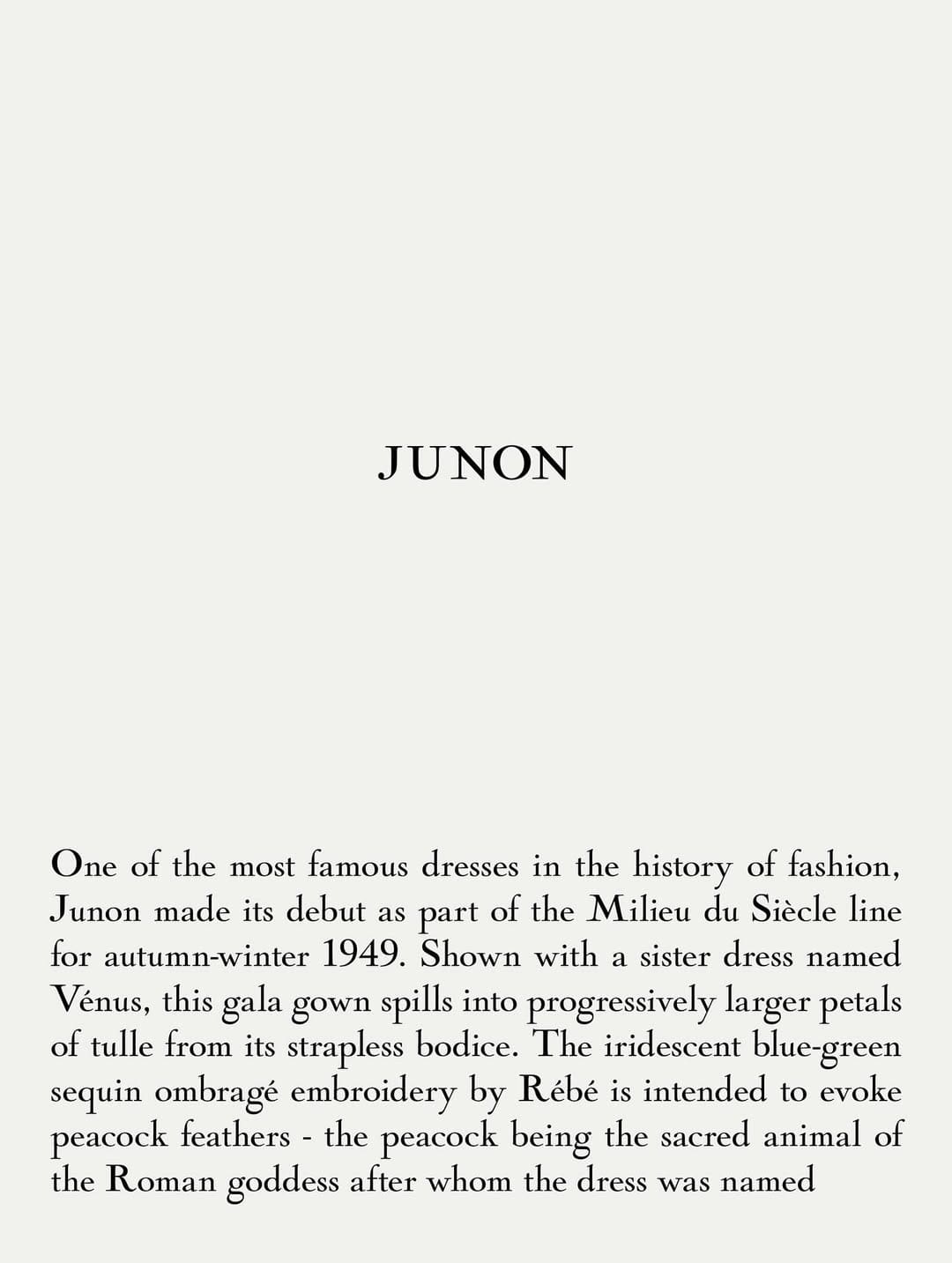
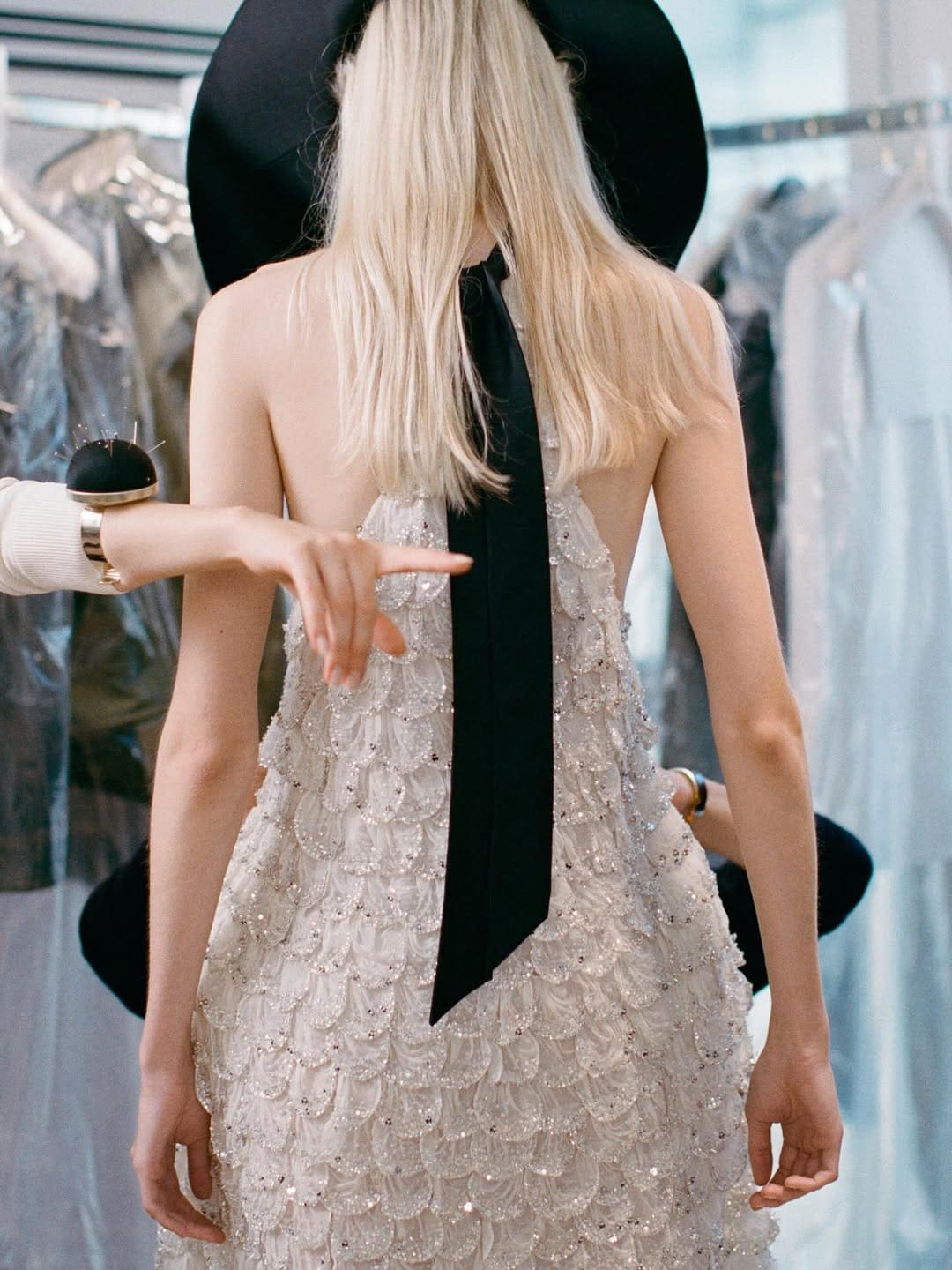
Is this a beginning? Perhaps. But it is not a blank slate. Anderson has stepped into Dior not as a disruptor, but as a translator. And translation — as anyone who works with language knows — is an imperfect, difficult, and often revealing process.
There is work here. And work, when done in good faith, deserves observation, not instant judgment. Dior SS26 may not have dazzled in the conventional sense, but it did what many debuts fail to do: it respected the gravity of the House. And perhaps, in a season or two, it may begin to lift it in new directions.
We wait. We observe. We allow change. Because change, as Anderson reminds us, is inevitable.
See All Looks Dior Spring Summer 2026
